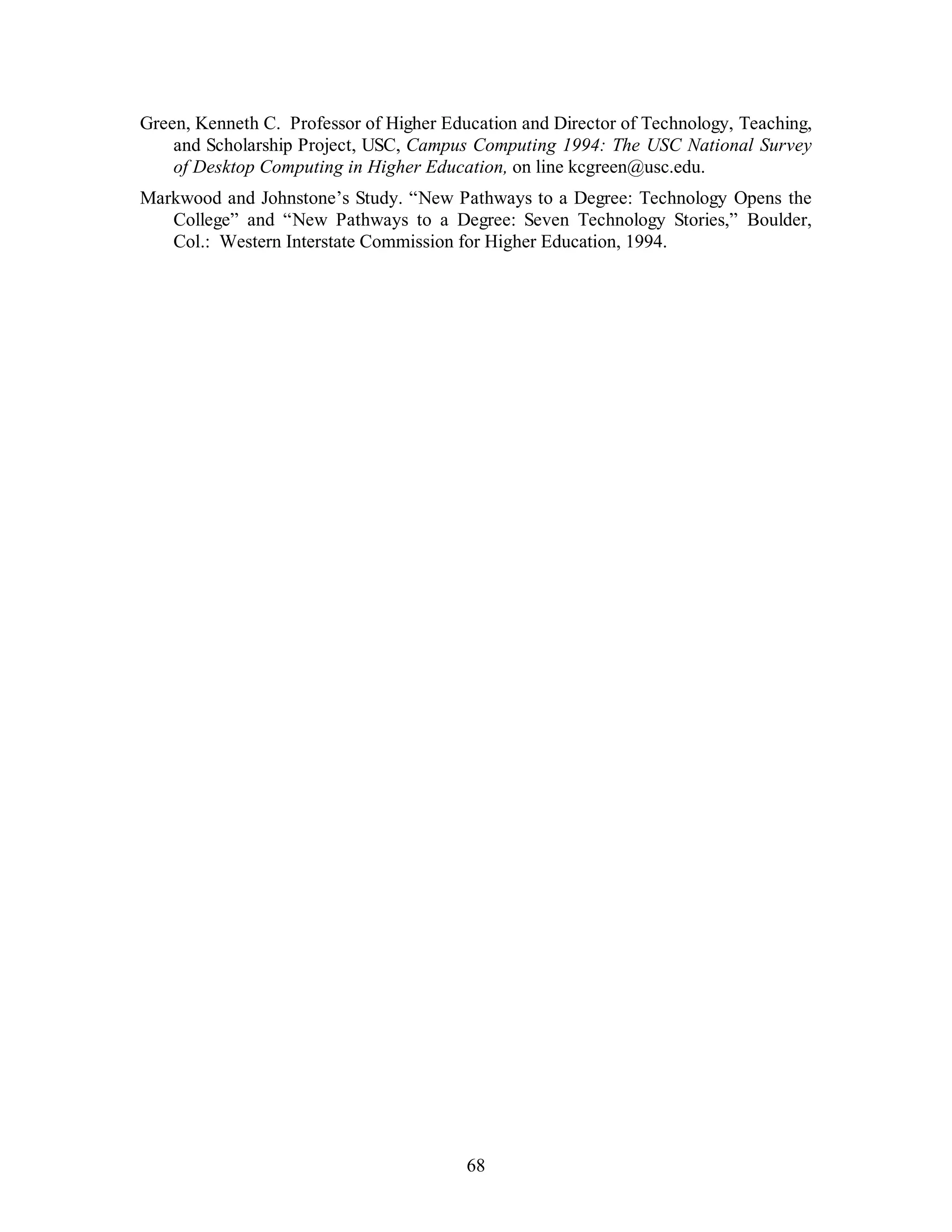This document discusses the future goals and mission of education and training in the Air Force of 2025. It argues that while the overall mission will remain the same - to leverage human potential through preparing warriors - the goals will evolve due to increased reliance on information technology. The goals will focus on developing "brilliant warriors" with characteristics like being experts in joint operations, able to solve problems creatively, and having a habit of continuous learning. While training will focus on specific skills, education will focus more on intellectual development. Both education and training will need to shift from separate programs to integrated learning systems using new technologies. This will blur the traditional lines between education and training.
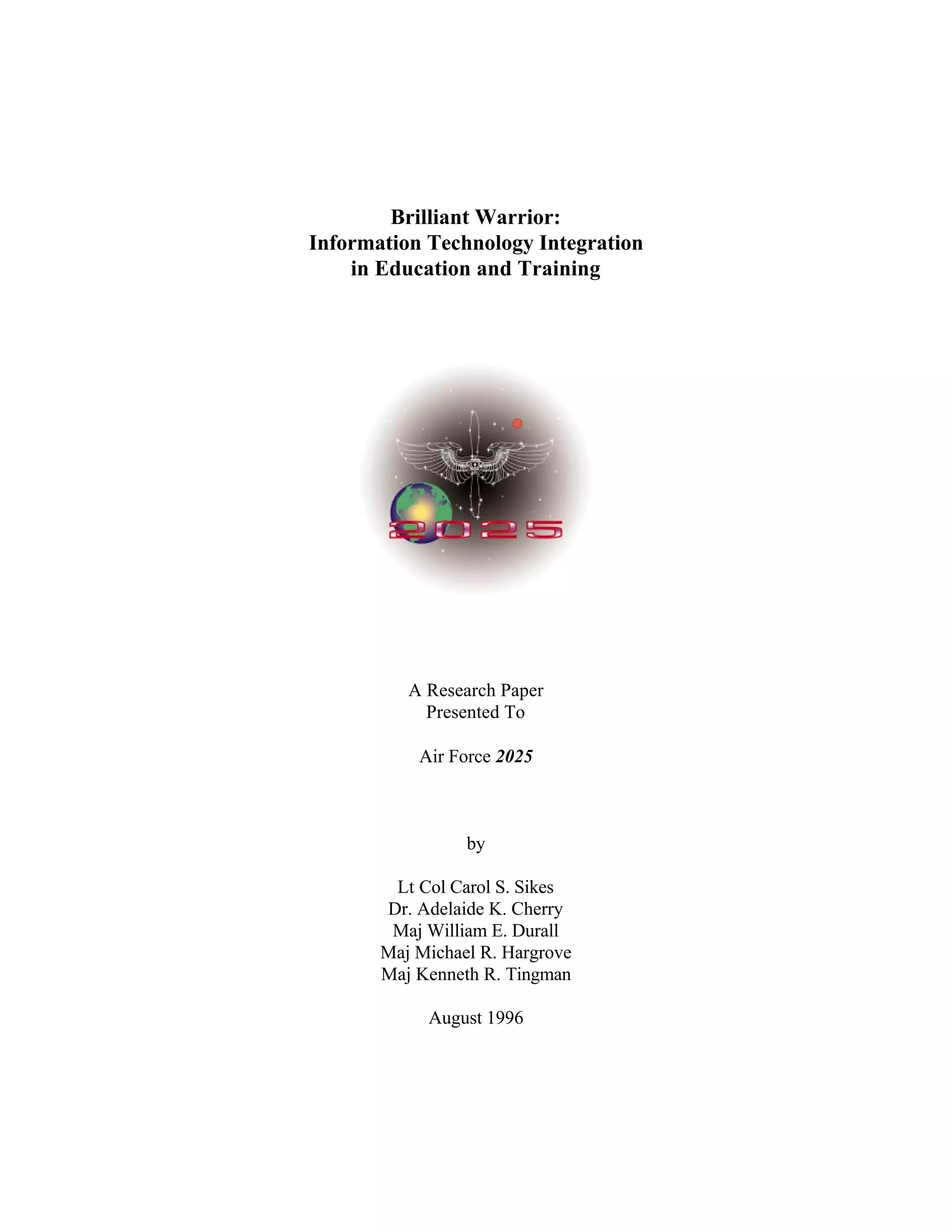
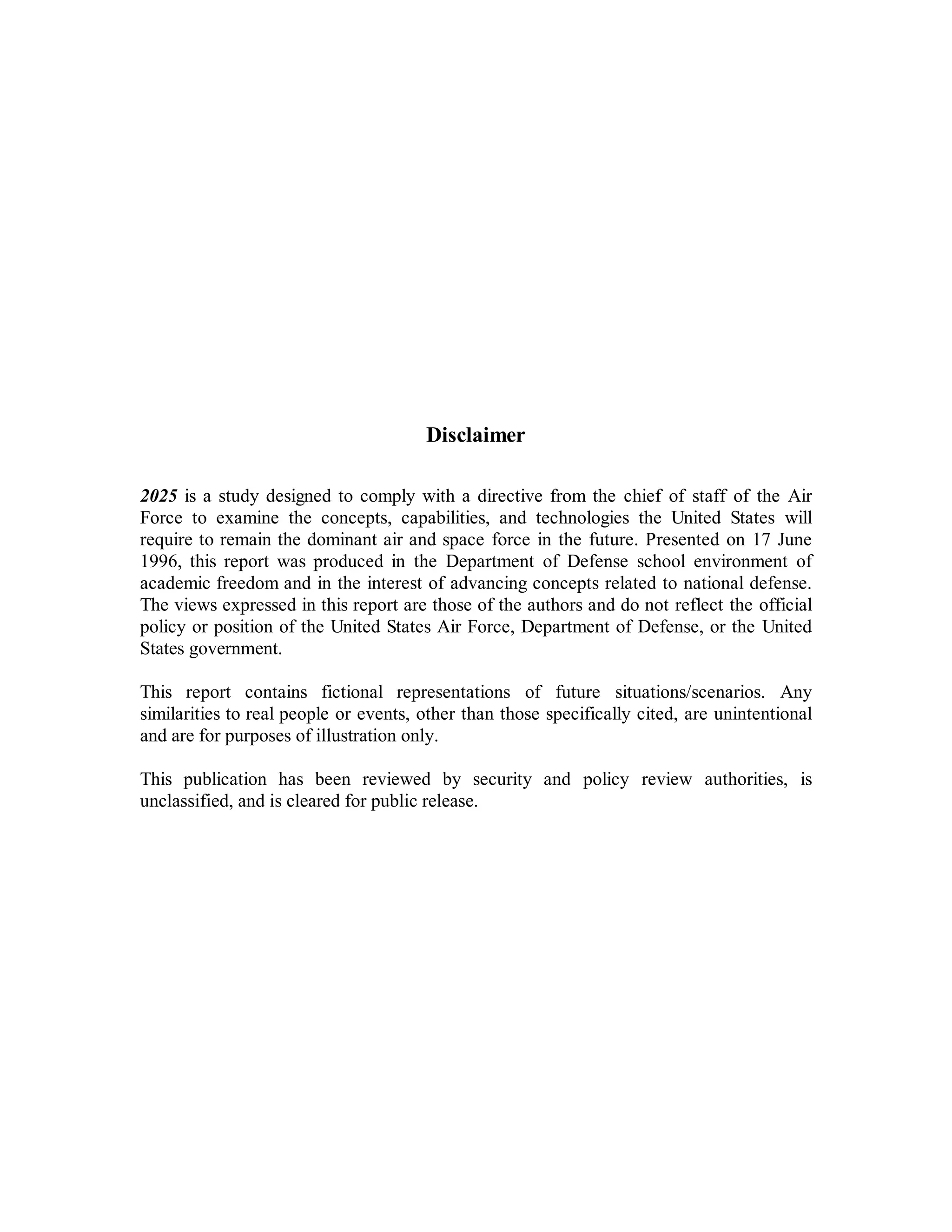

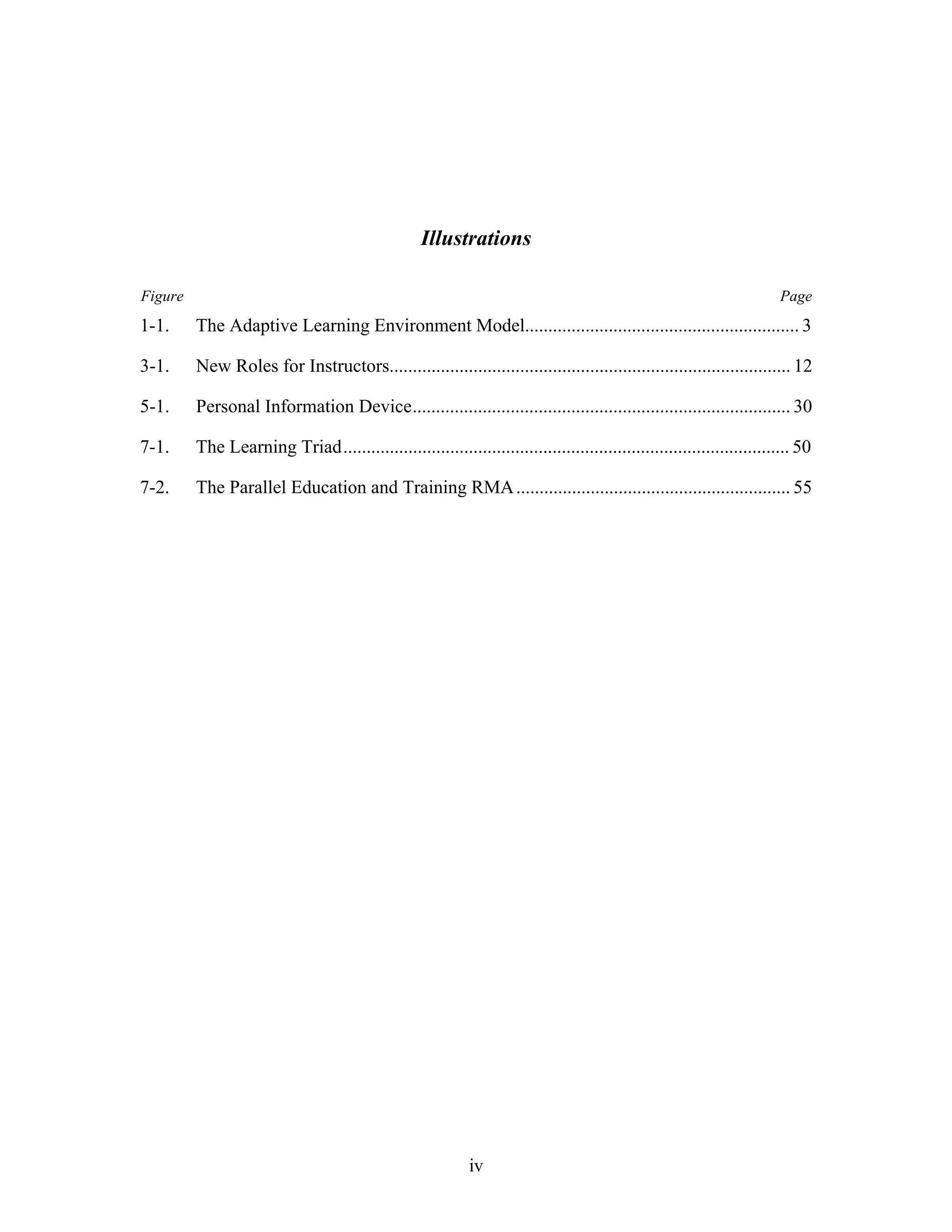
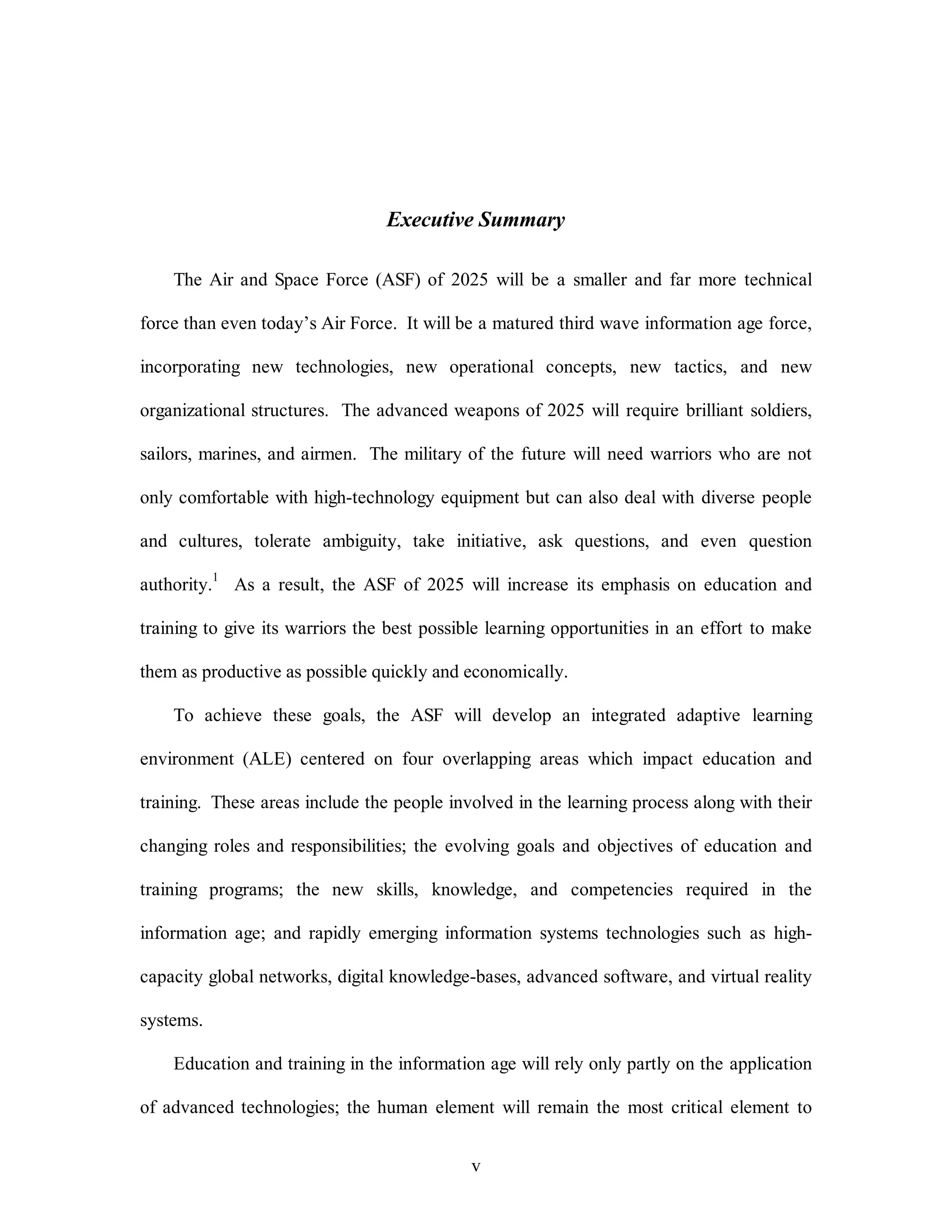
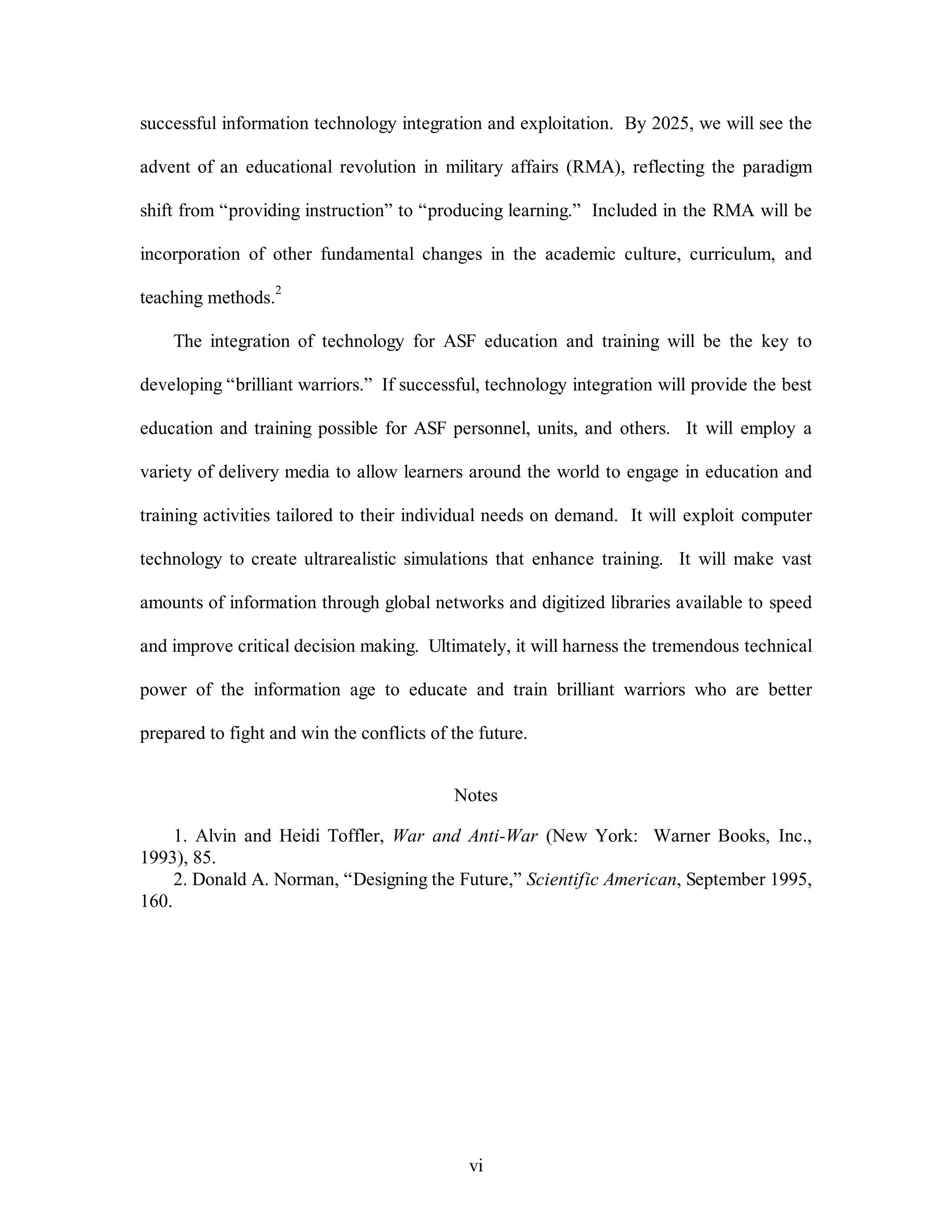
![Chapter 1
Introduction
Computing is not about computers any more. It is about living. . . . We
have seen computers move out of giant air-conditioned rooms into
closets, then onto desks, and now into our laps and pockets. But this is
not the end.
–Nicholas Negroponte, Being Digital
In 1996, we celebrated the 50th birthday of the first electronic computer. Since then
computers have progressed rapidly, and recently our lives have been flooded with
advances in information technology. Nicholas Negroponte, professor of media
technology at MIT, highlights several examples of this phenomenon:
Thirty five percent of American families and 50 percent of American
teenagers have a personal computer at home; 30 million people are
estimated to be on the Internet; 65 percent of new computers sold
worldwide in 1994 were for the home; and 90 percent of those to be sold
this year [1995] are expected to have modems or CD-ROM drives. These
numbers do not even include the 50 microprocessors in the average 1995
automobile, or the microprocessors in your toaster, thermostat, answering
machine, CD player, and greeting cards.1
Experts project that these explosive trends in information systems technology will
continue. Advances in the next 30 years through both public and private research,
development, and production efforts should result in a matured high-capacity global
information infrastructure (GII) by 2025. This GII will give virtually everyone
1](https://image.slidesharecdn.com/vol1ch10-140914105049-phpapp01/75/Vol1ch10-7-2048.jpg)
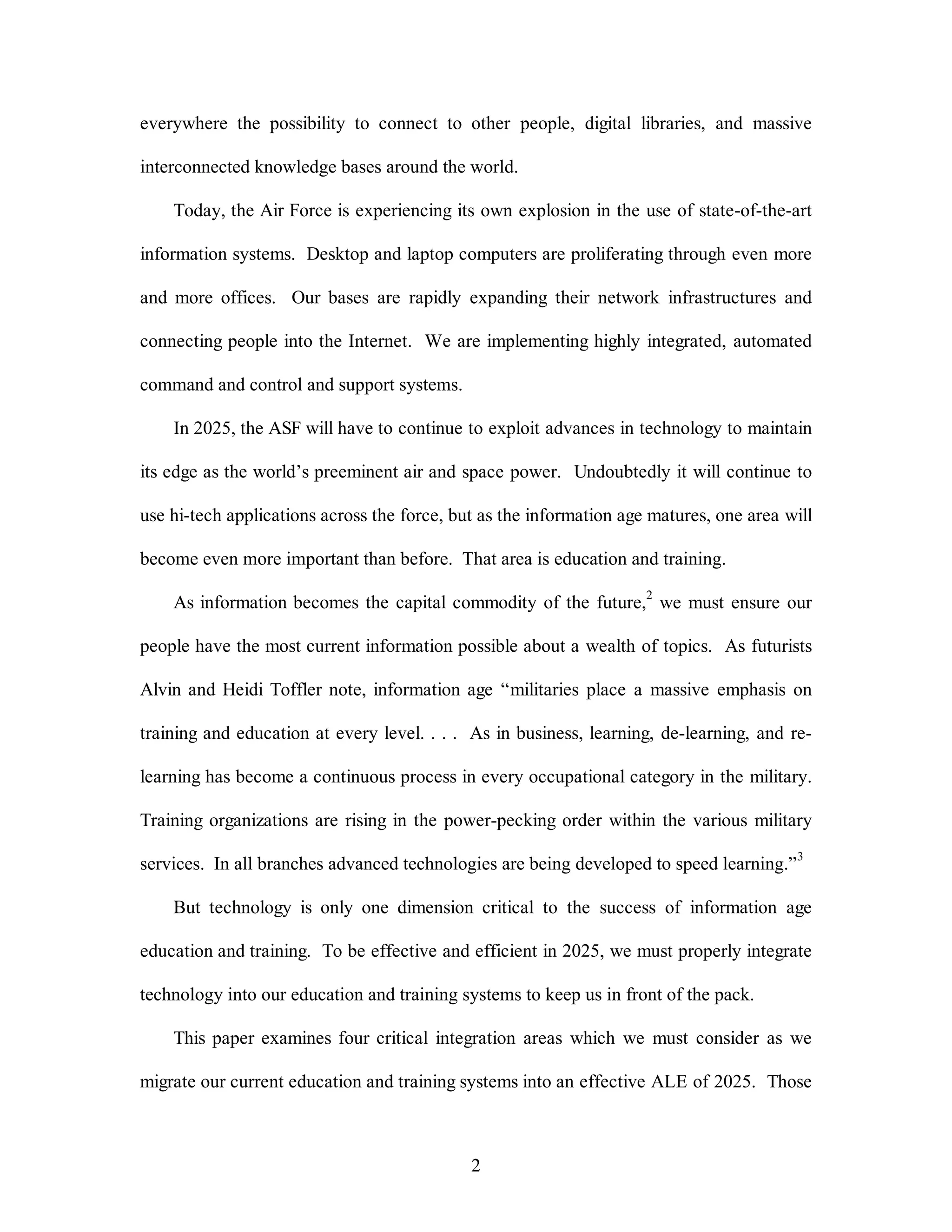
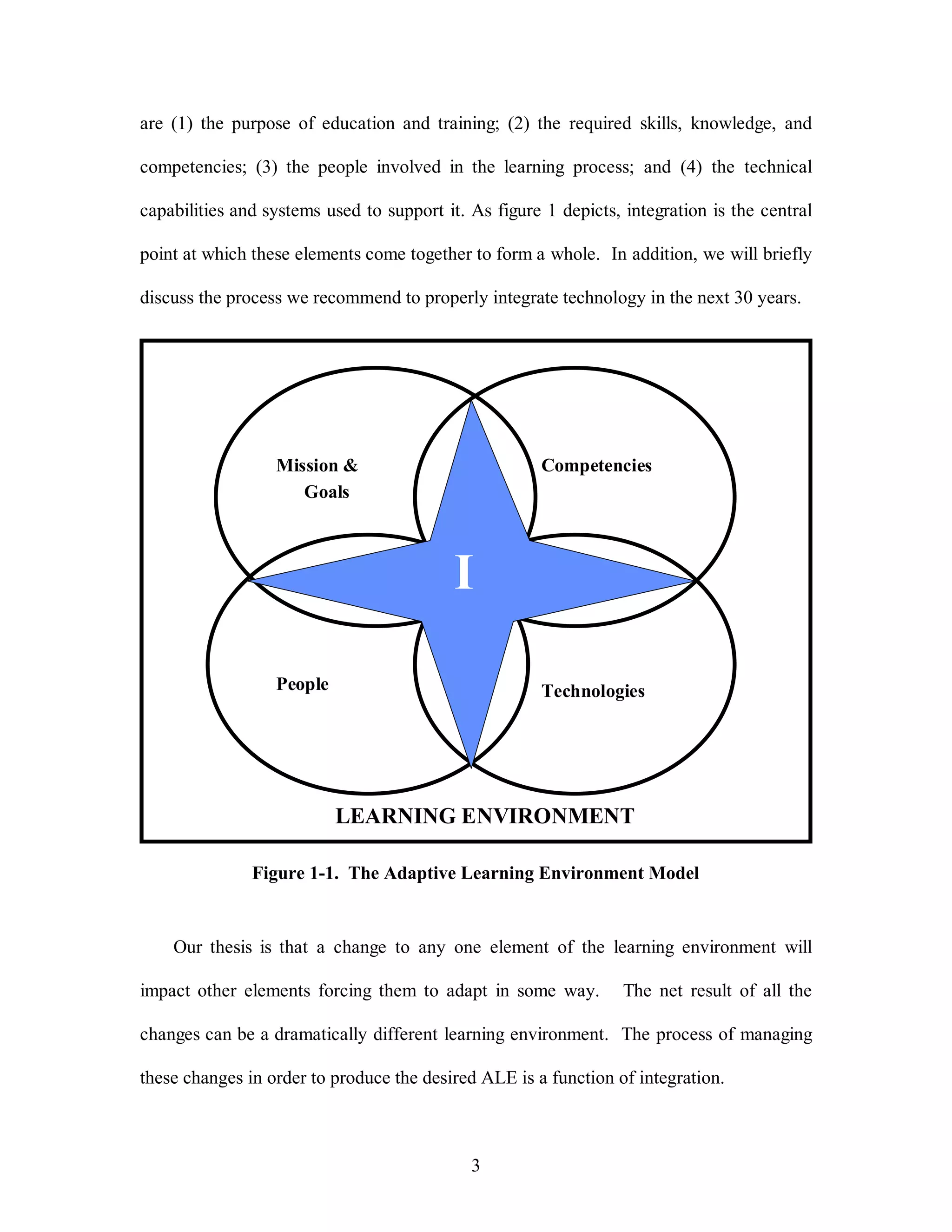
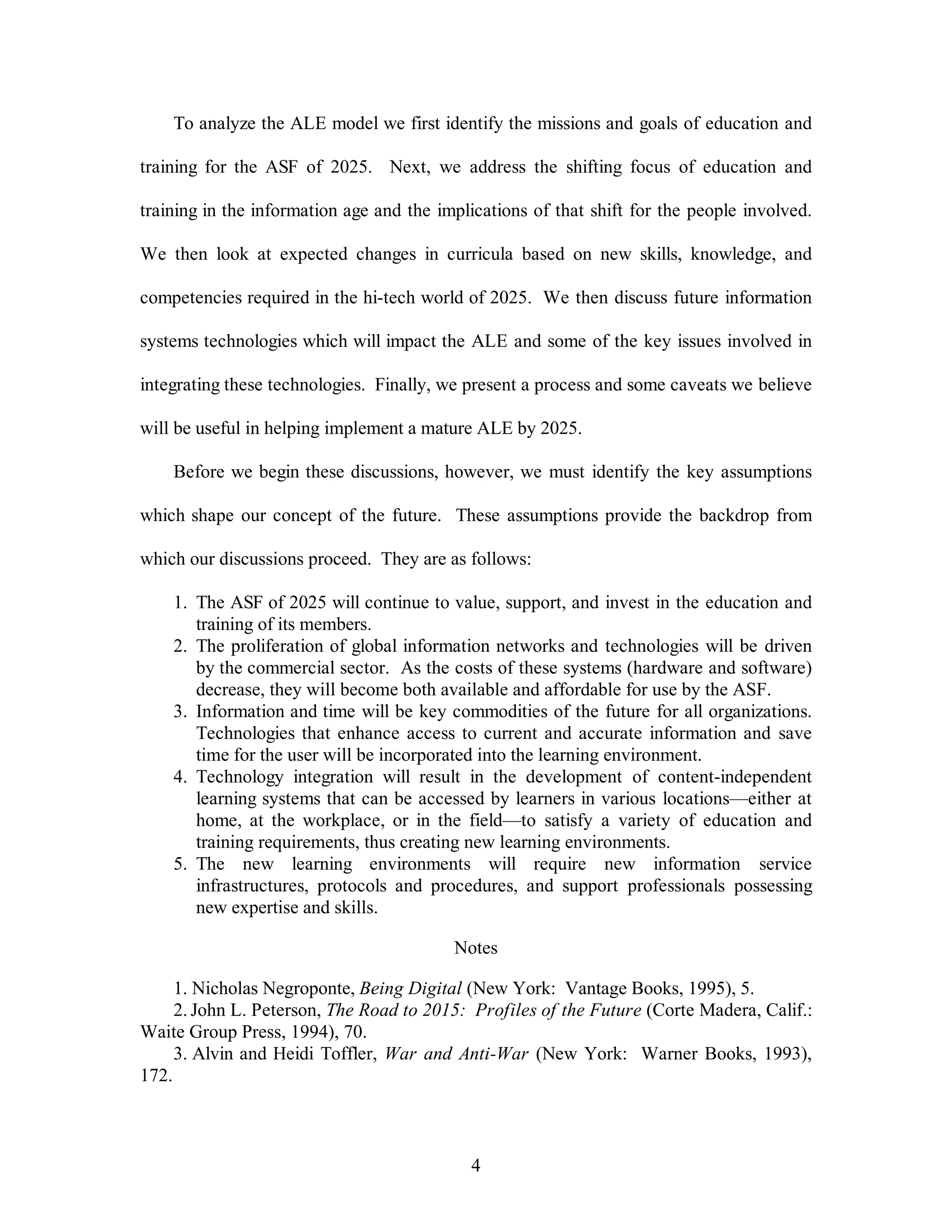
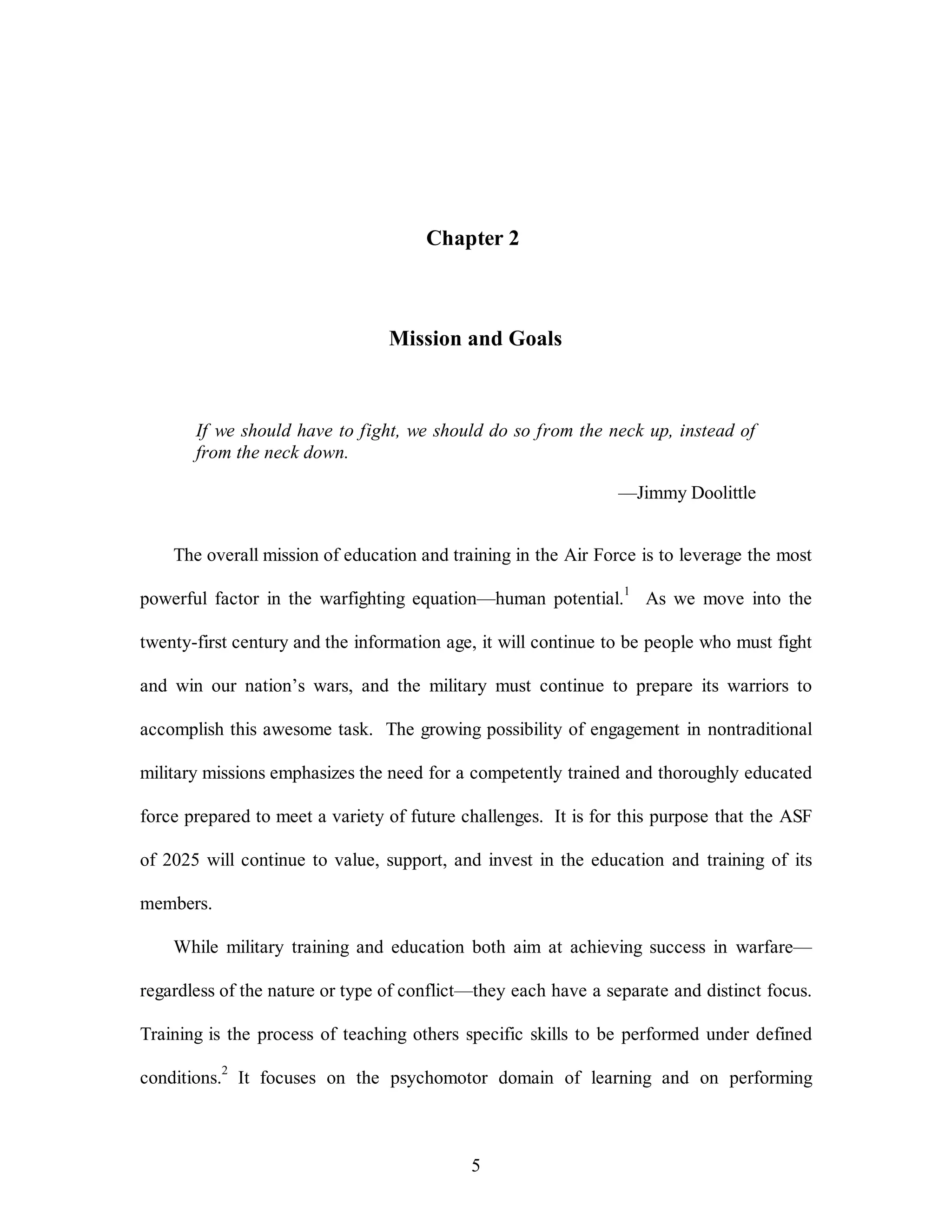
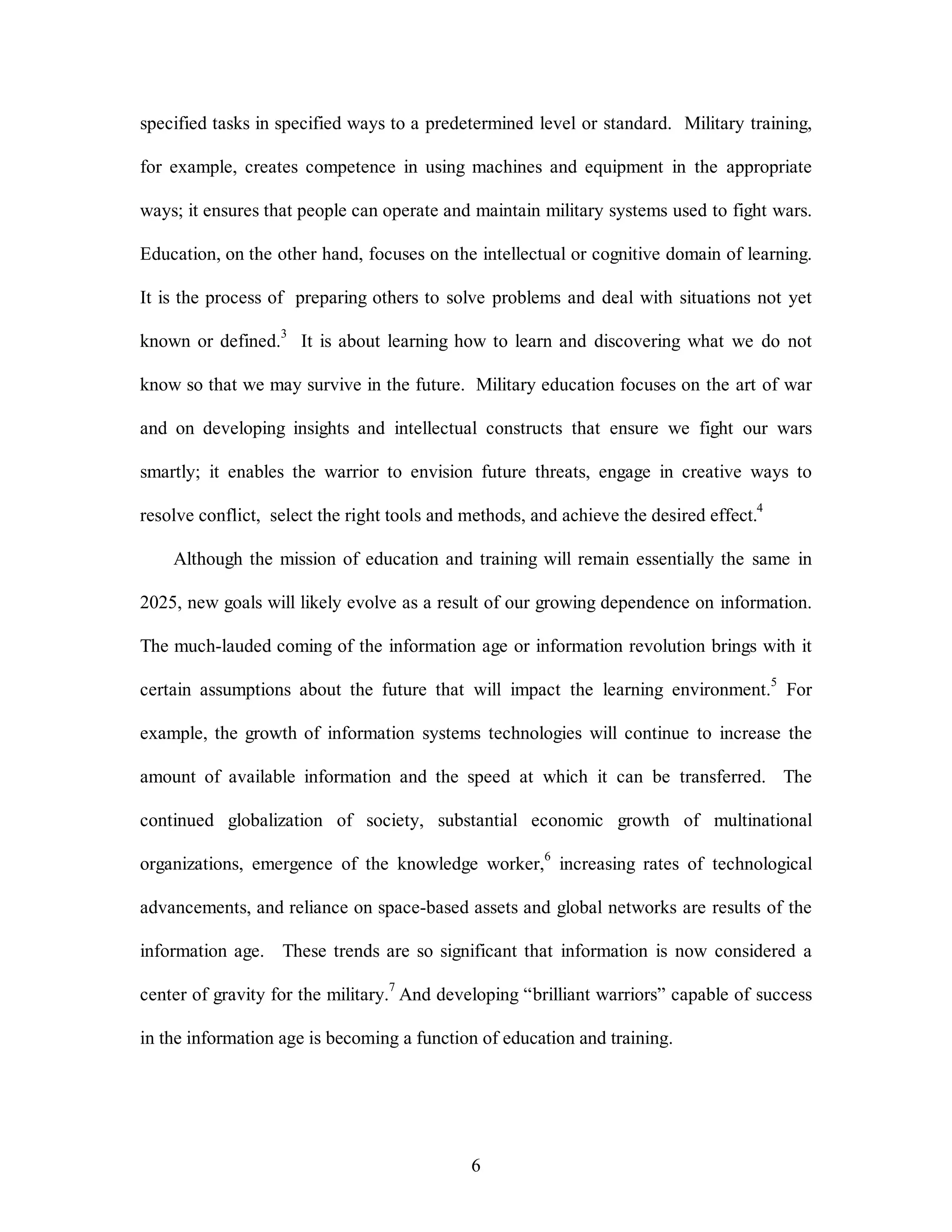

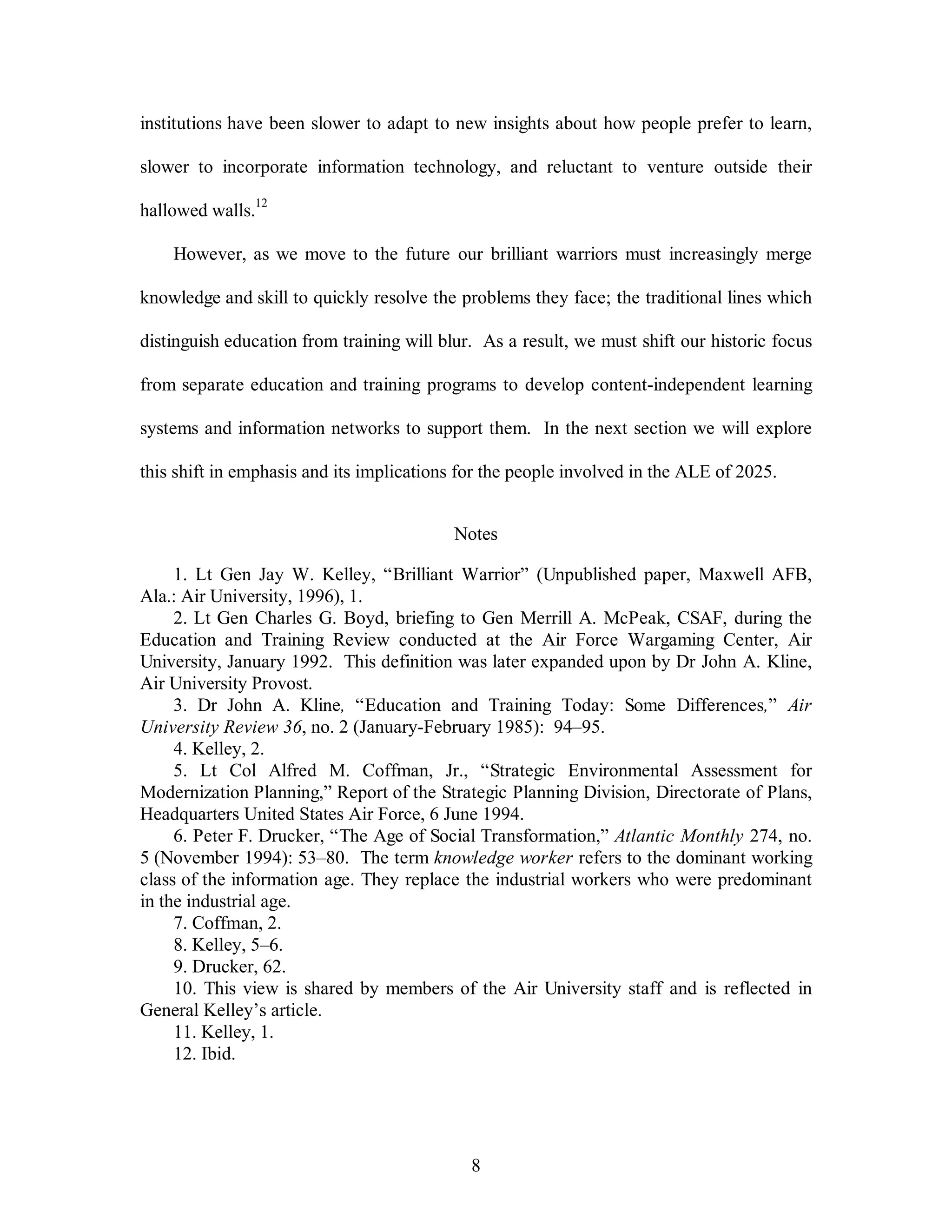

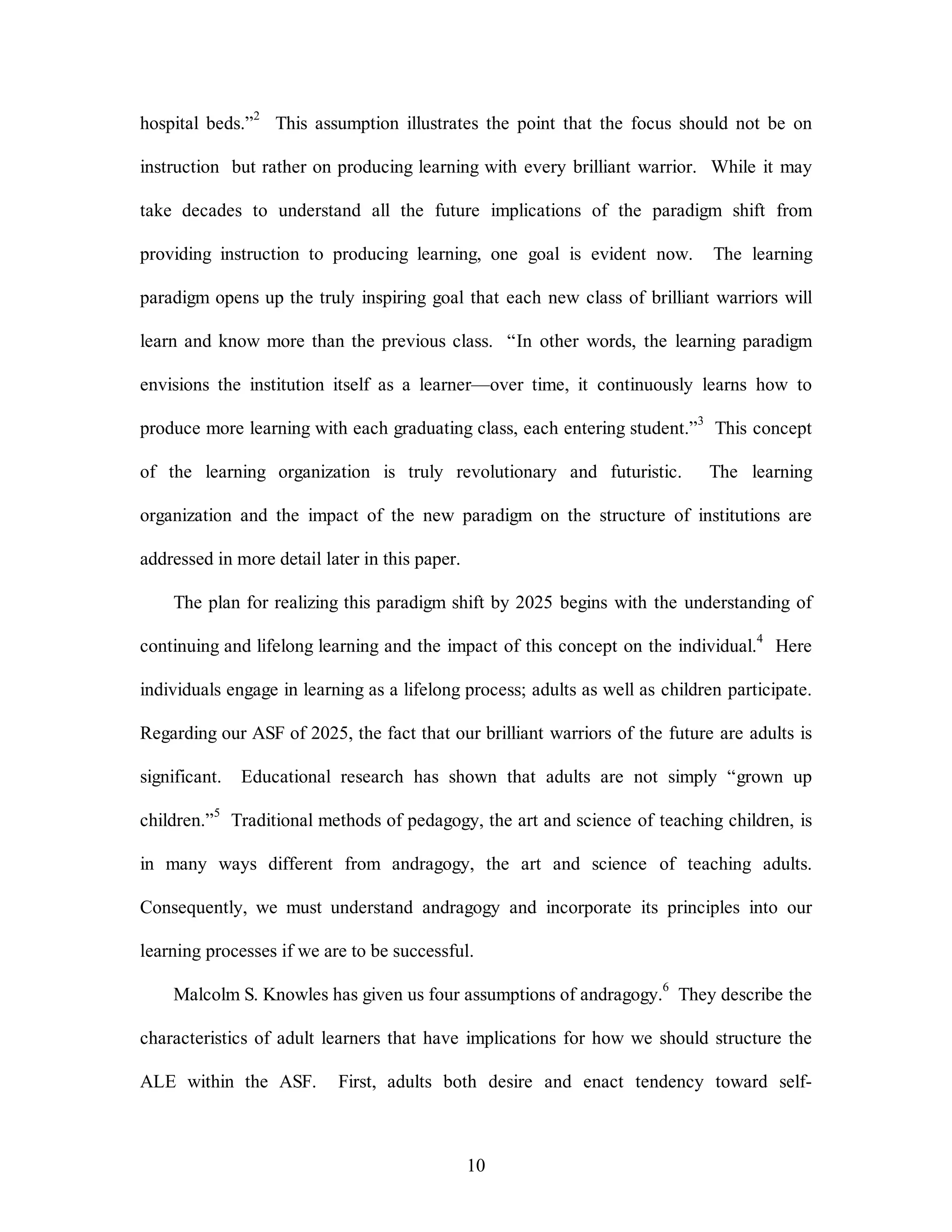
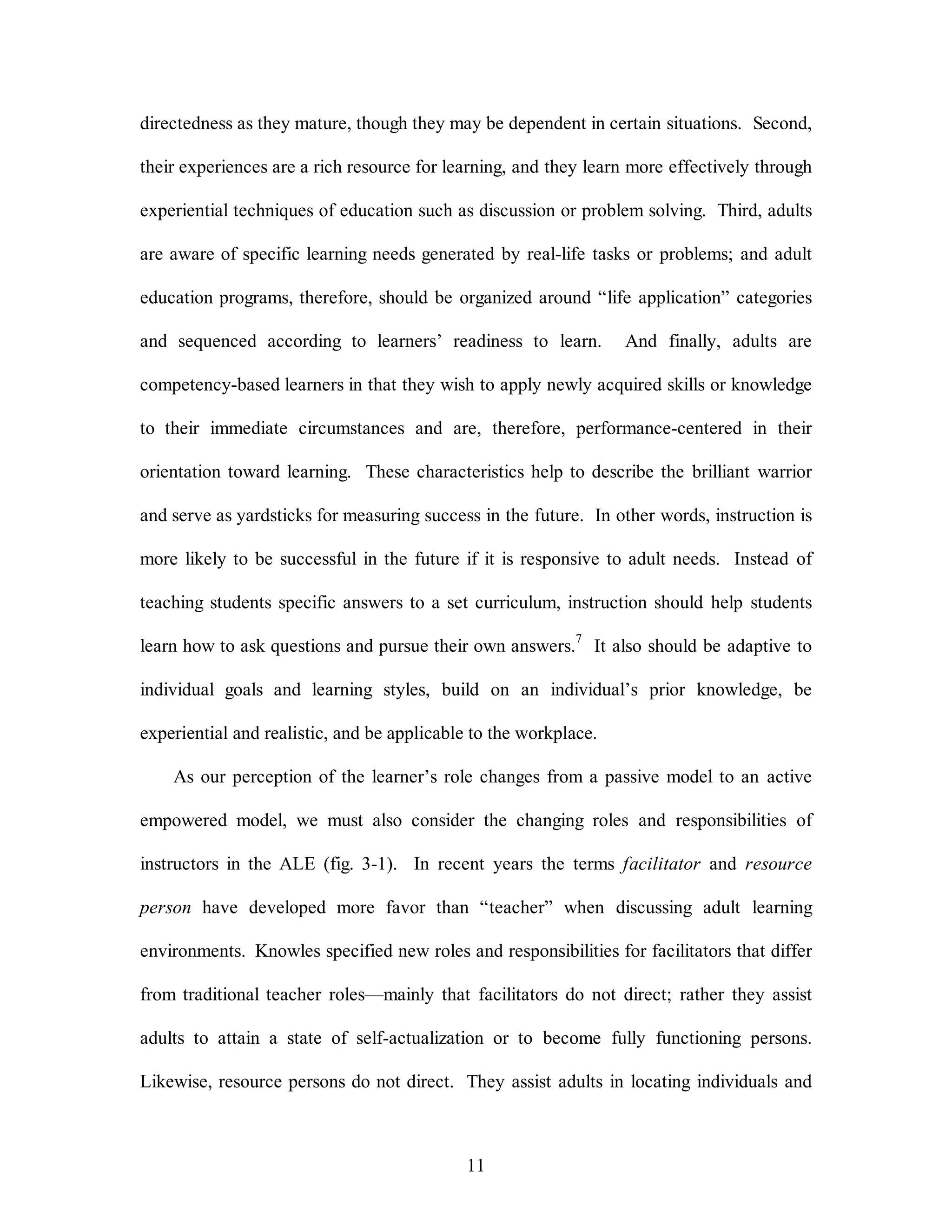
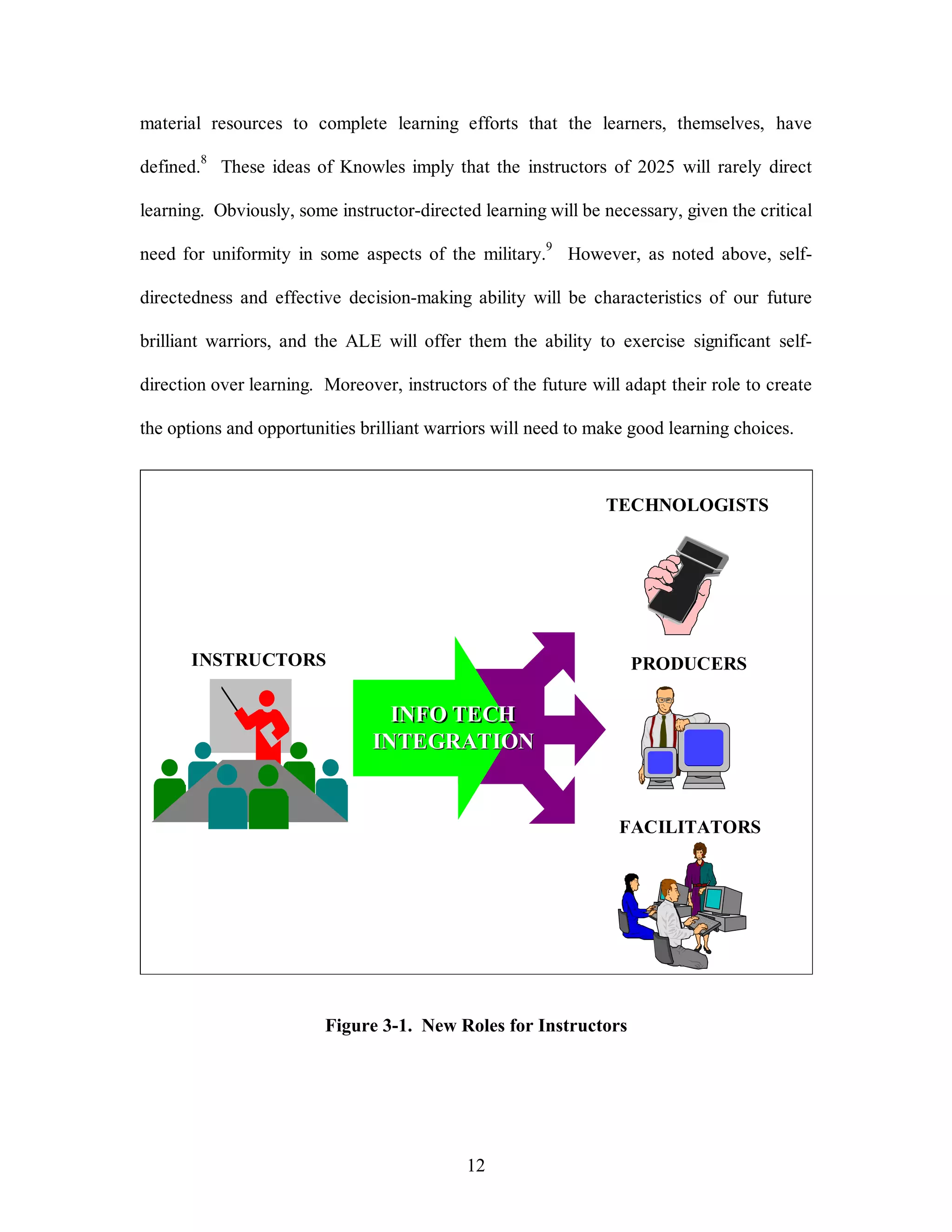
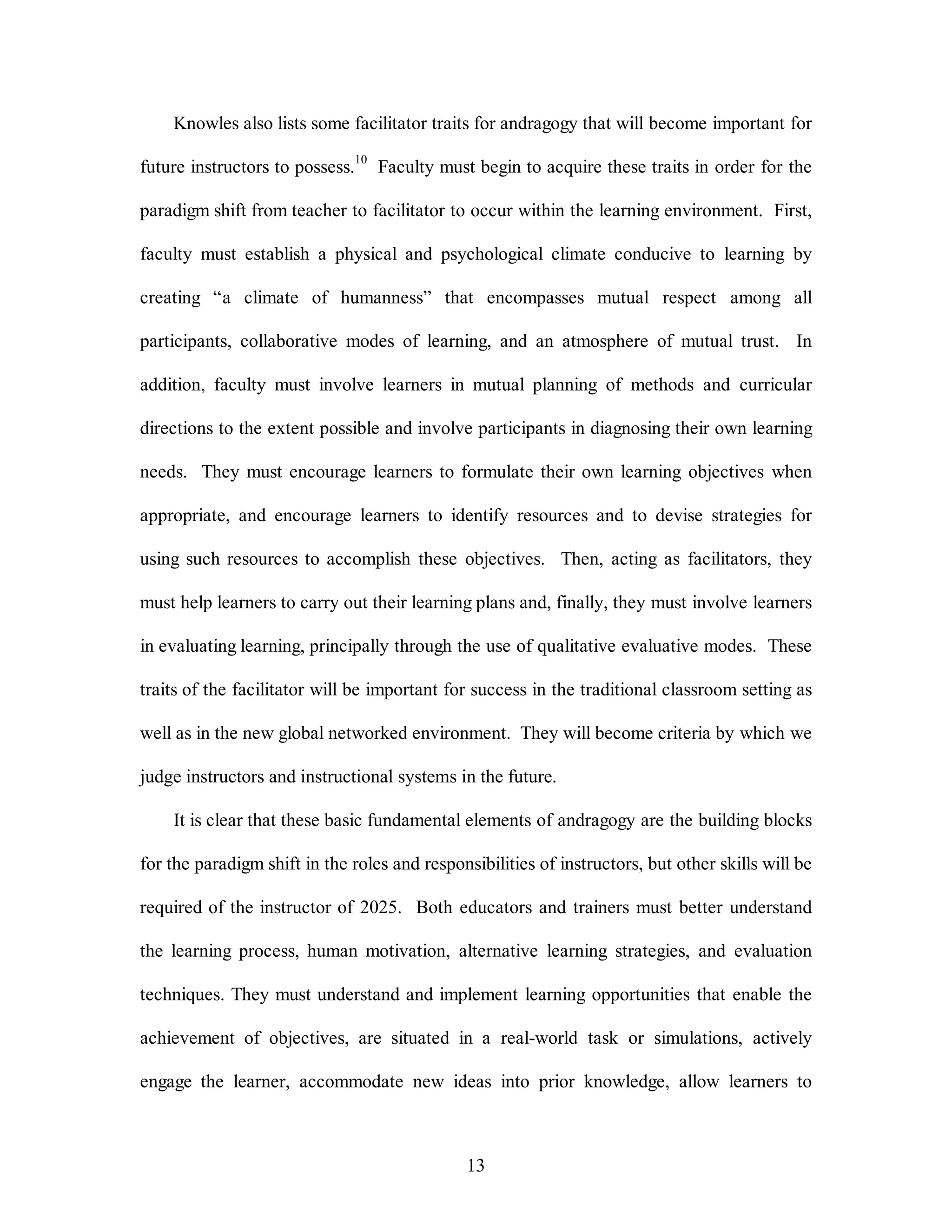
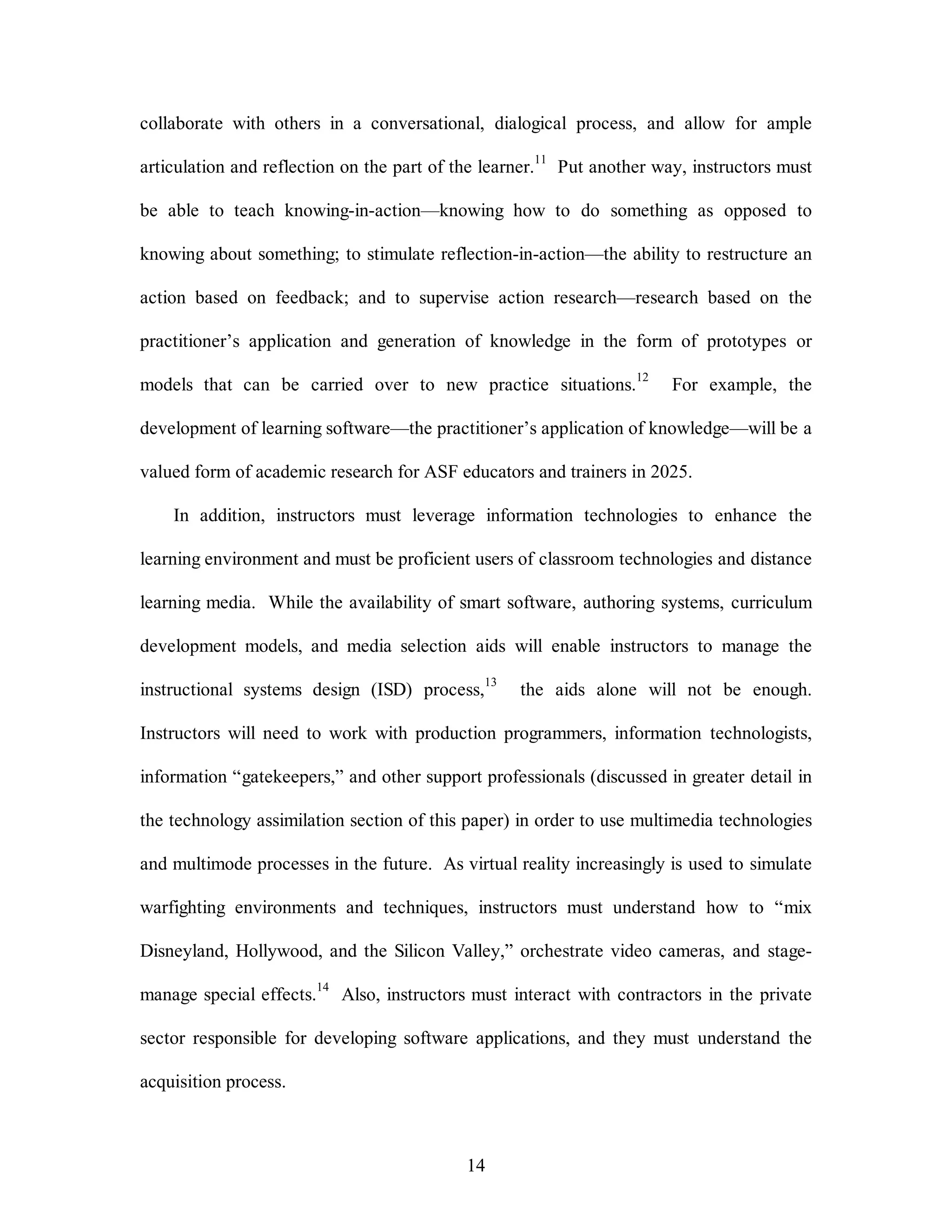
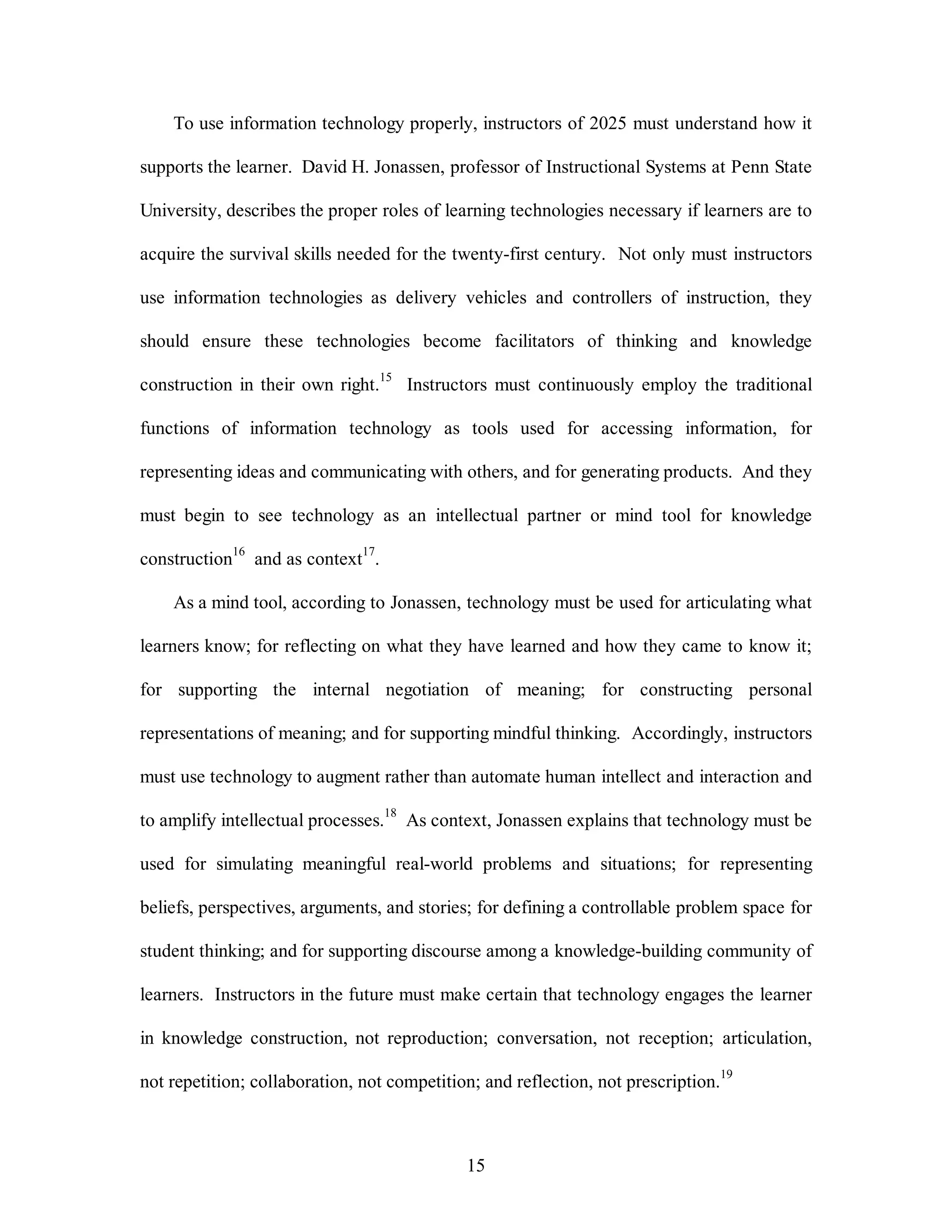
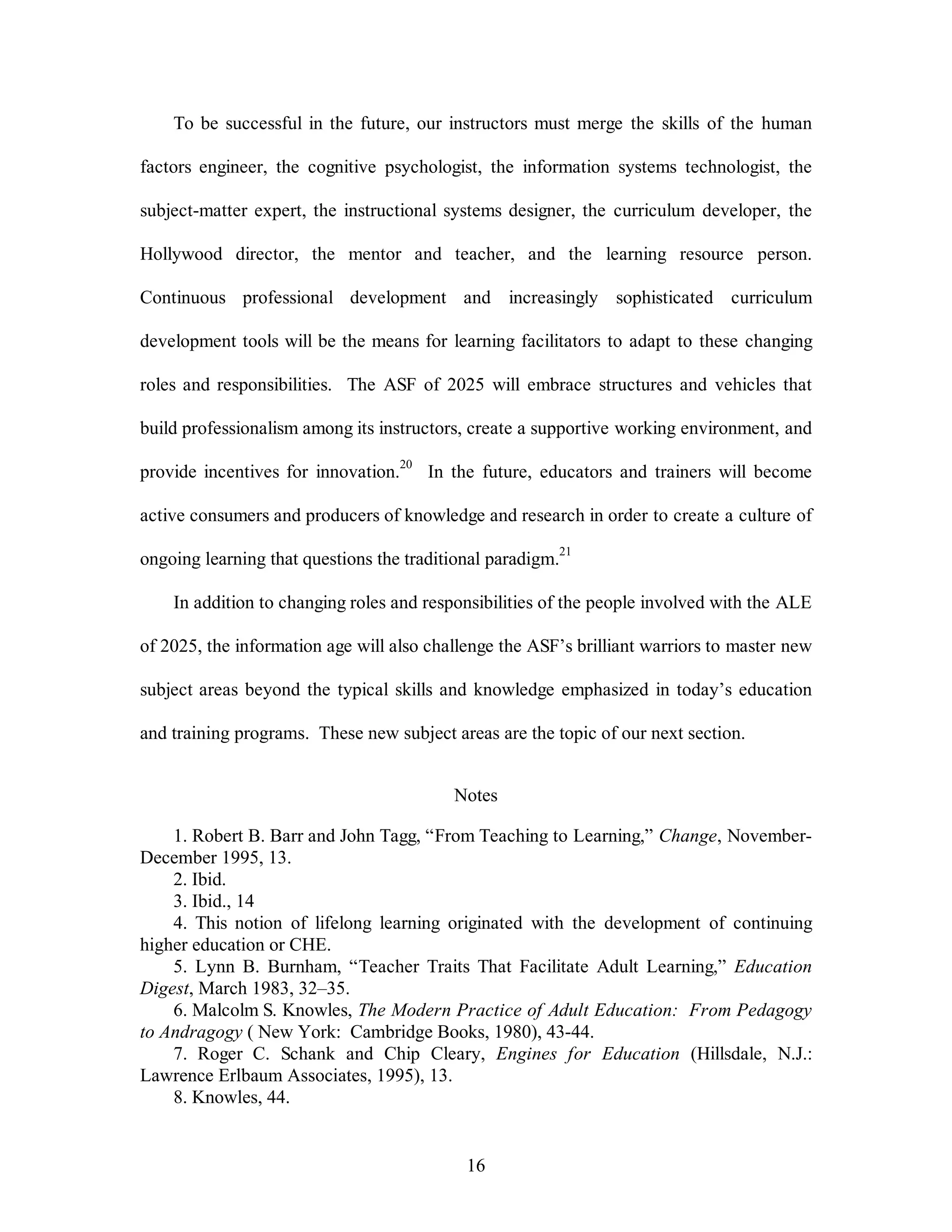
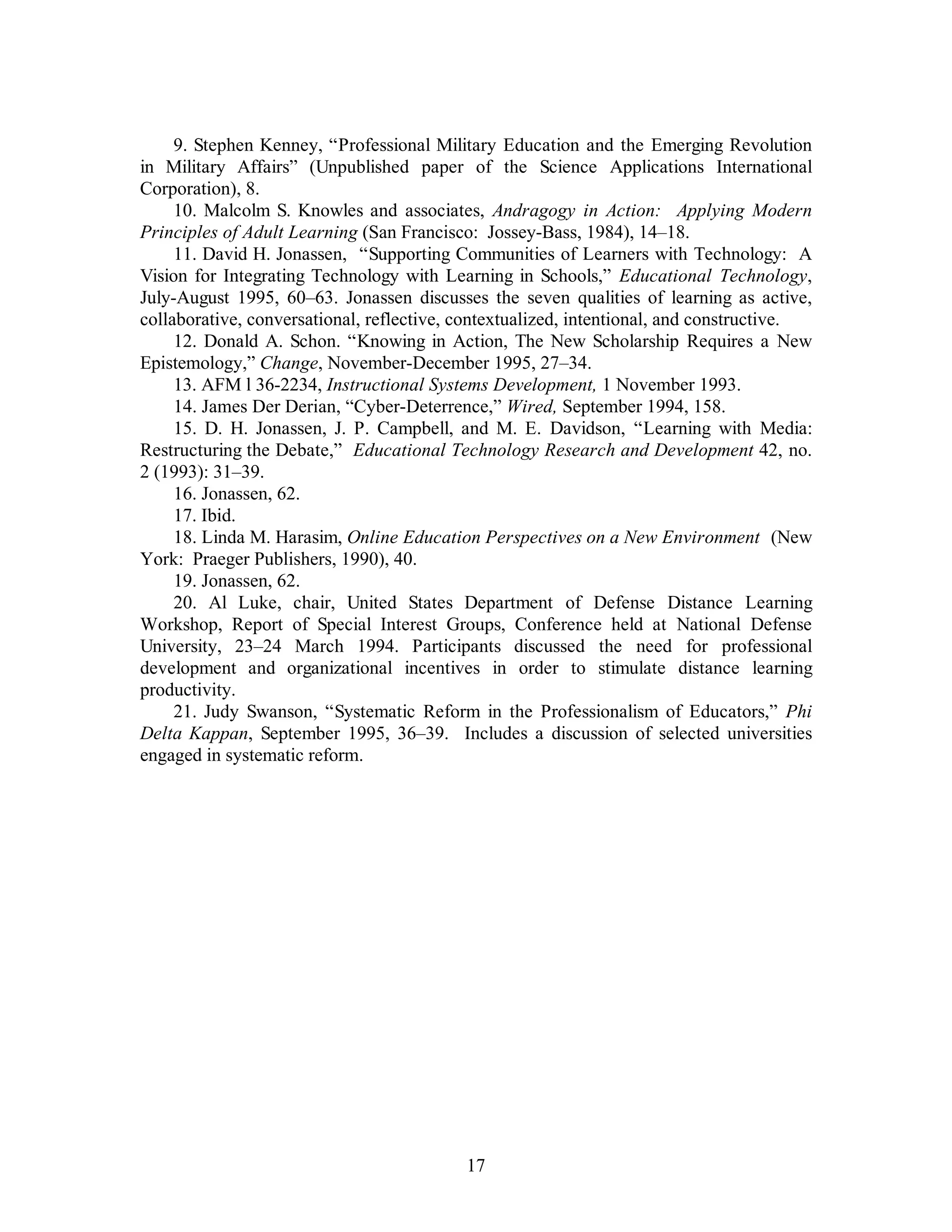
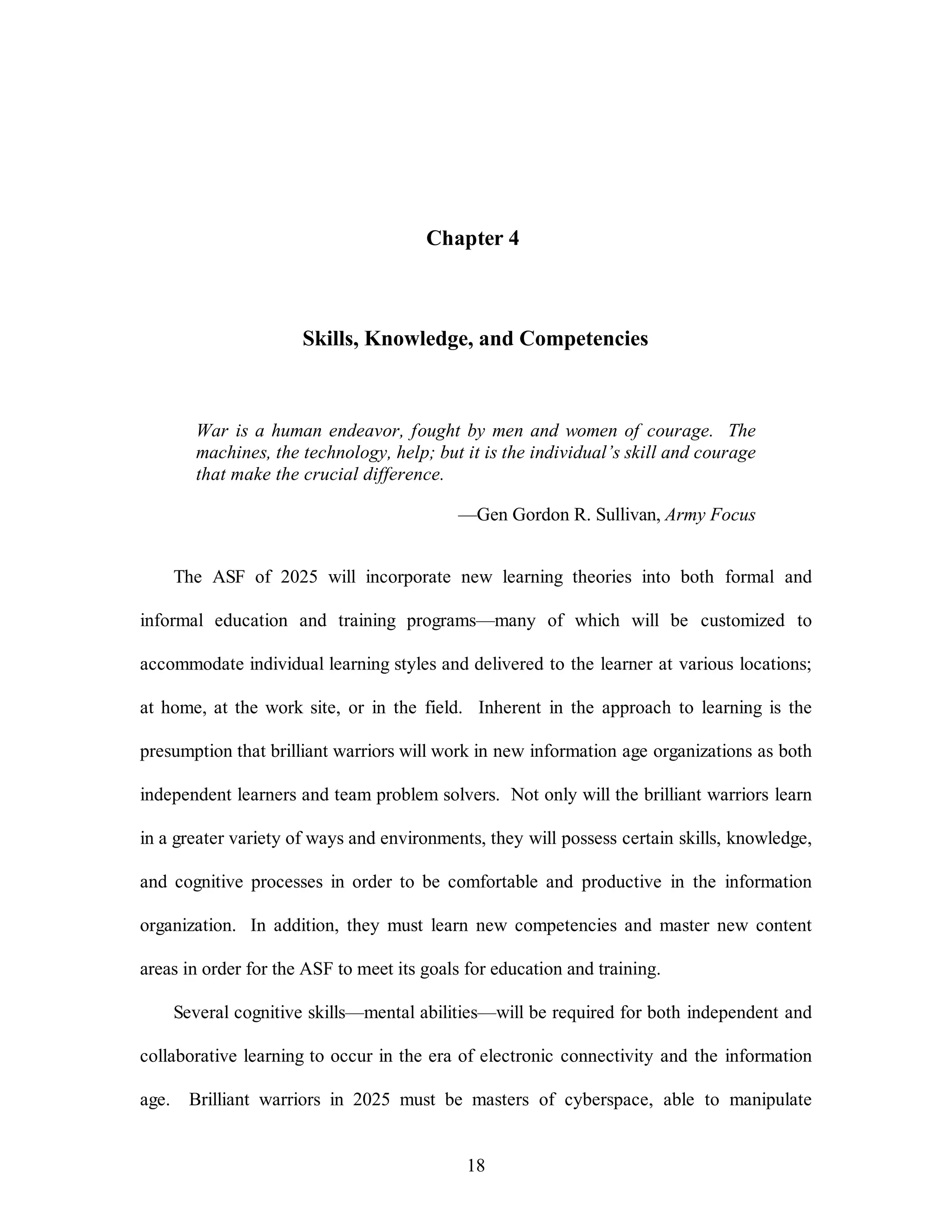
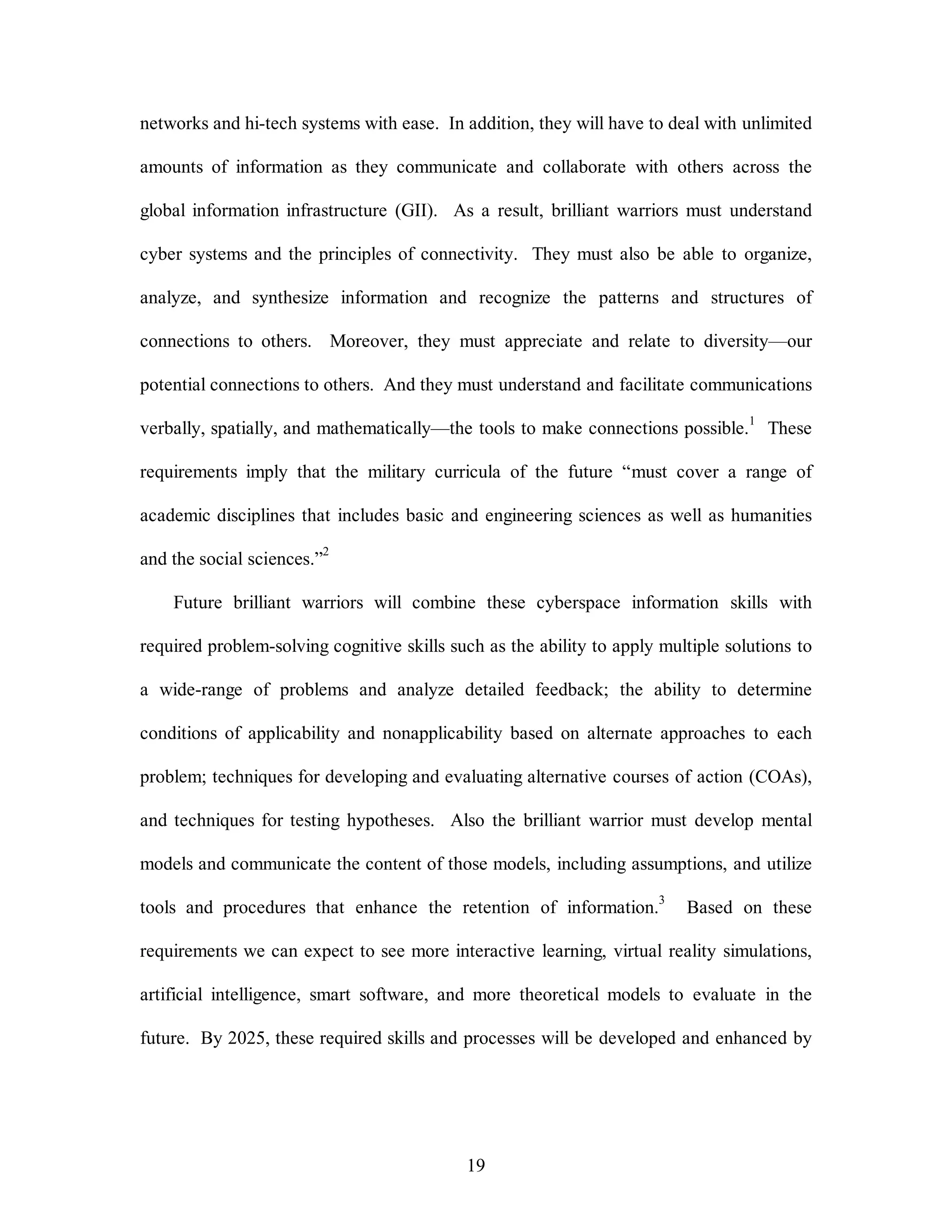
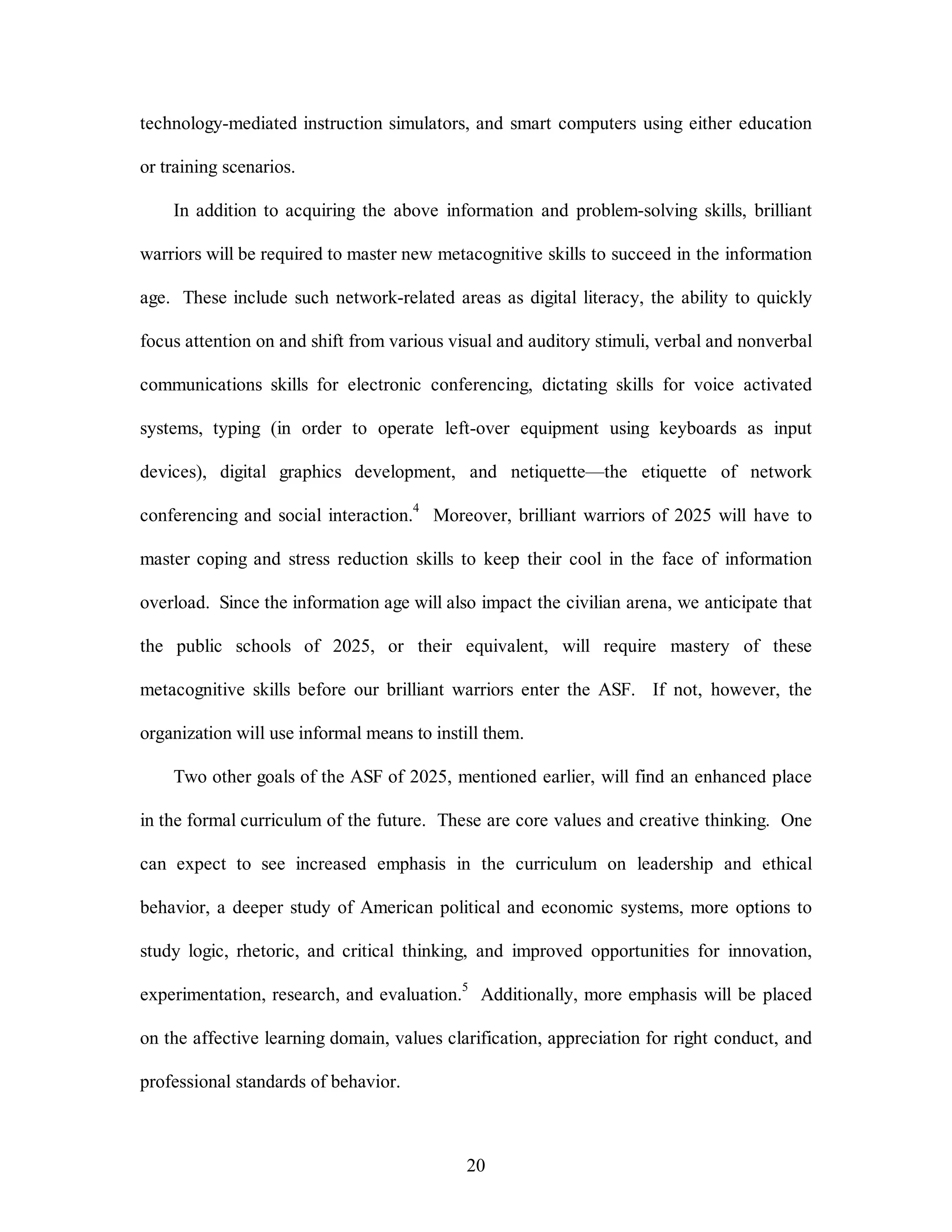
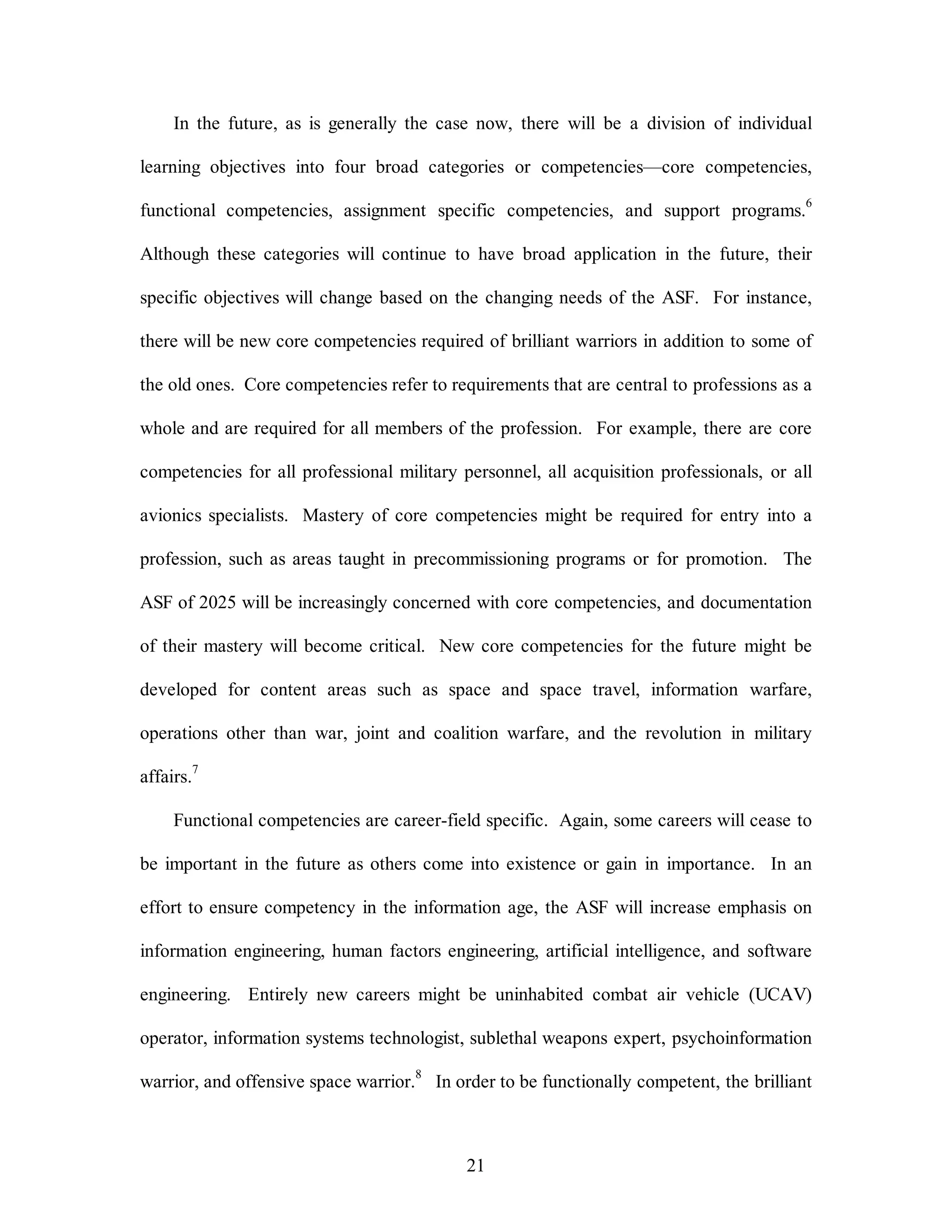
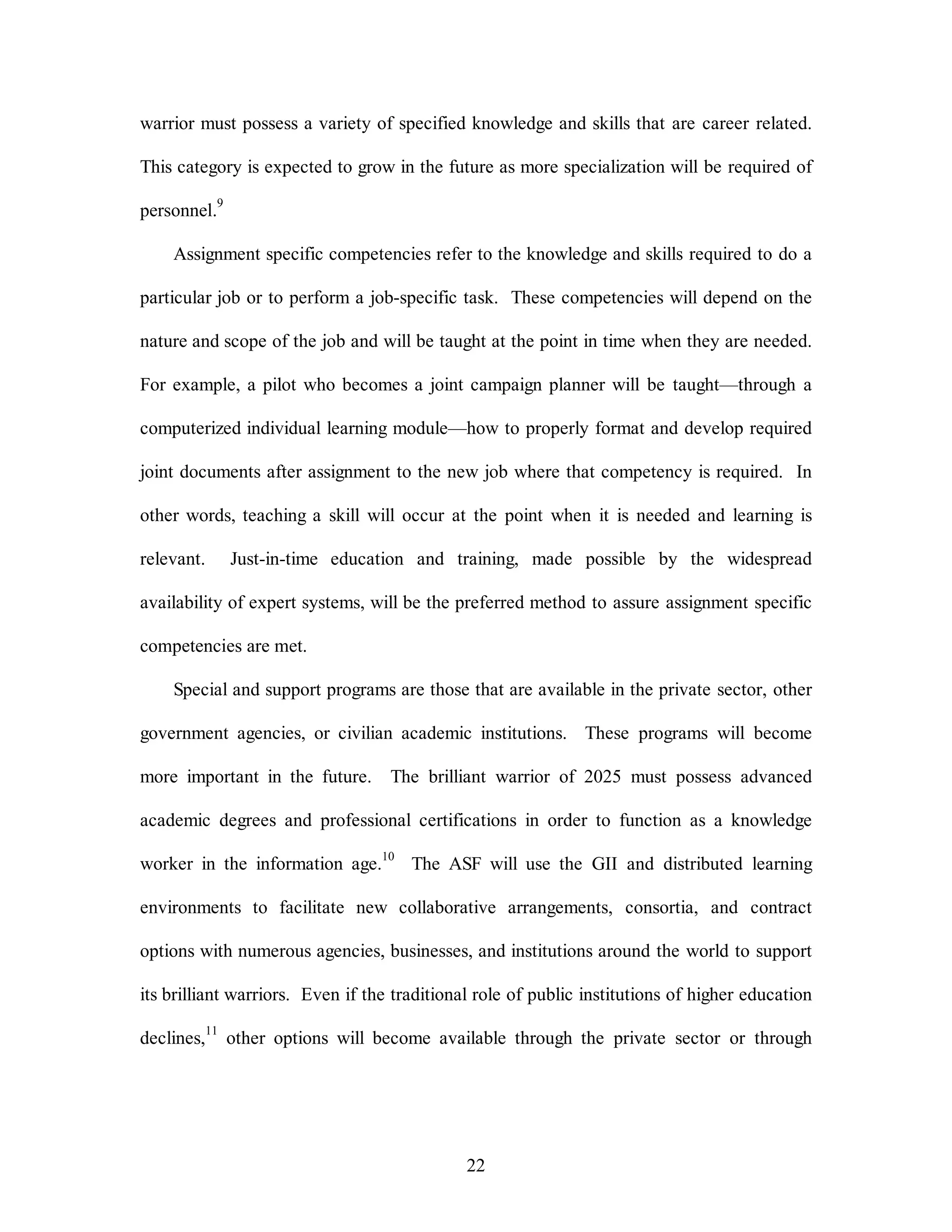

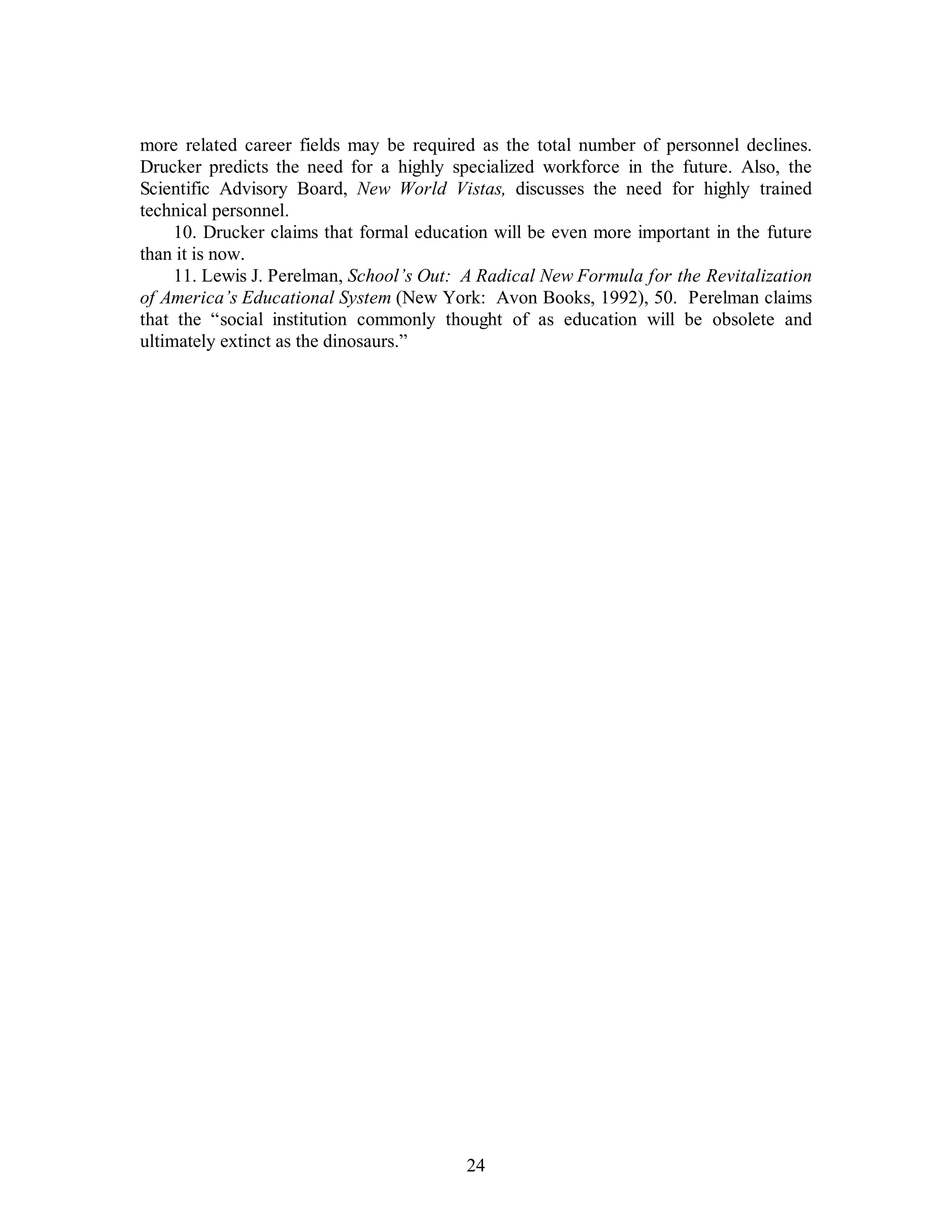
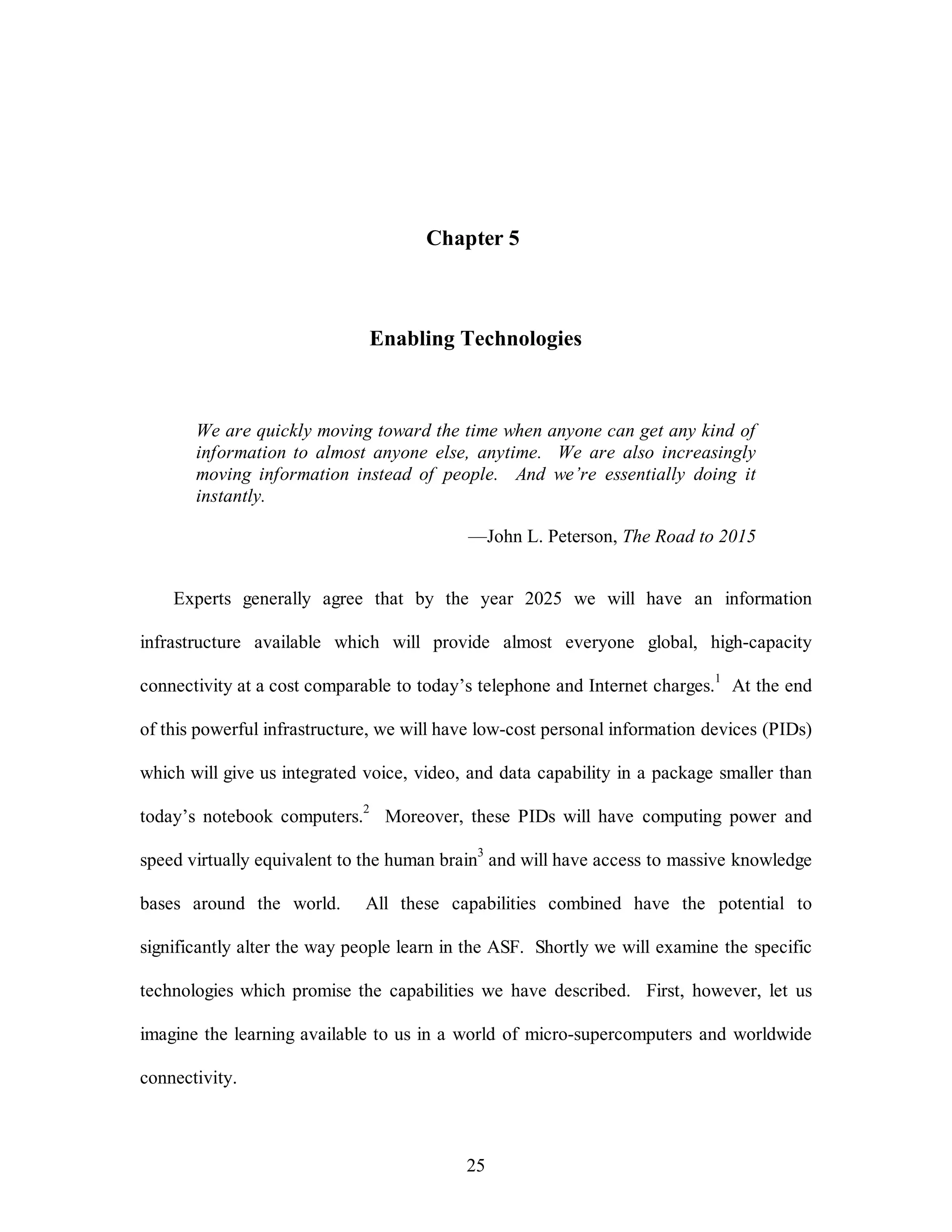
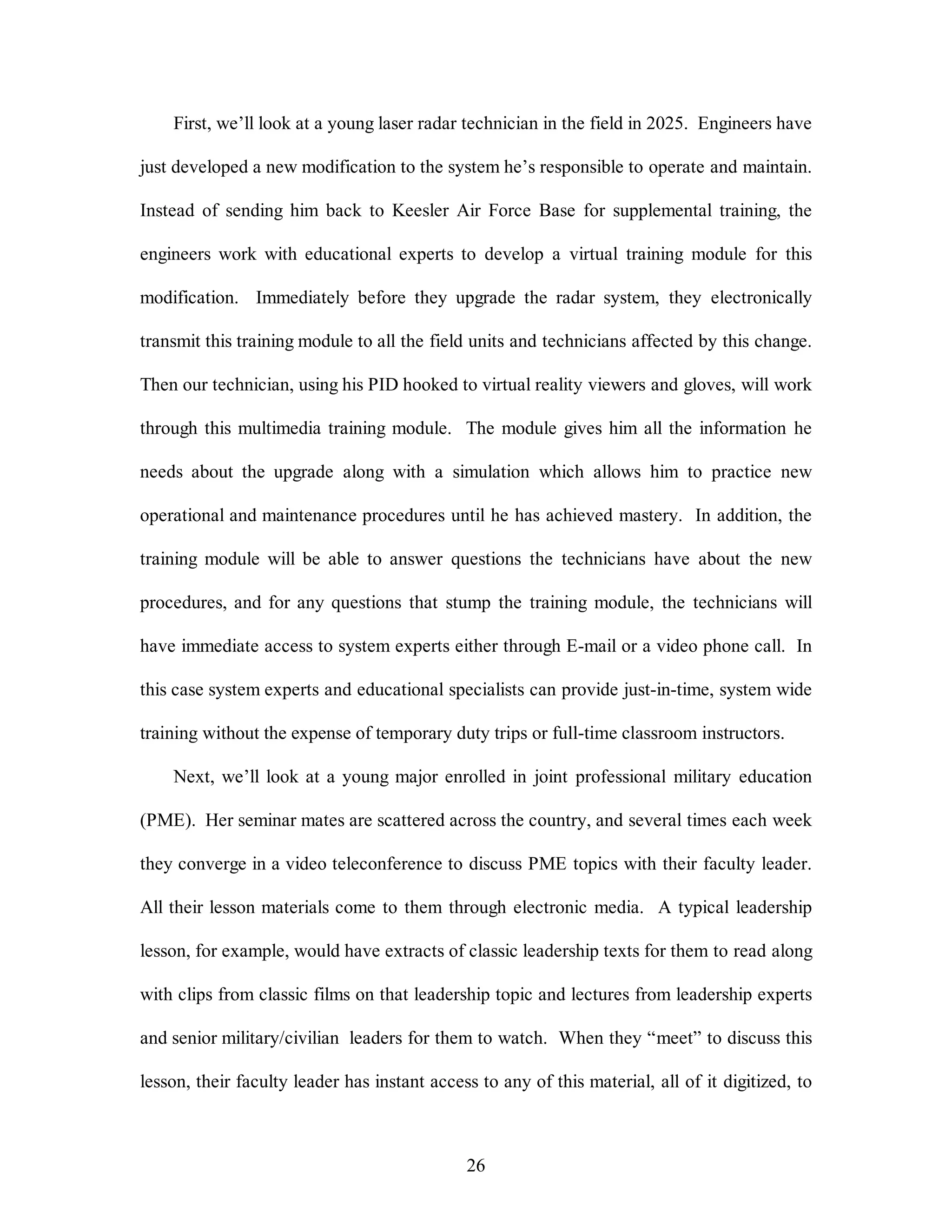
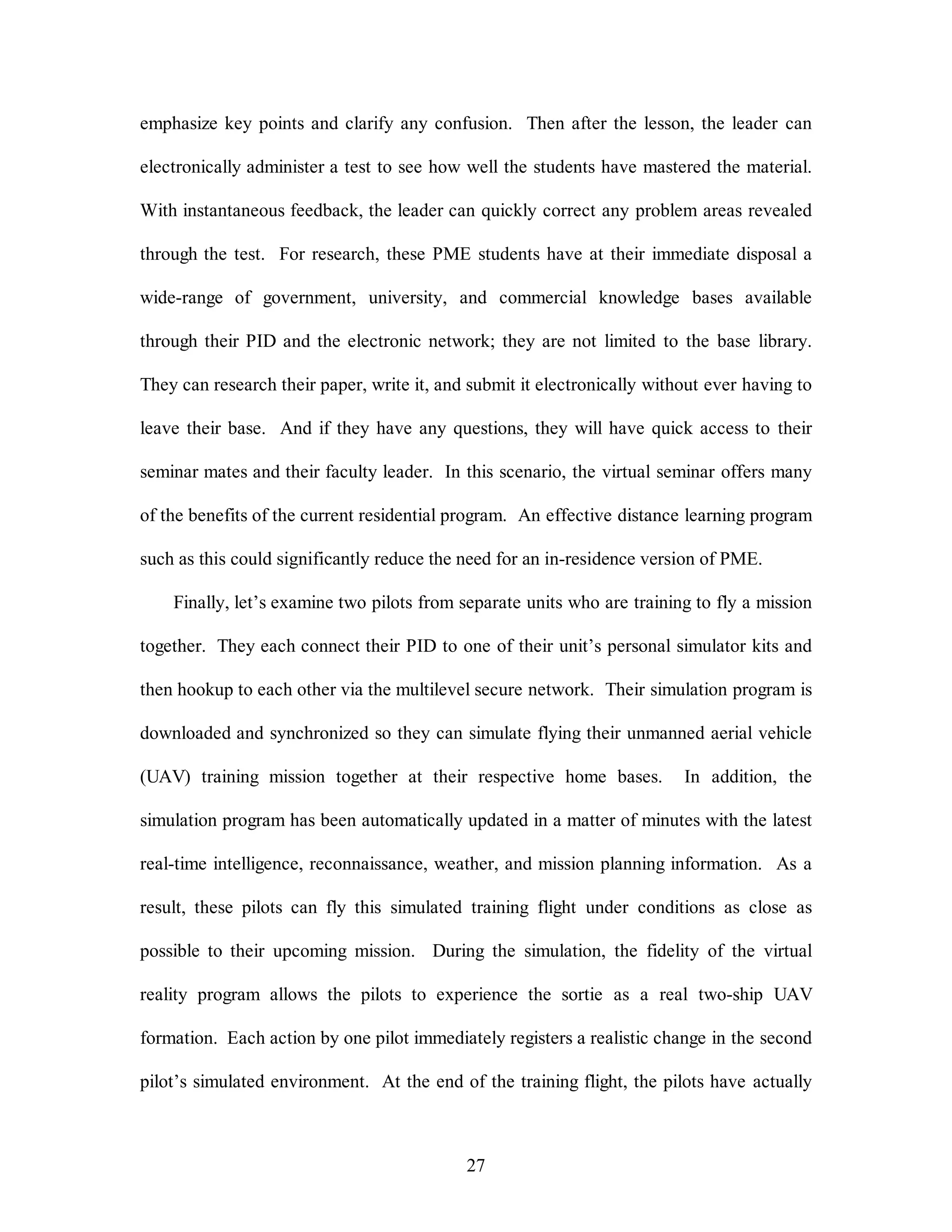

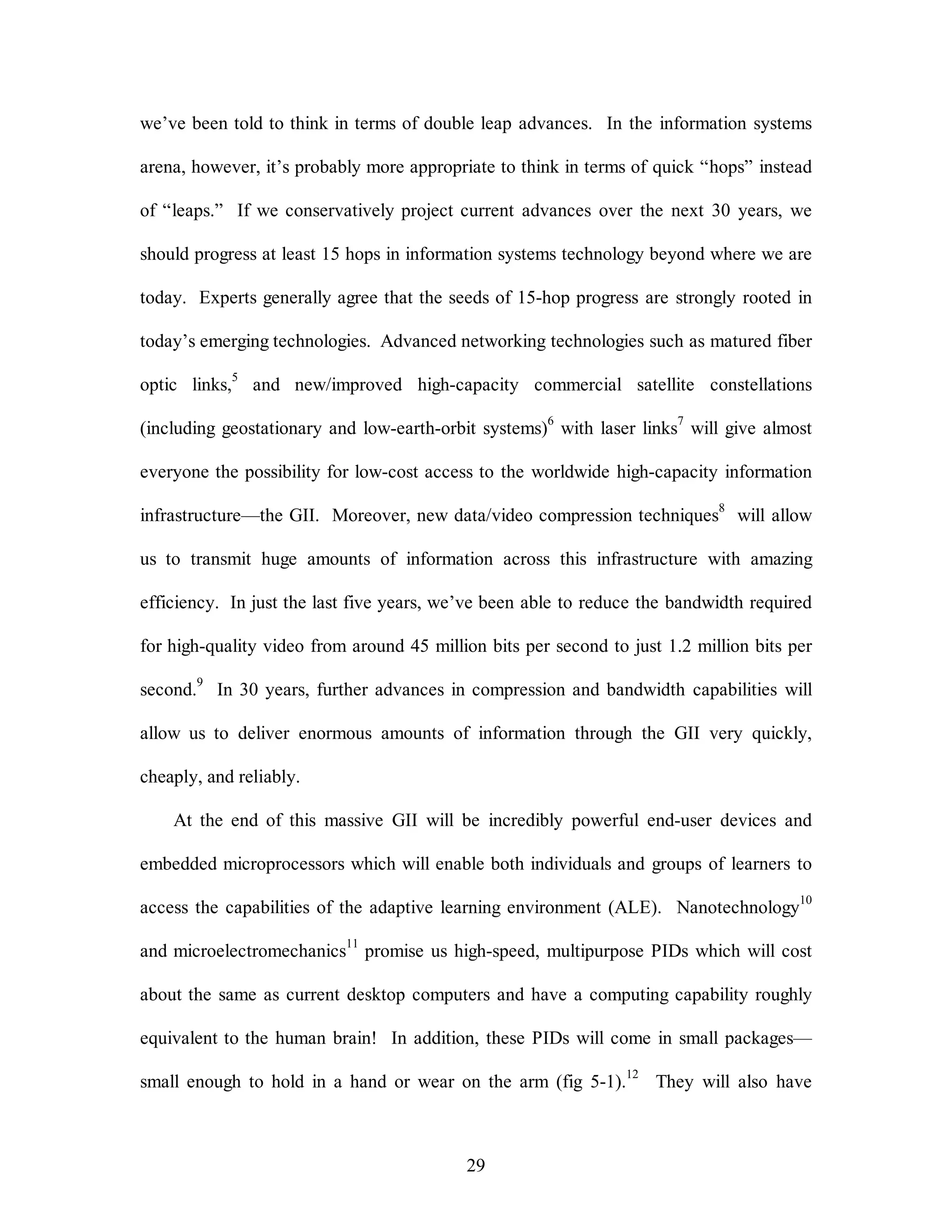
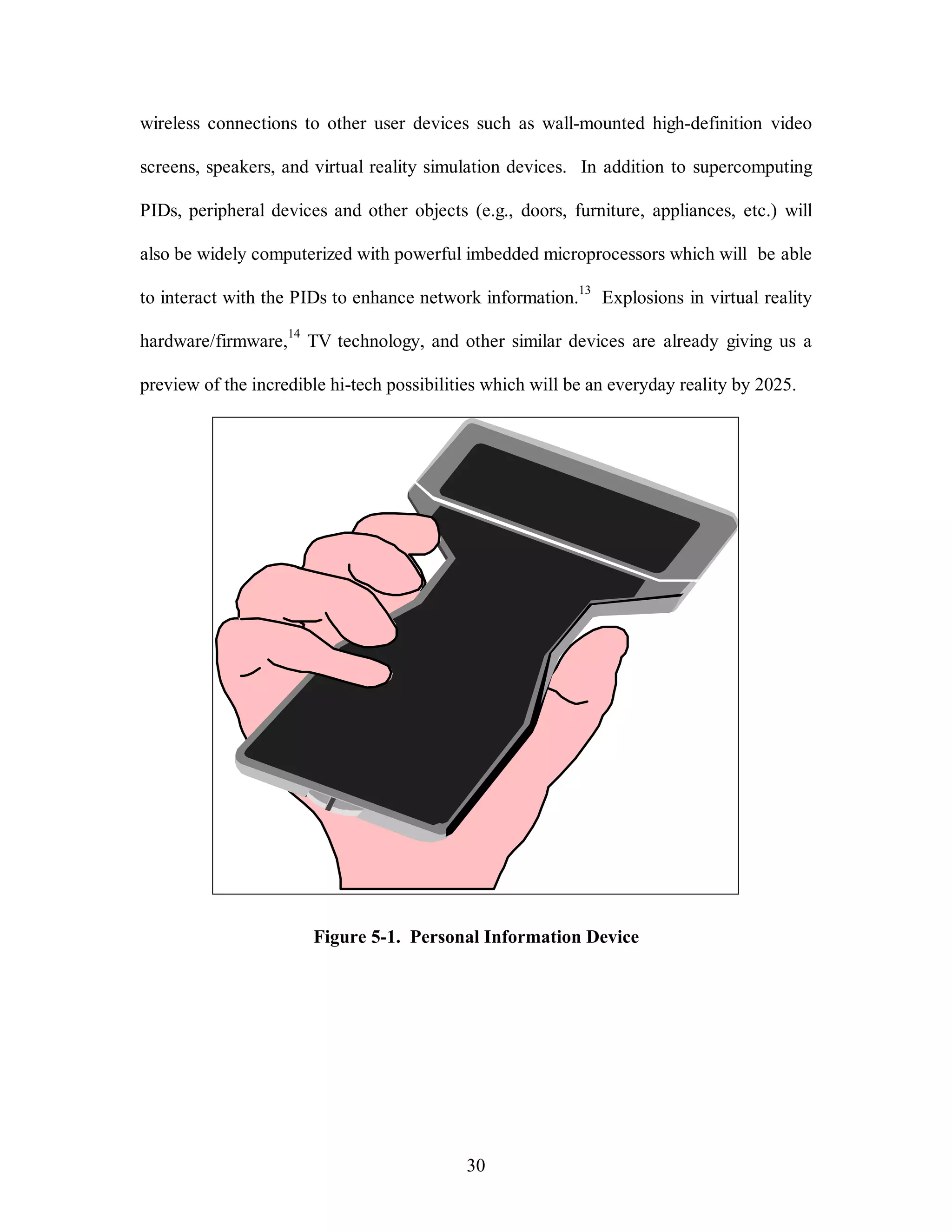
![Development Systems
Obviously sophisticated software will be an integral part of the delivery systems
available by 2025. Moreover, software will play a critical role in the development
systems used to produce ALE materials in 2025. Advances in fuzzy logic/neural
networks15 will give us smart software systems which will allow PIDs to serve as
automated assistants for humans. These will help education/training technologists to
design better software systems and provide high-fidelity simulations tailored for a wide
variety of education and training scenarios.16 In addition, similar software will help keep
track of learners’ needs and preferences. These information age assistants, which
Nicholas Negroponte calls “digital butlers”17 will then be able to search various sources
across the GII to compile the right information in the right format for the learner on
31
demand.
In other areas, voice recognition systems, automated language translators, and similar
software systems18 will allow people of different countries to communicate with ease and
without the use of a keyboard. This will greatly enhance the quality and ease of
combined training with one or multiple allies. In addition, multilevel security (MLS)
software systems coupled with low-cost personal identification systems (e.g., fingerprint,
retinal scan, deoxyribonucleic acid [DNA] identification devices, etc.) will provide the
security necessary to allow learners to use the ALE and GII with confidence.19
Other related technical advances will enhance software development to spur very
efficient and effective ALE methods and materials. Advances in visualization technology
will enhance the three-dimensional aspect of virtual reality simulations and other
educational presentations.20 Developments in what Lewis J. Perelman calls “brain](https://image.slidesharecdn.com/vol1ch10-140914105049-phpapp01/75/Vol1ch10-37-2048.jpg)
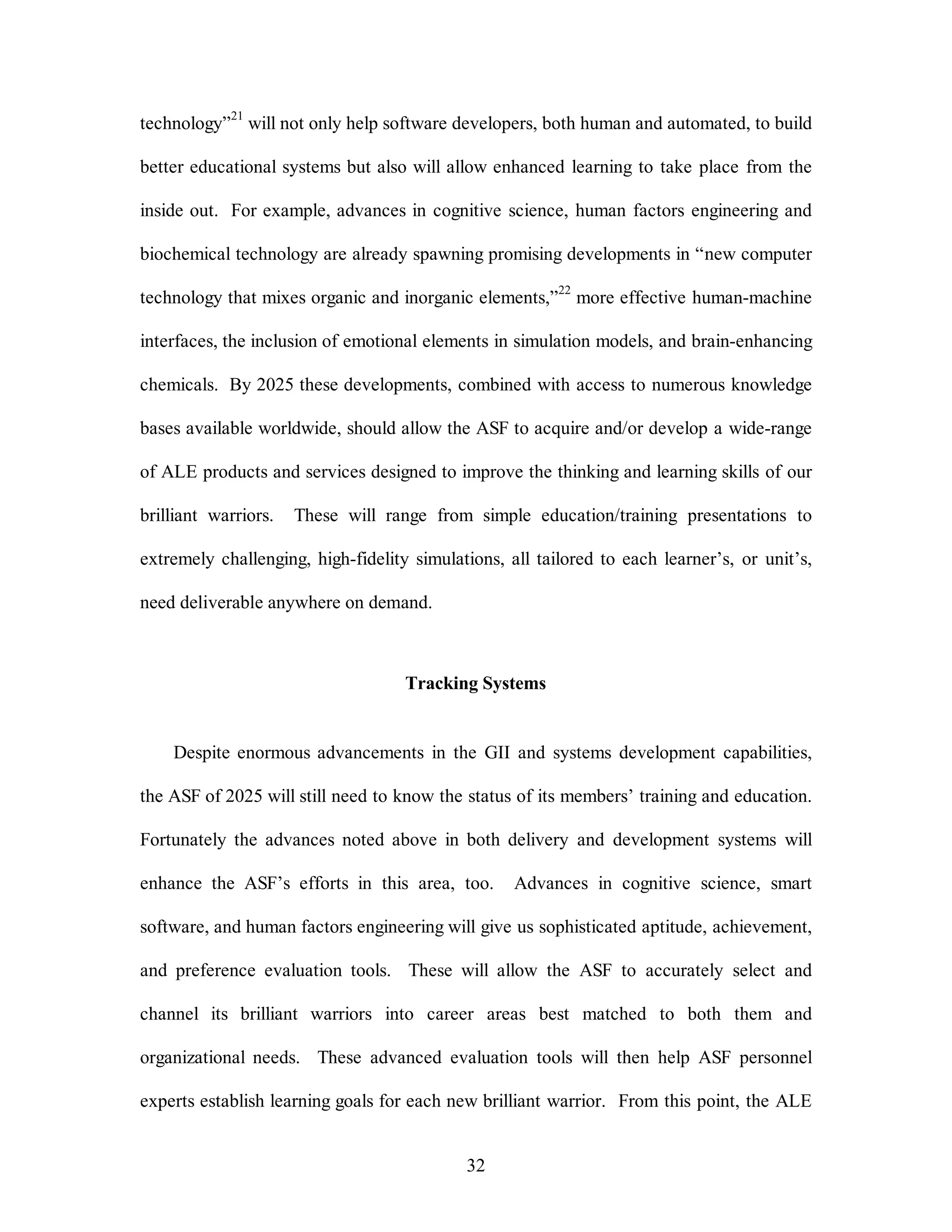
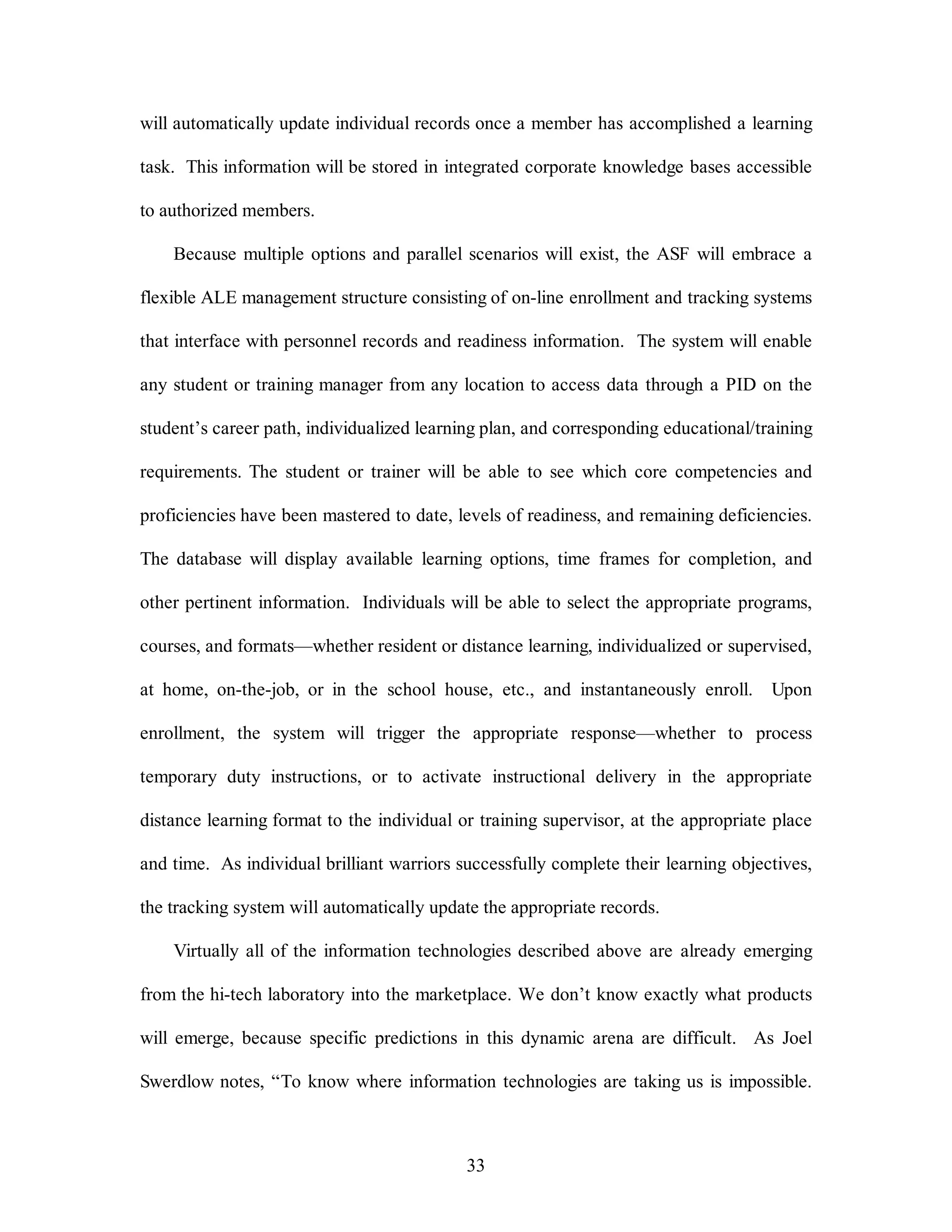
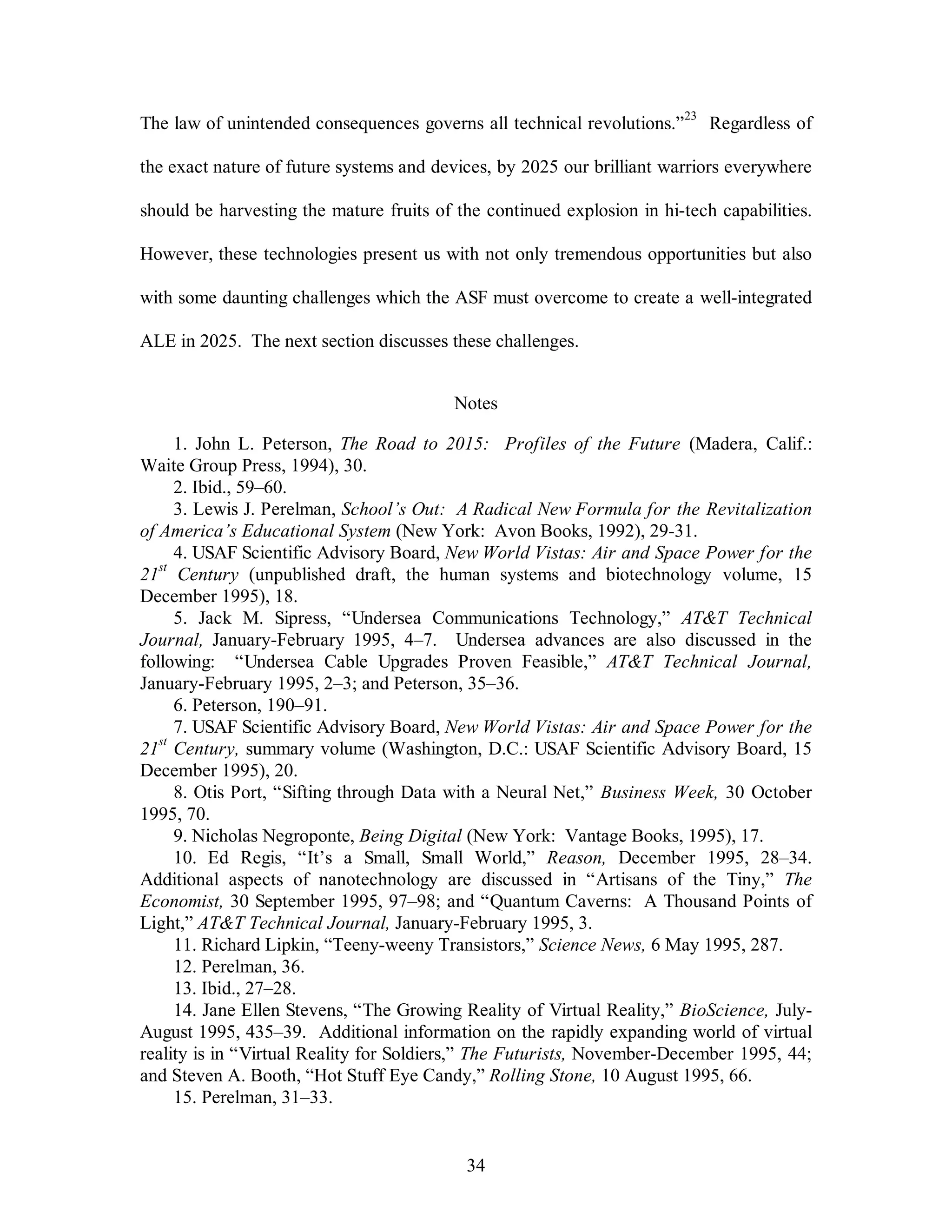
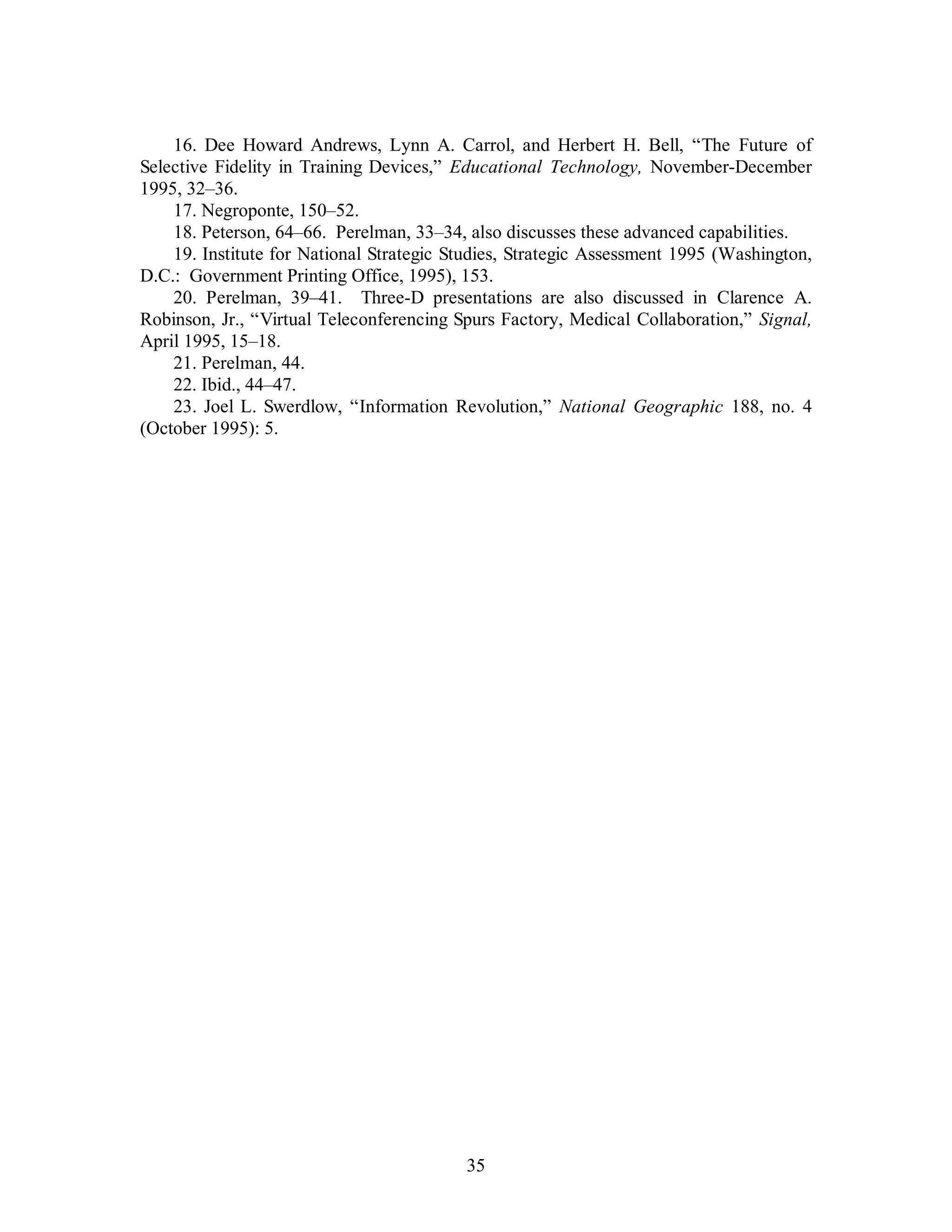
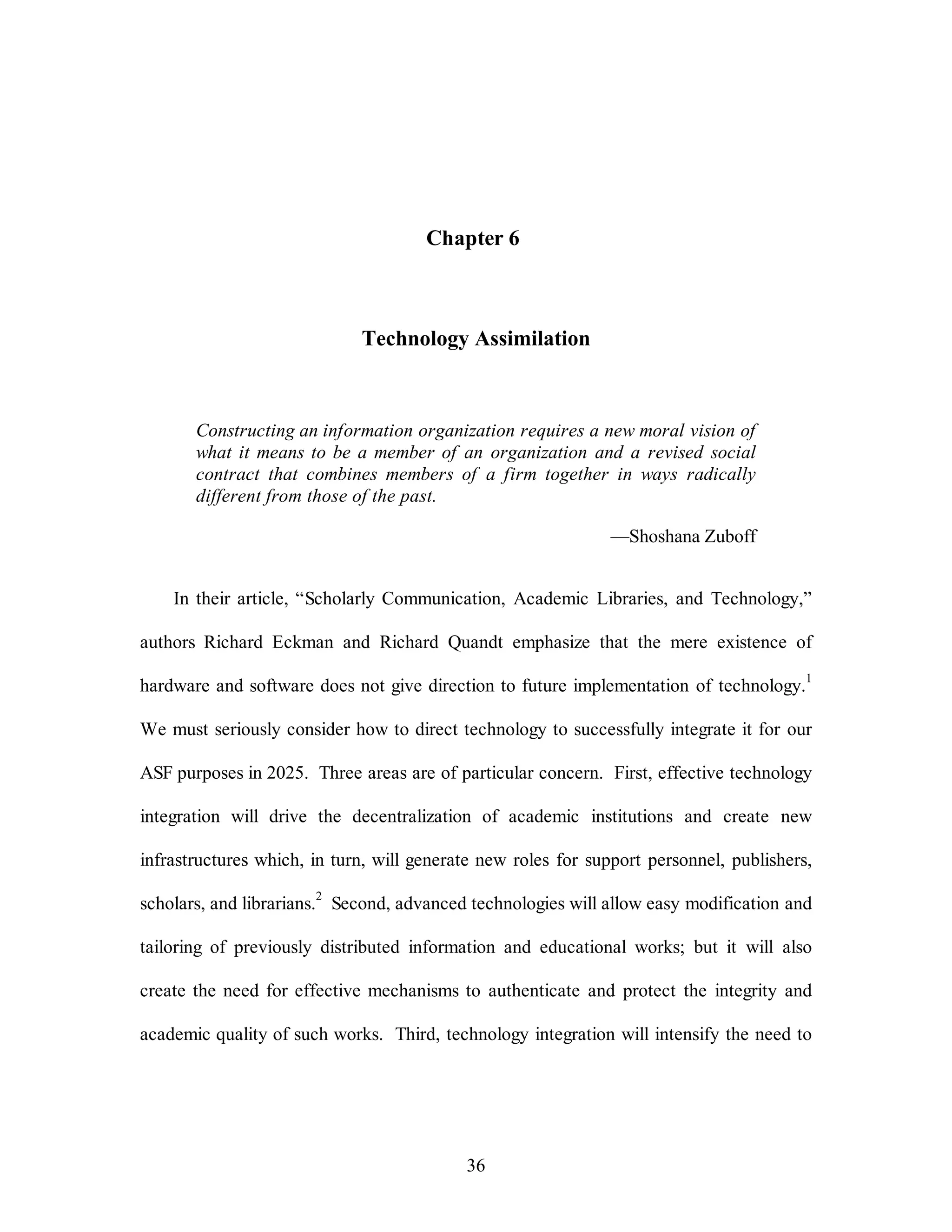
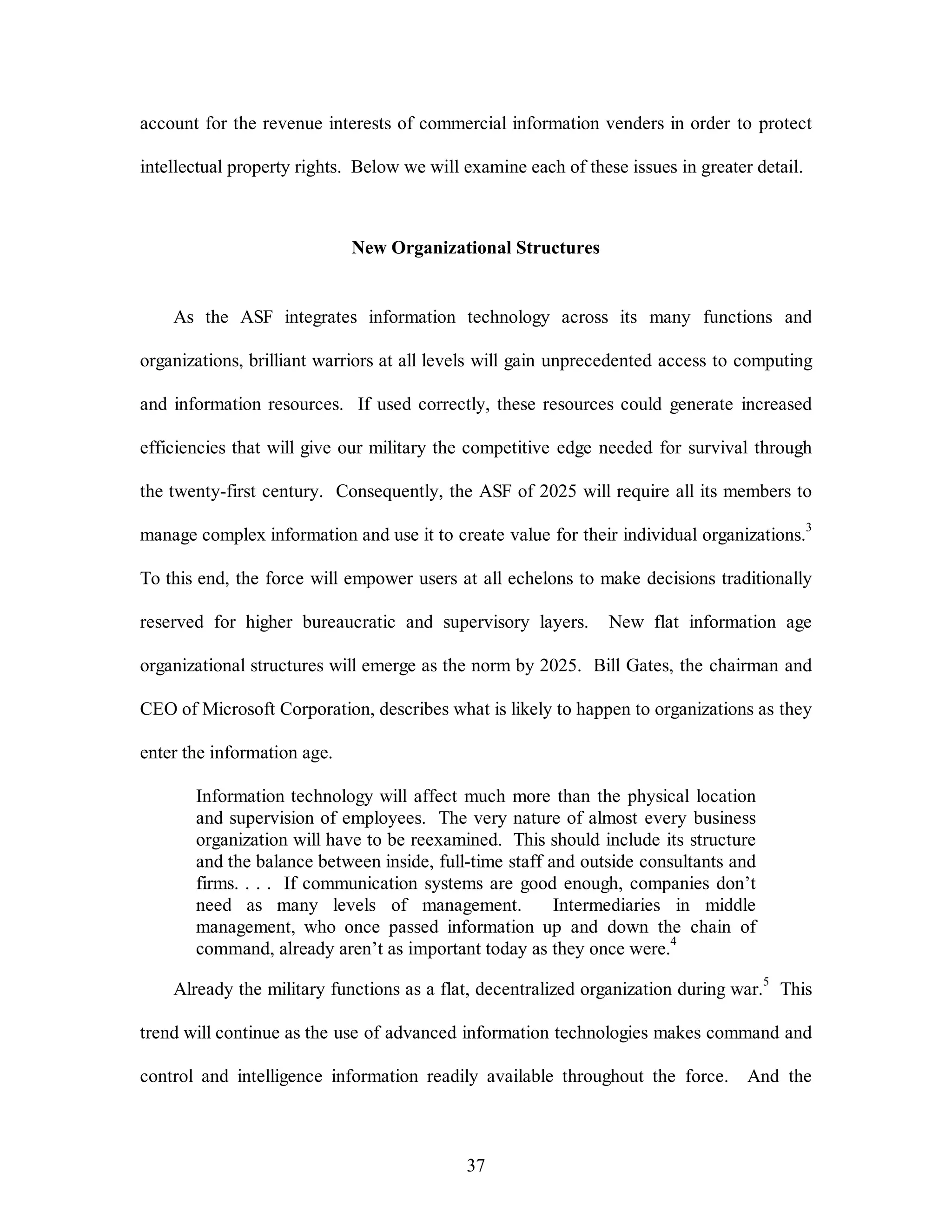

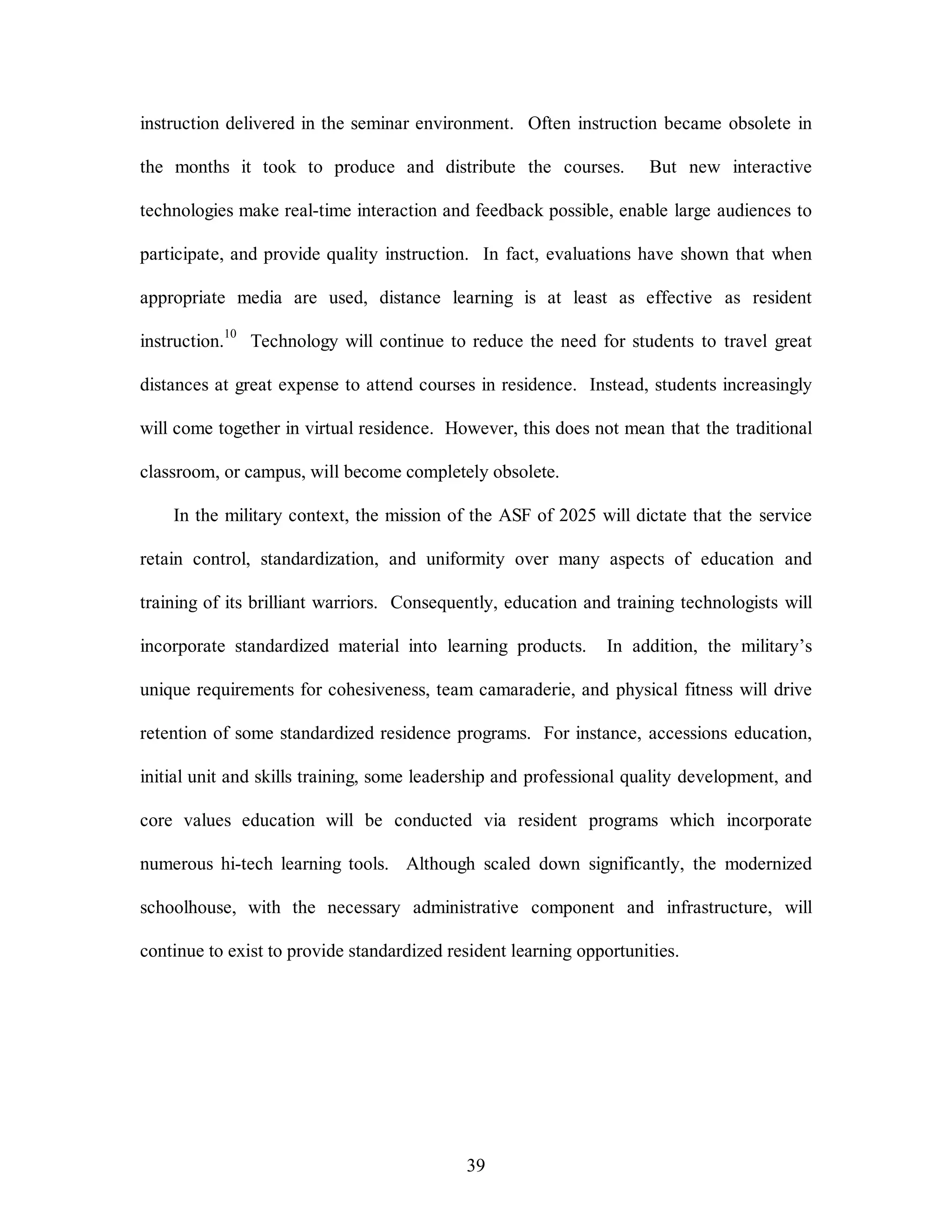

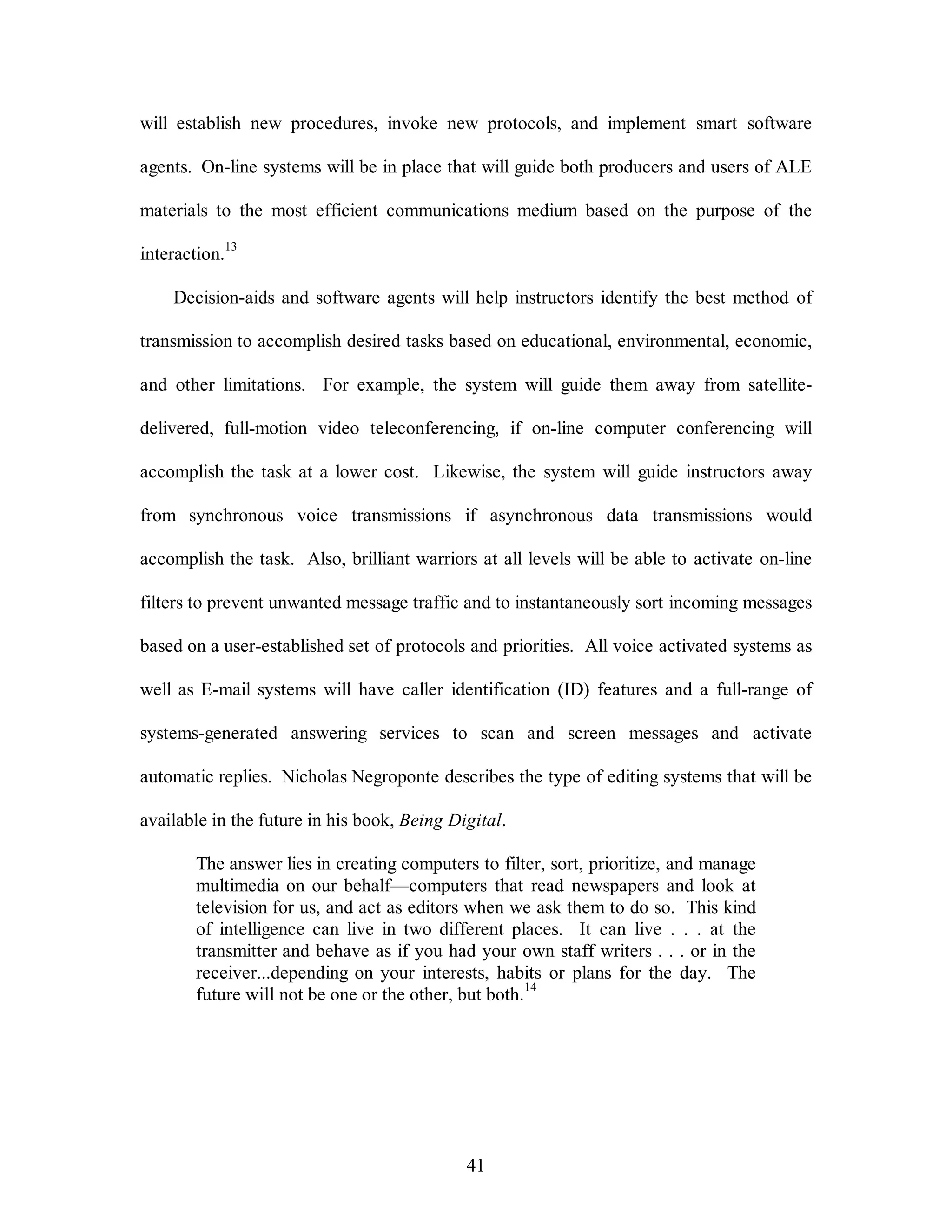
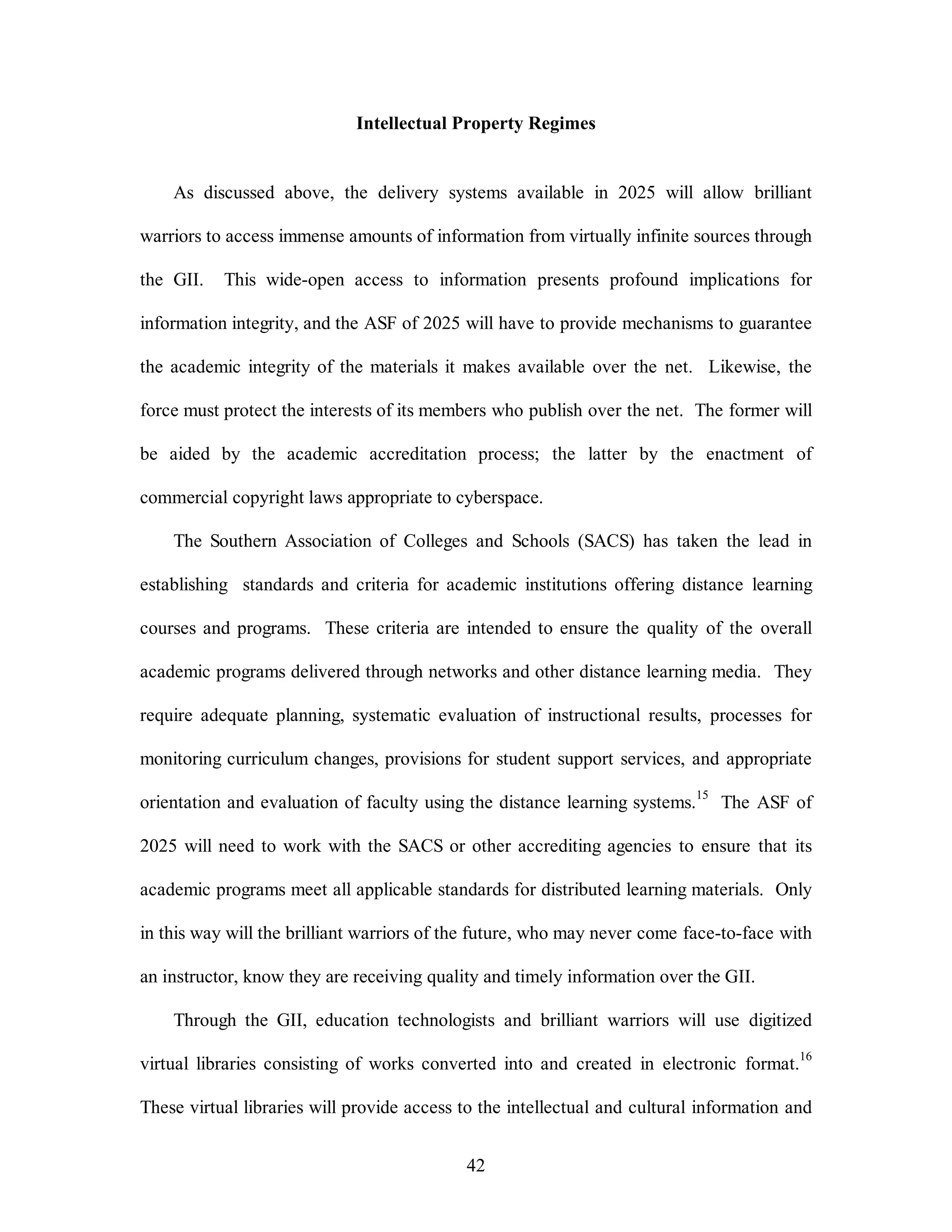

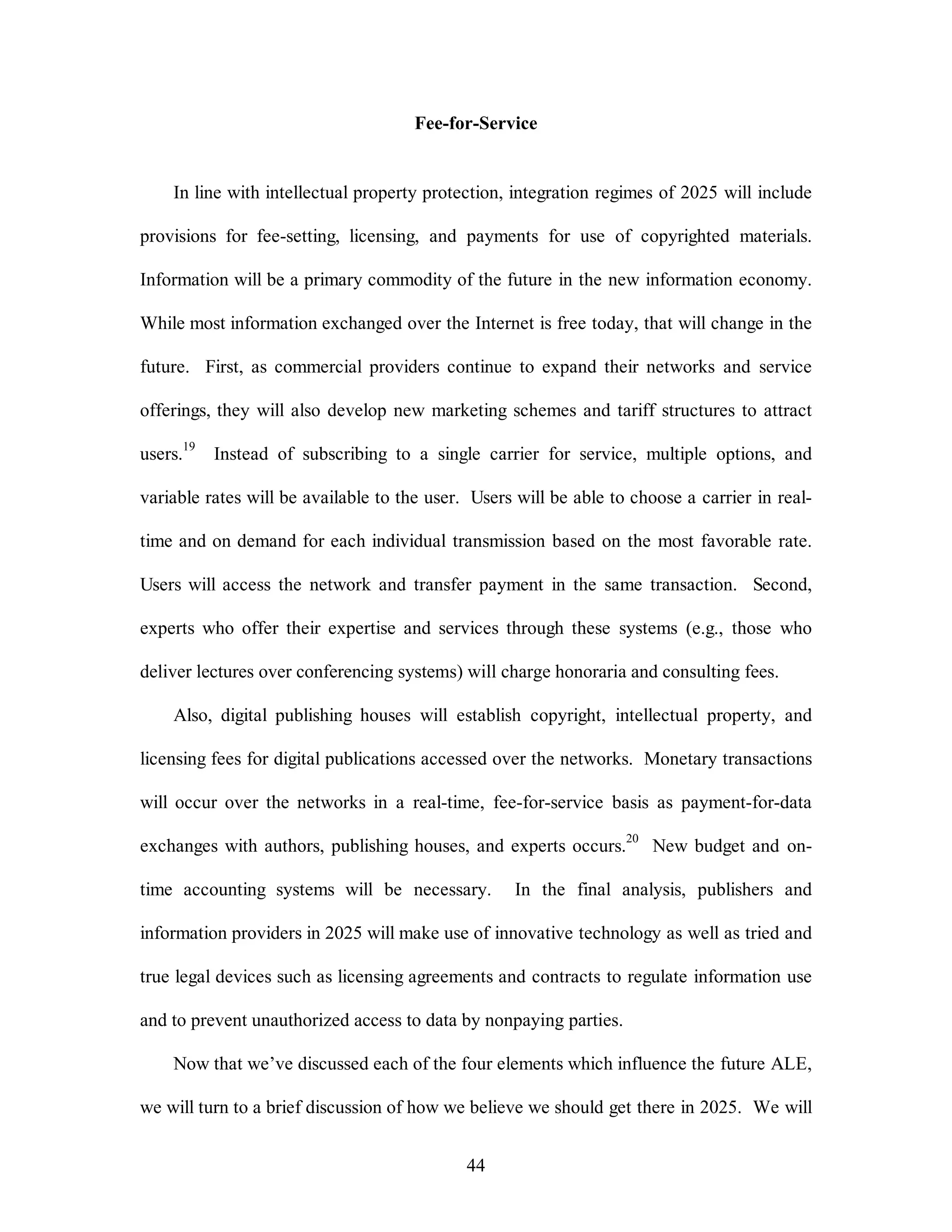
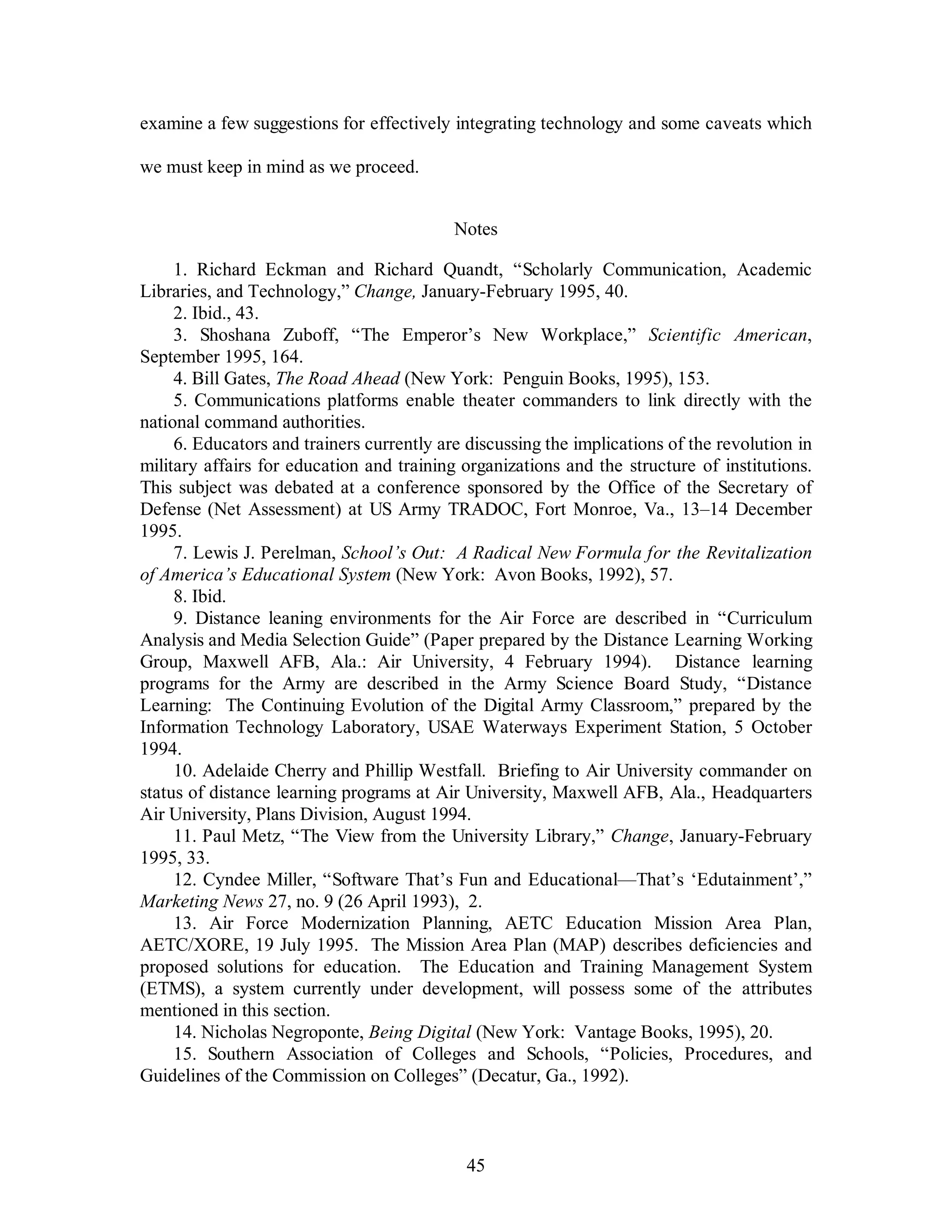
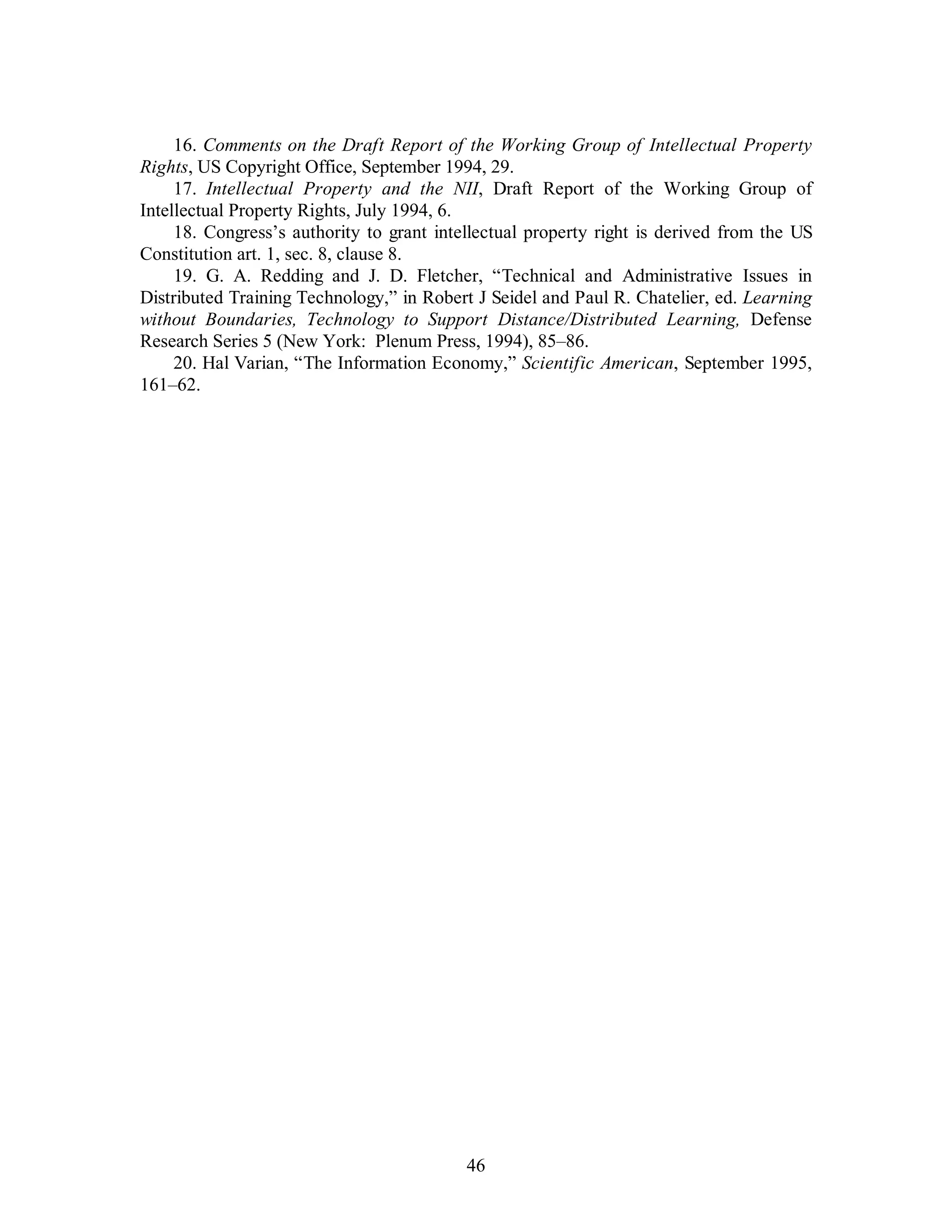
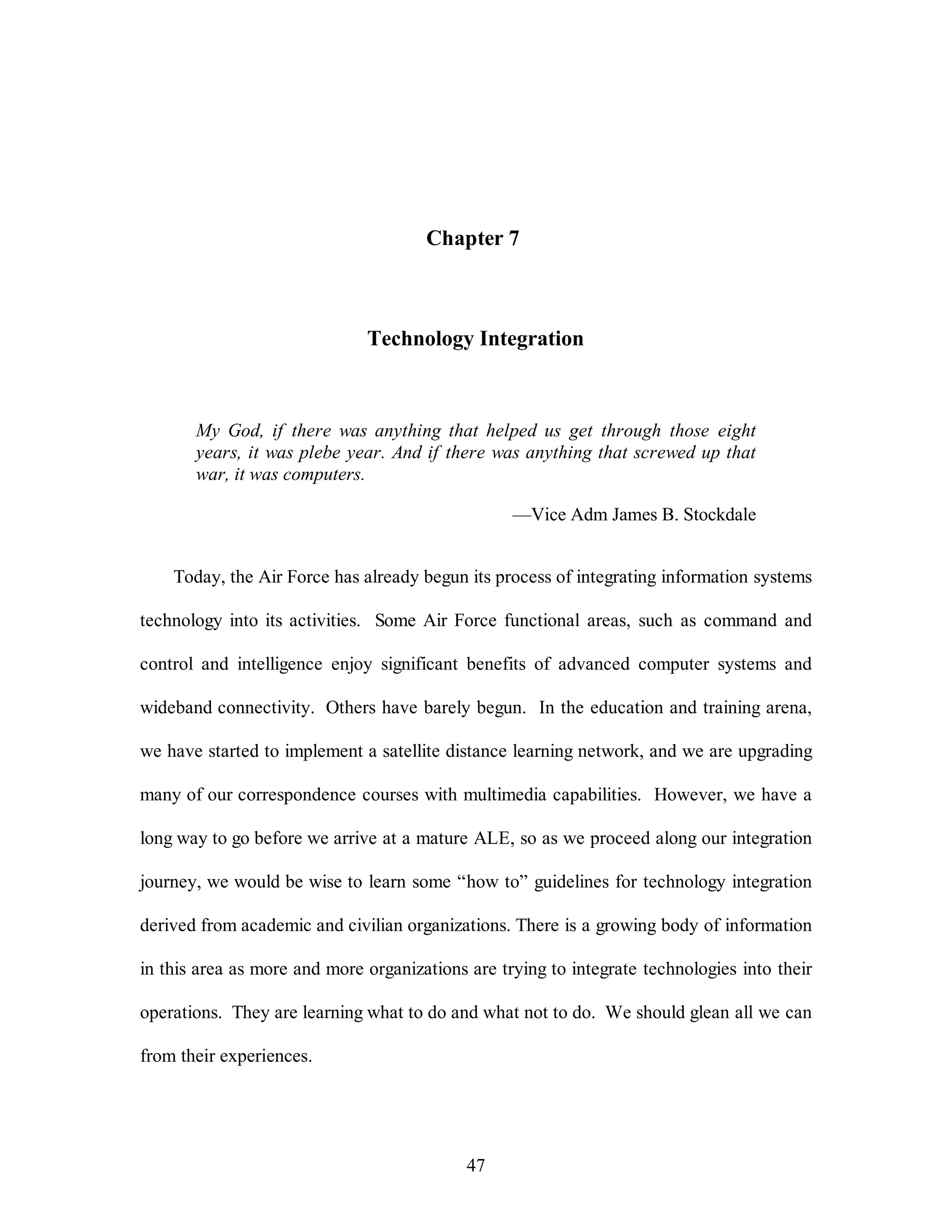
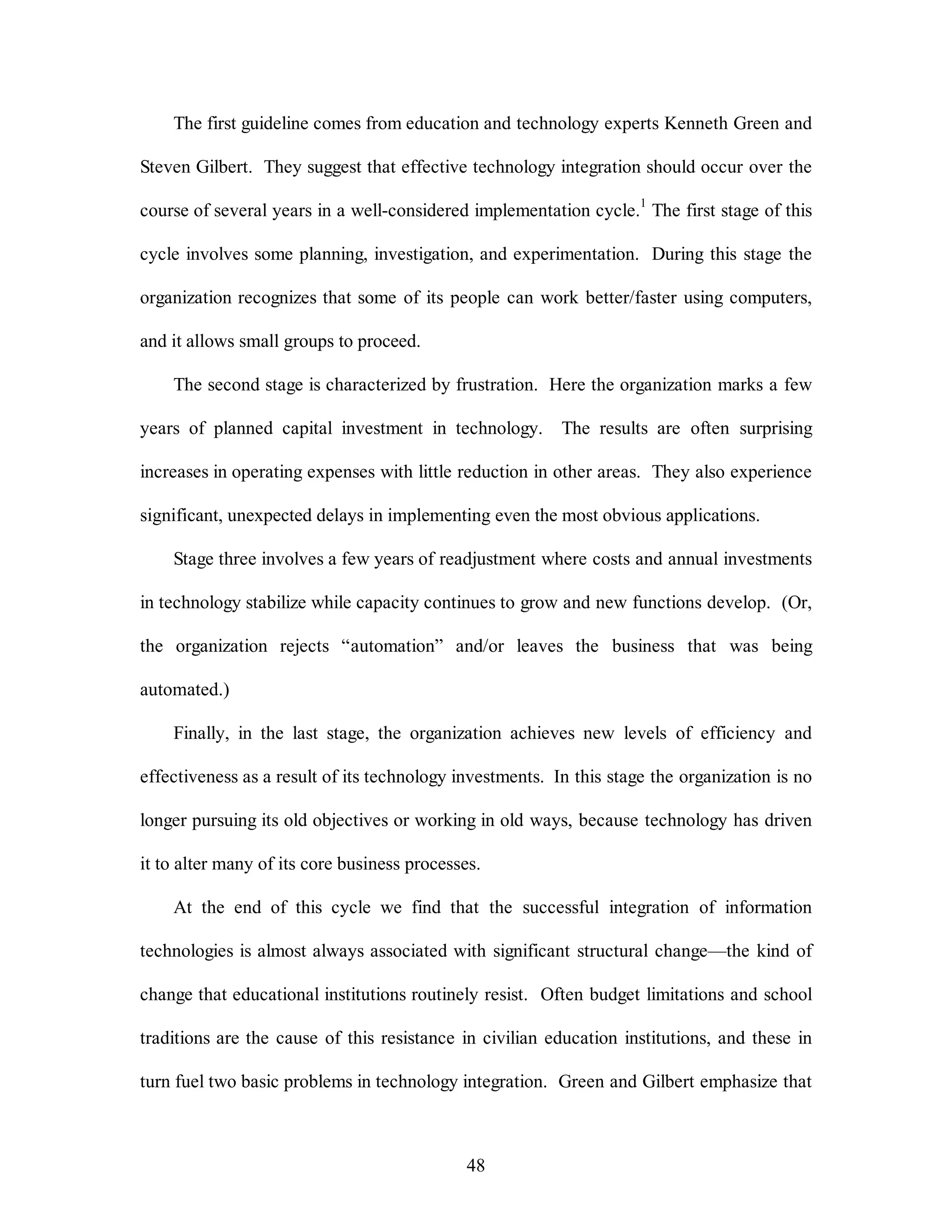
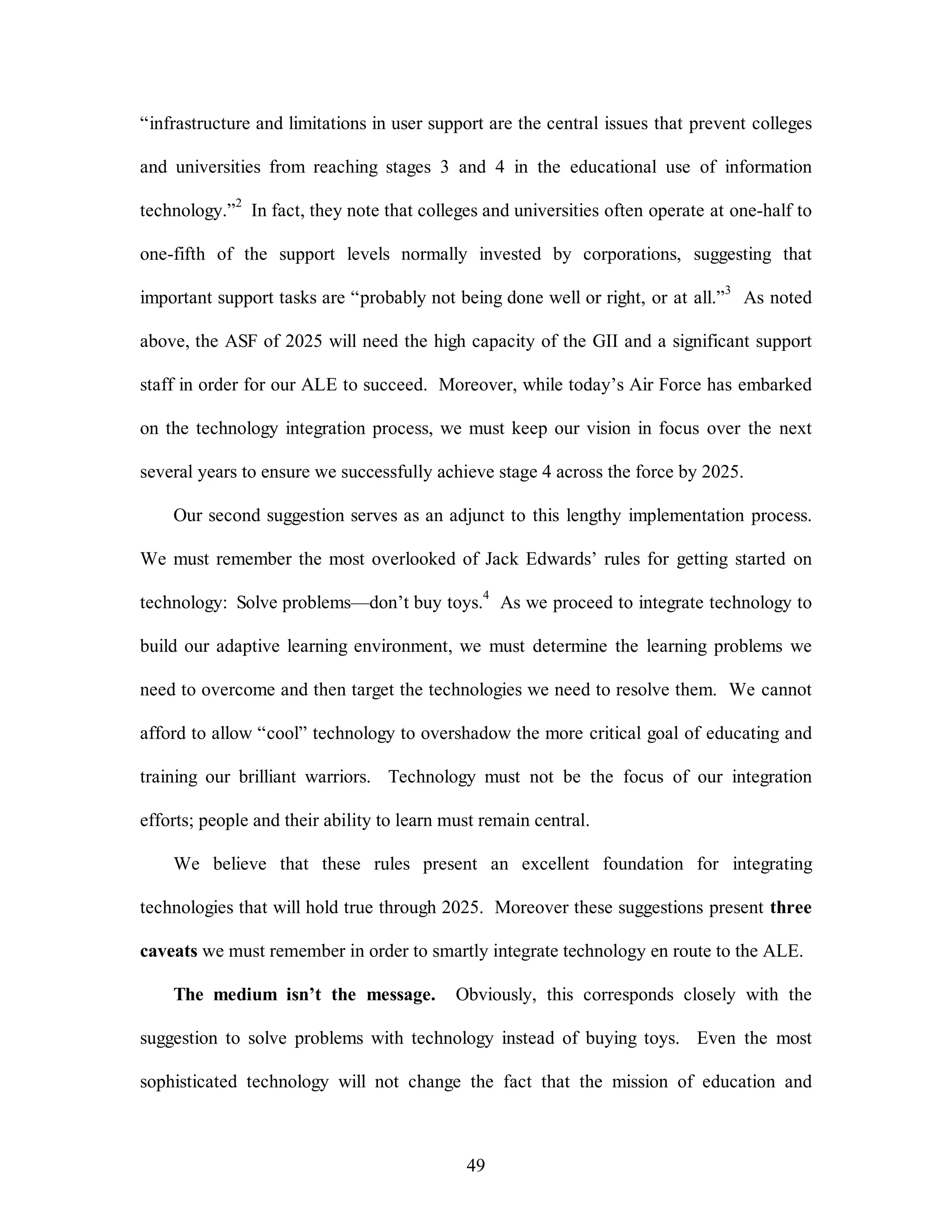
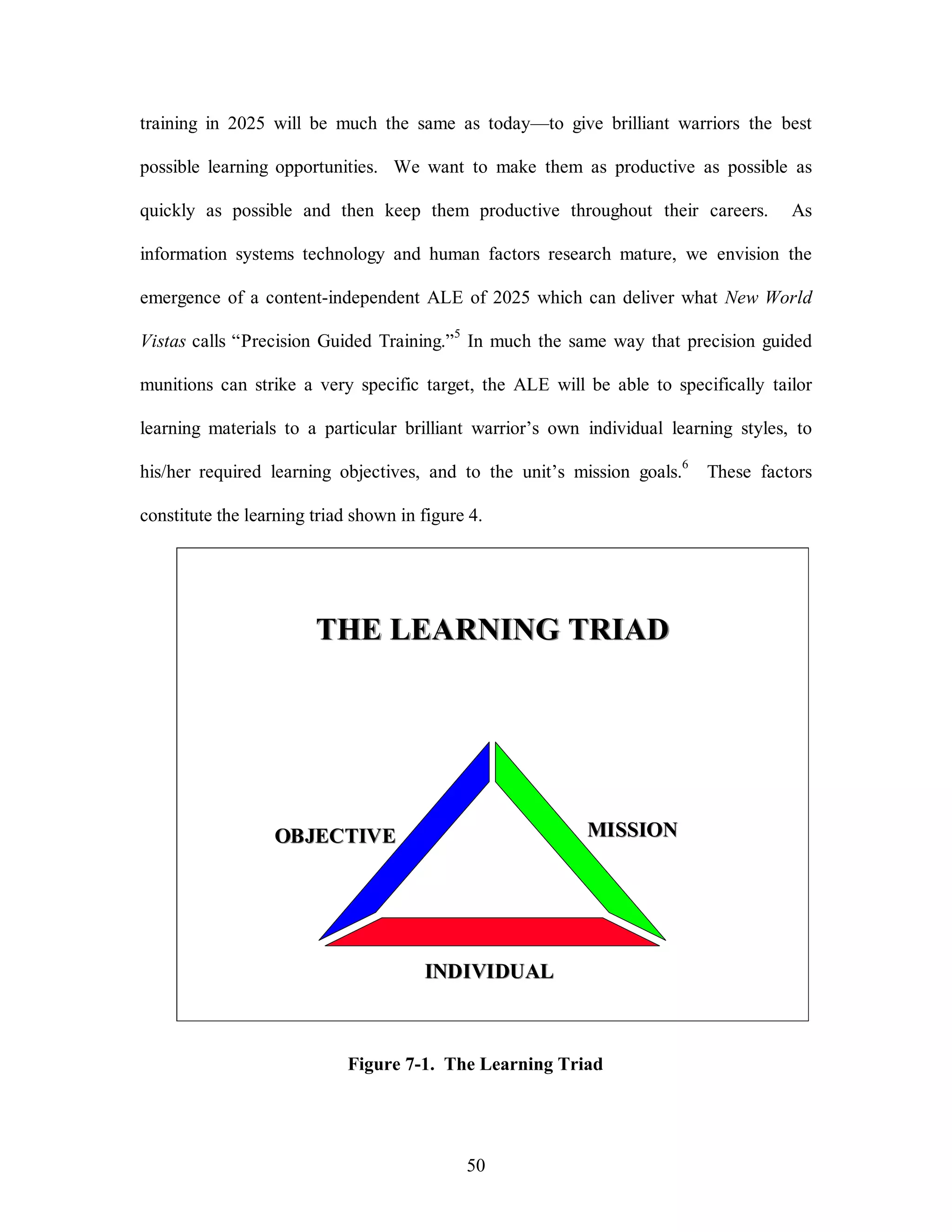
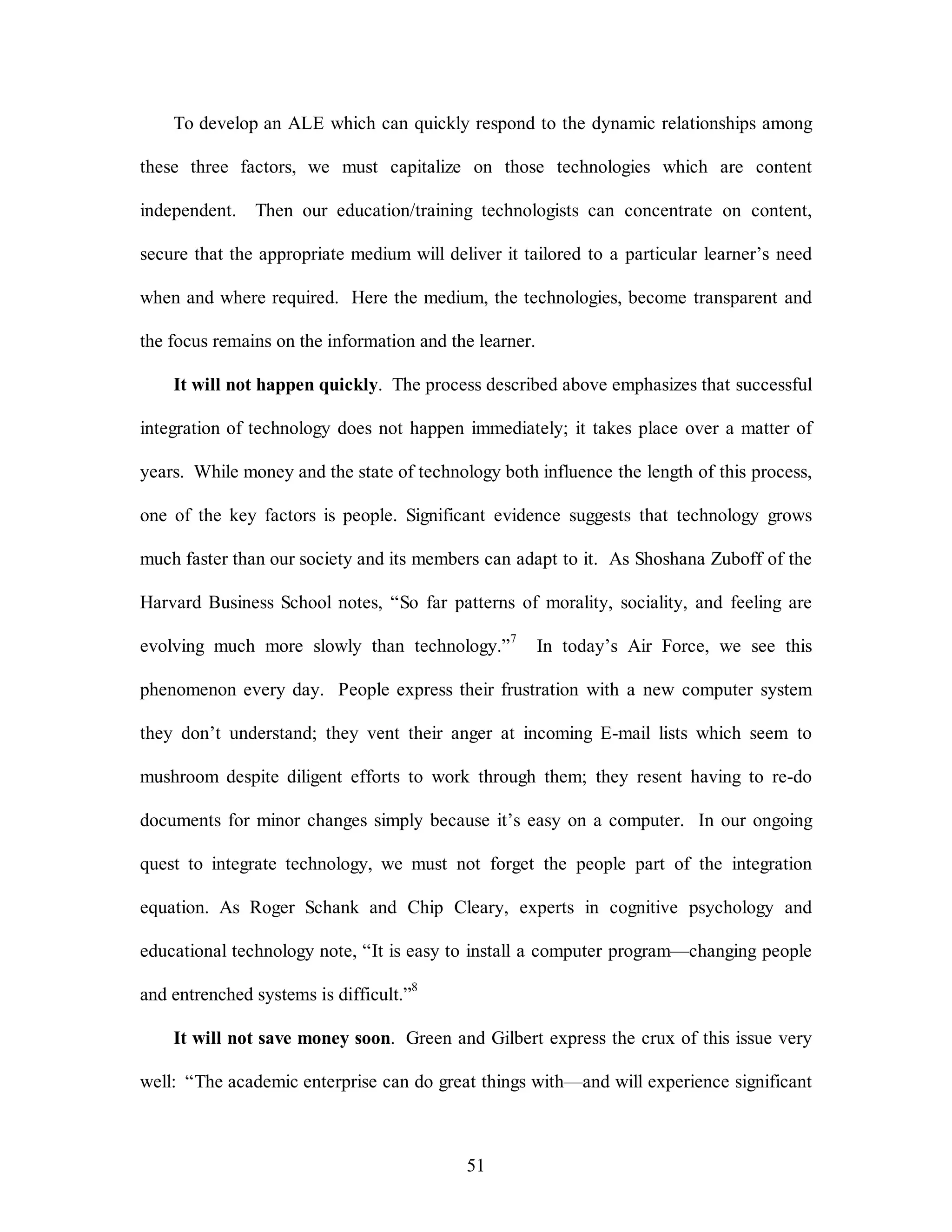
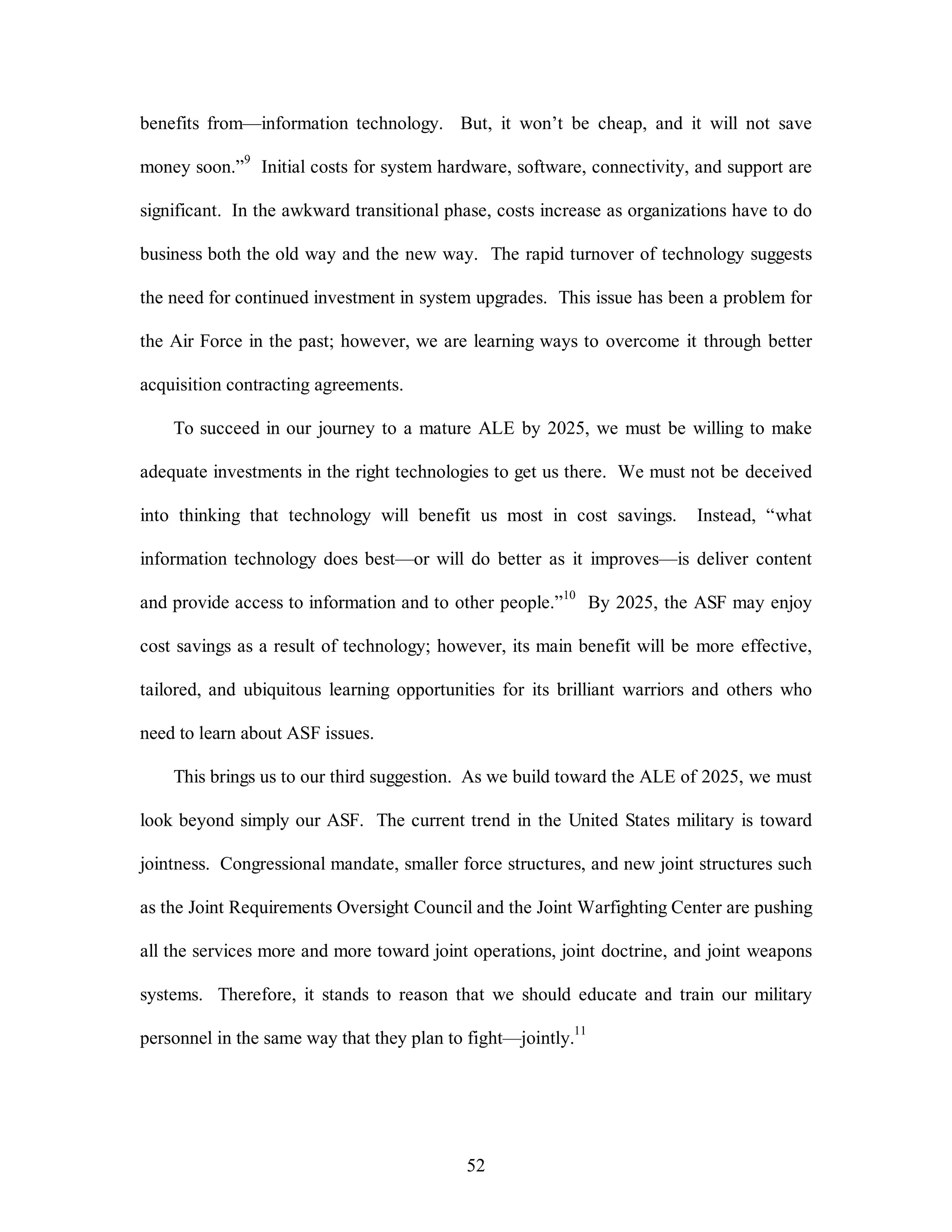
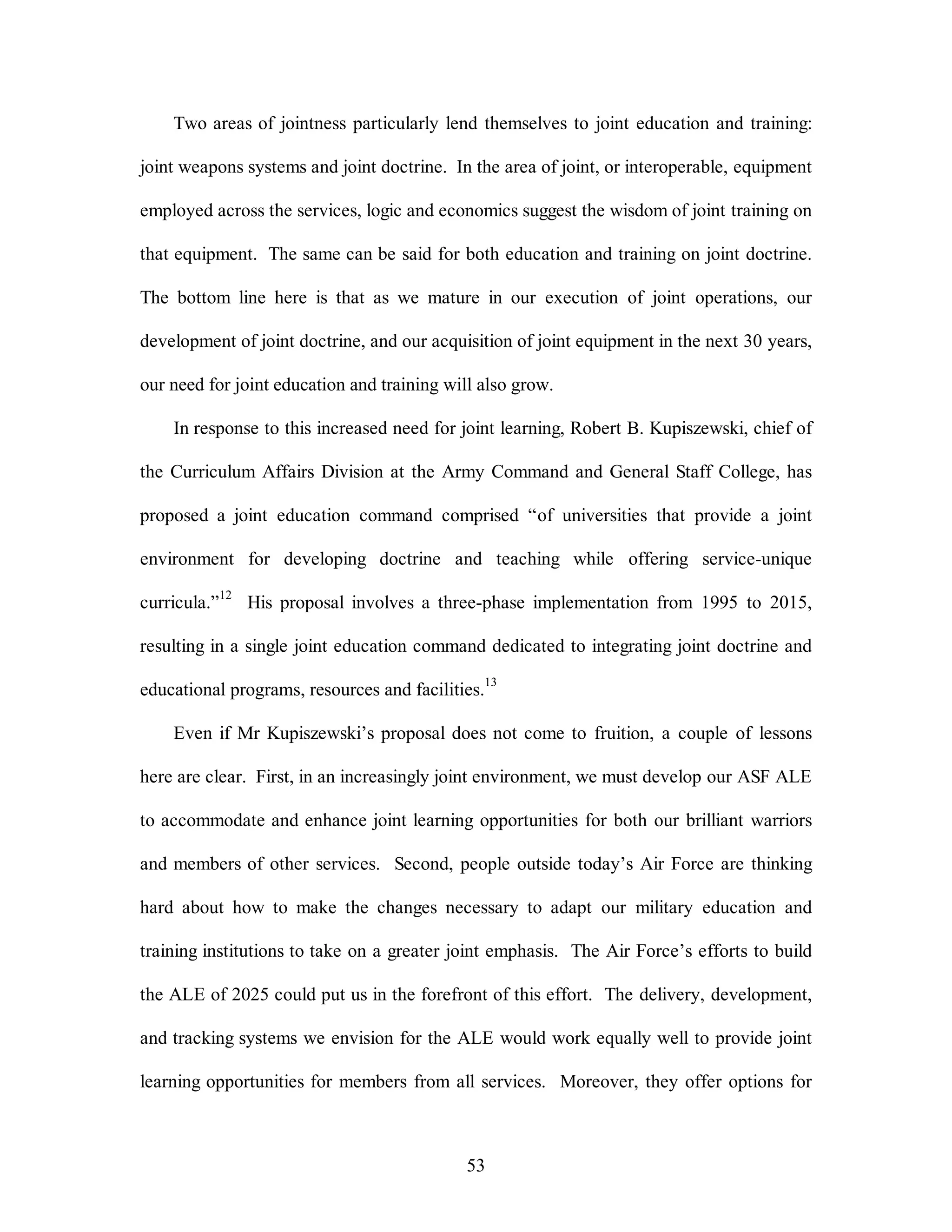
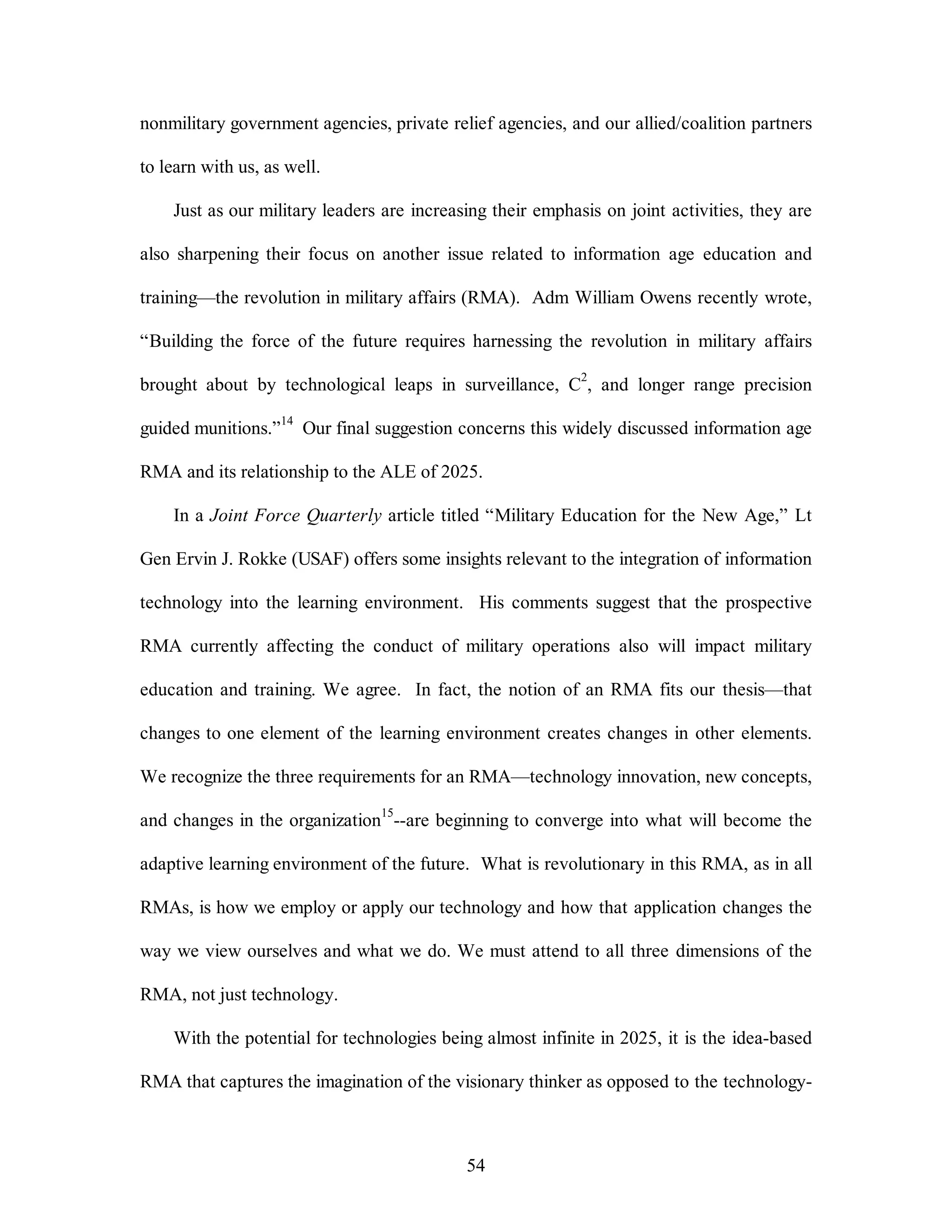
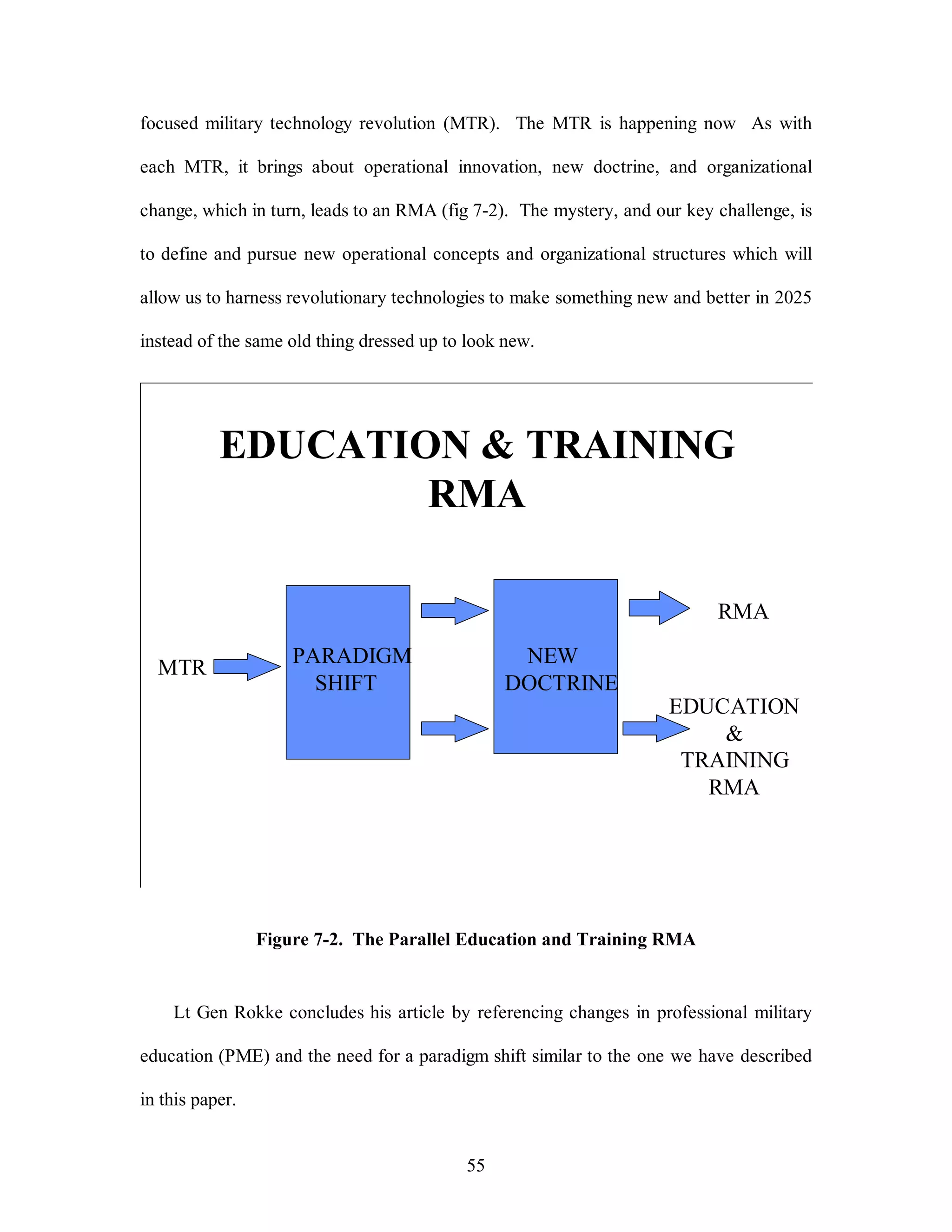
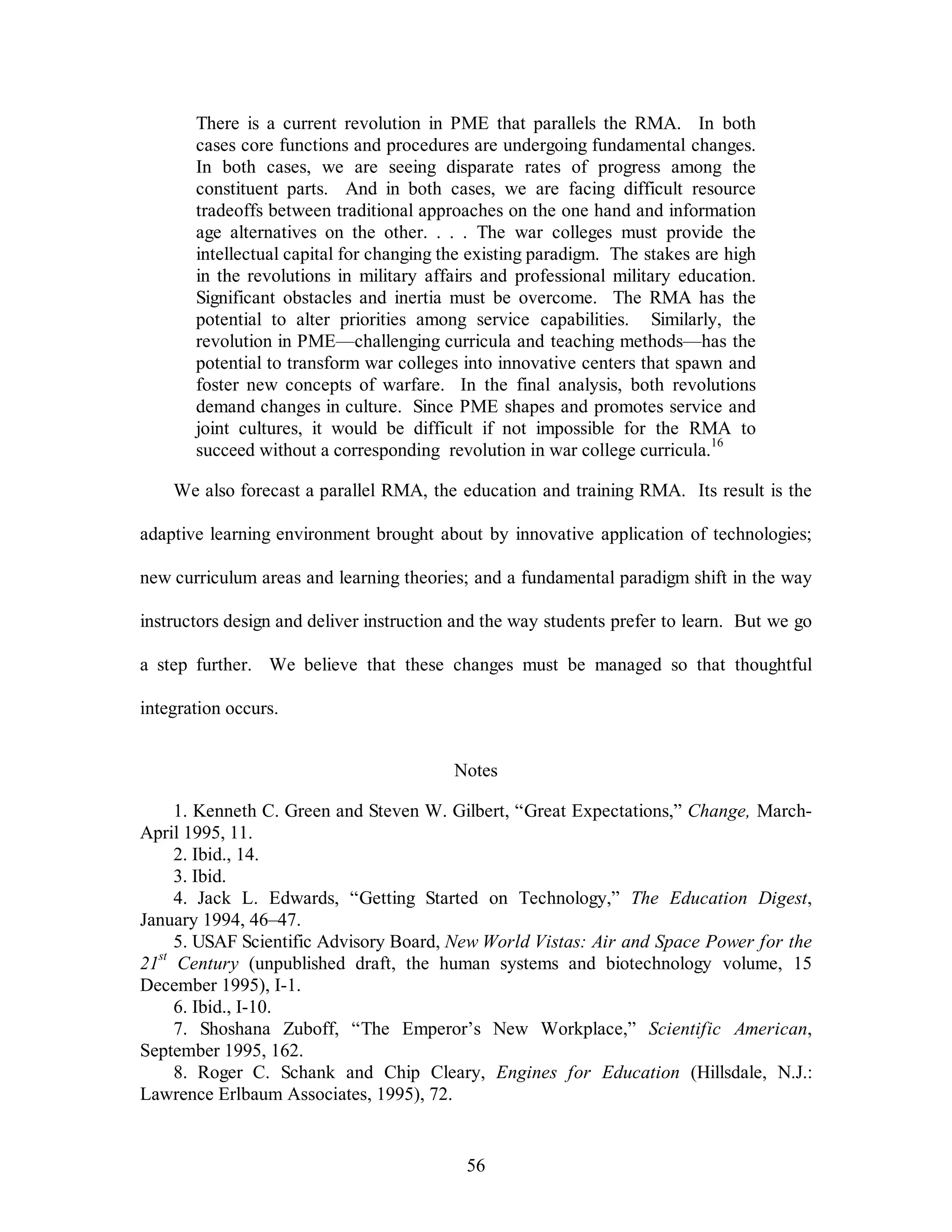
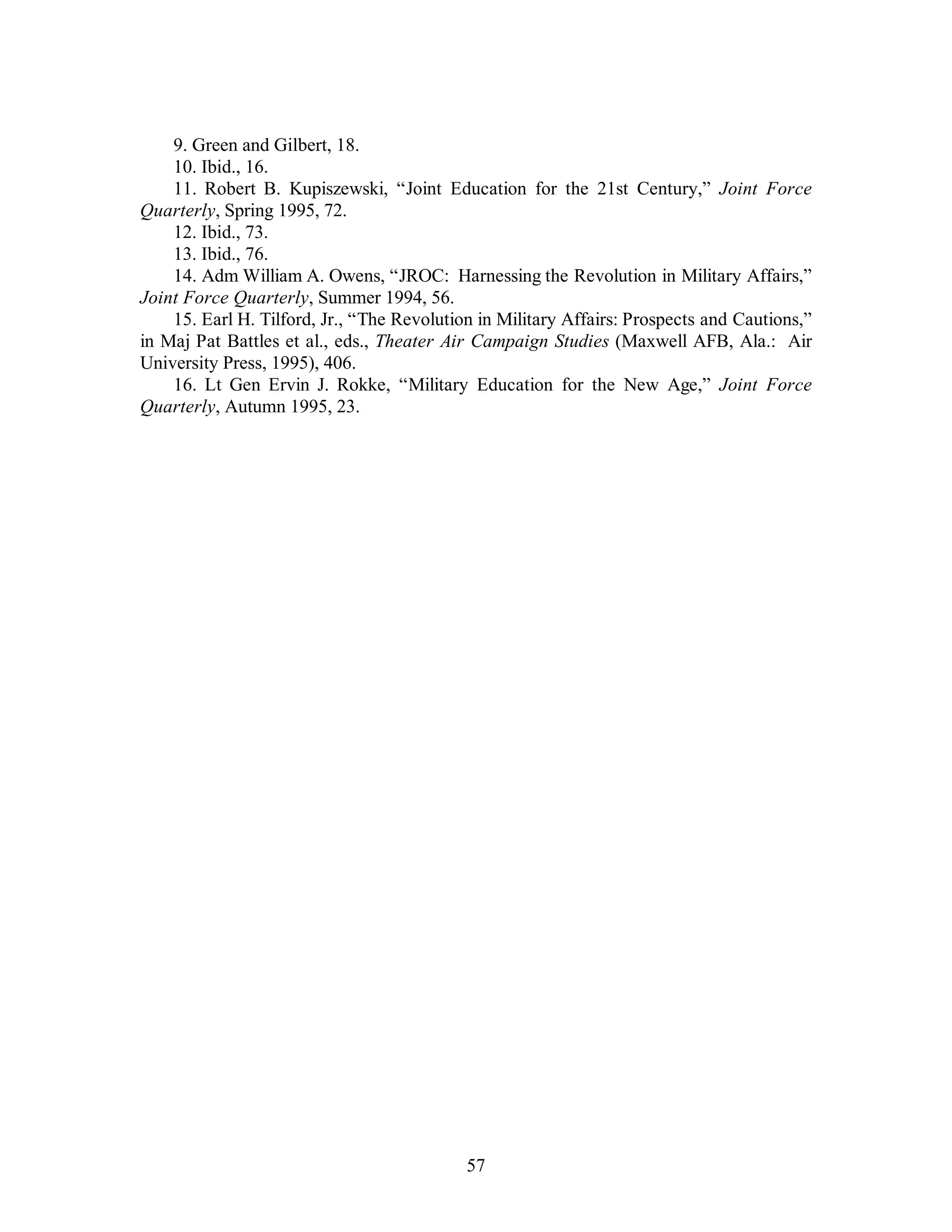
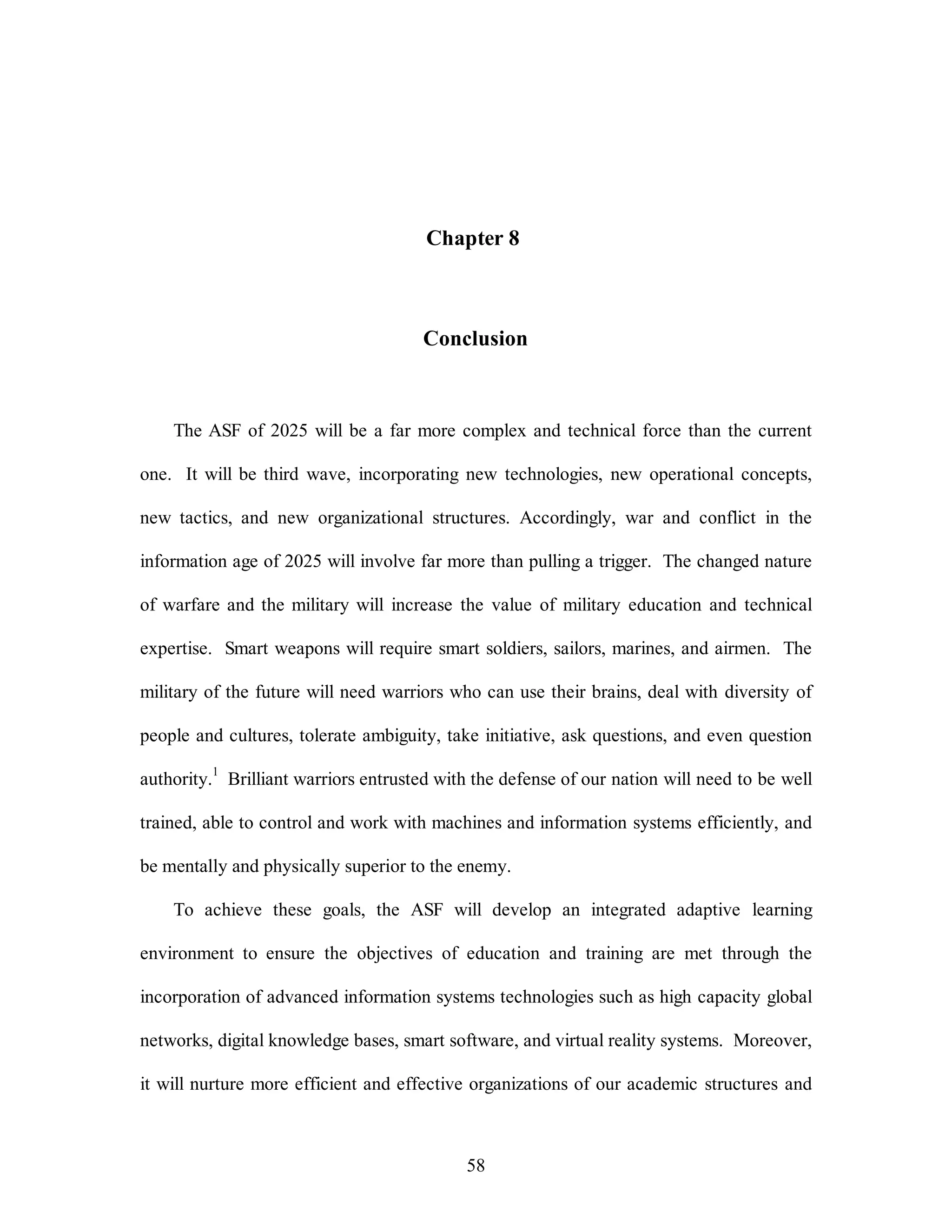
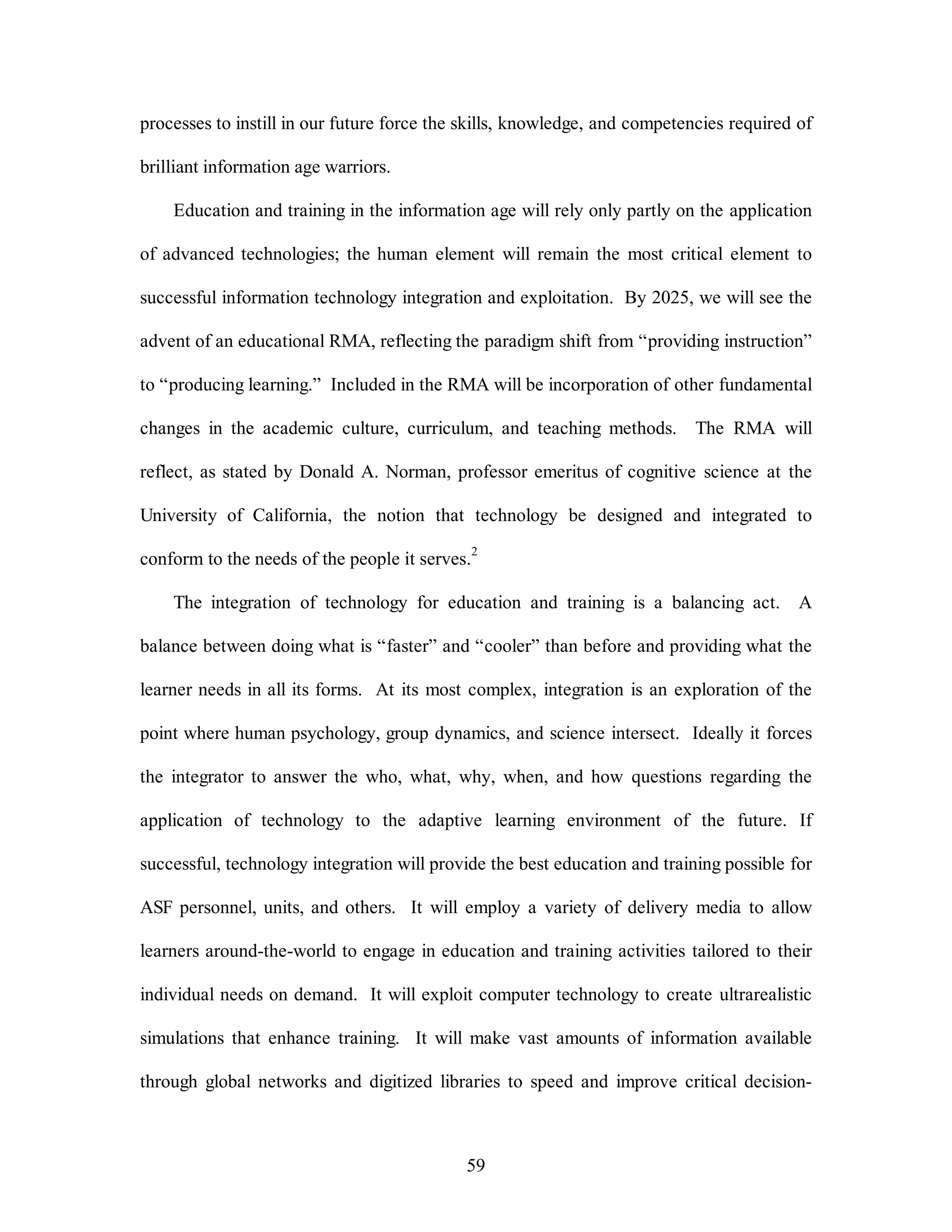
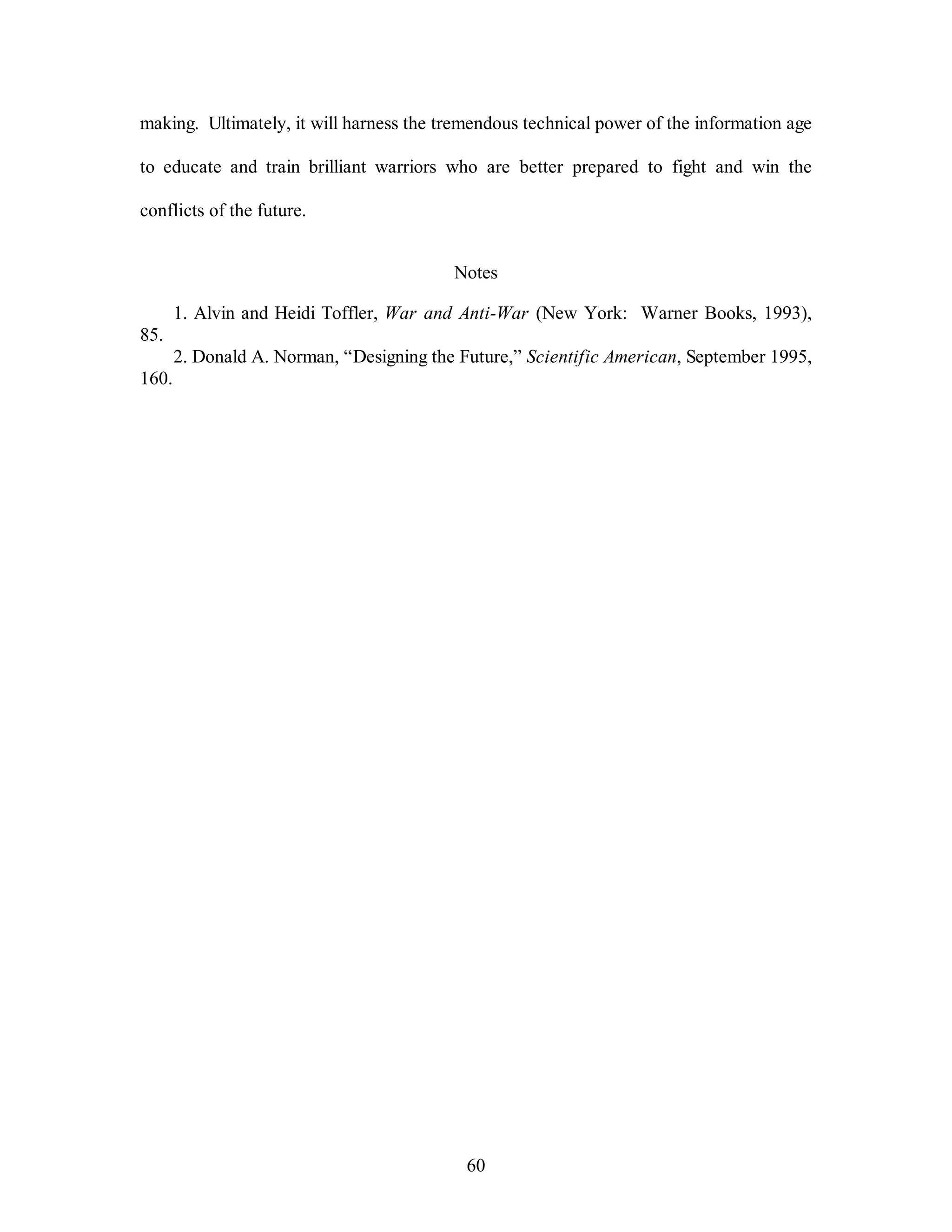
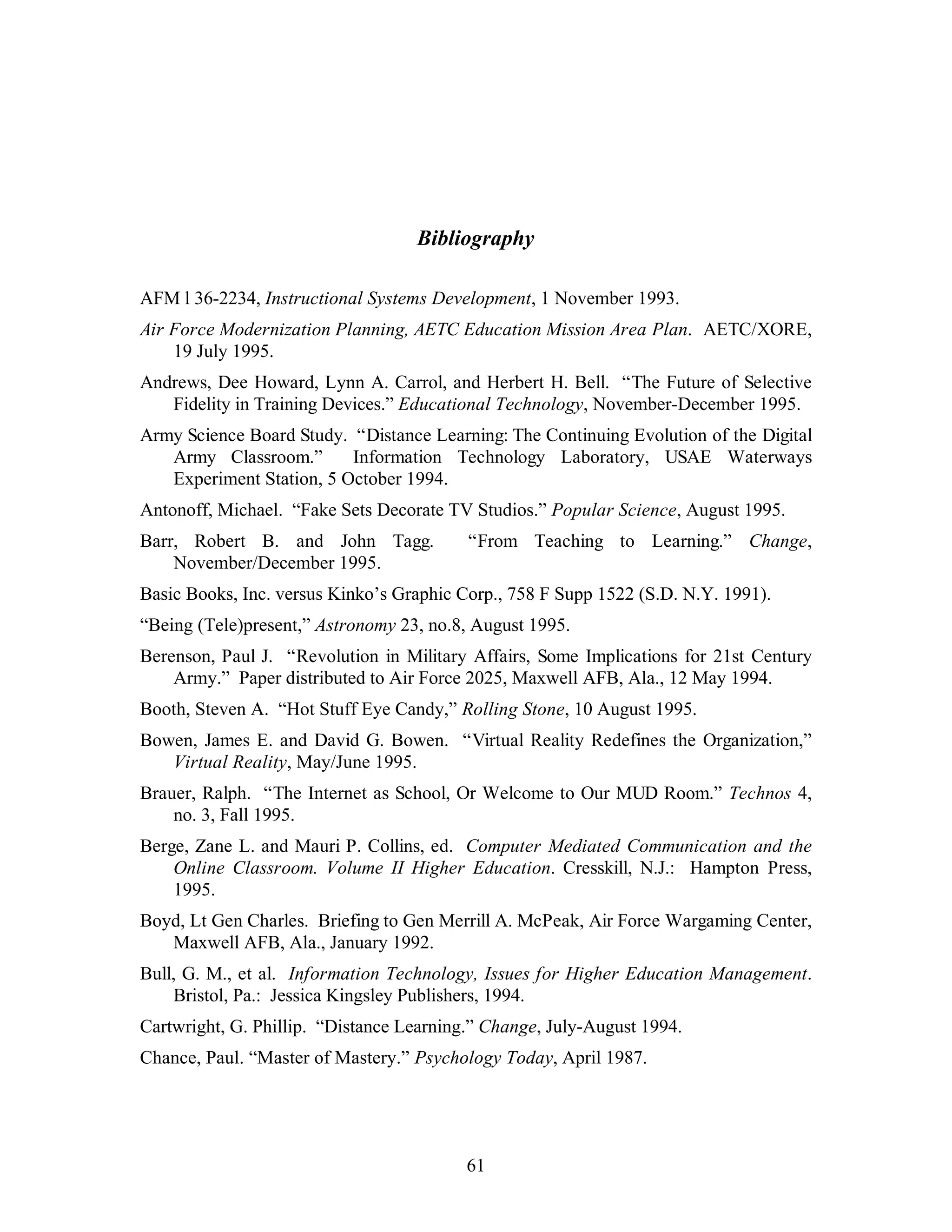
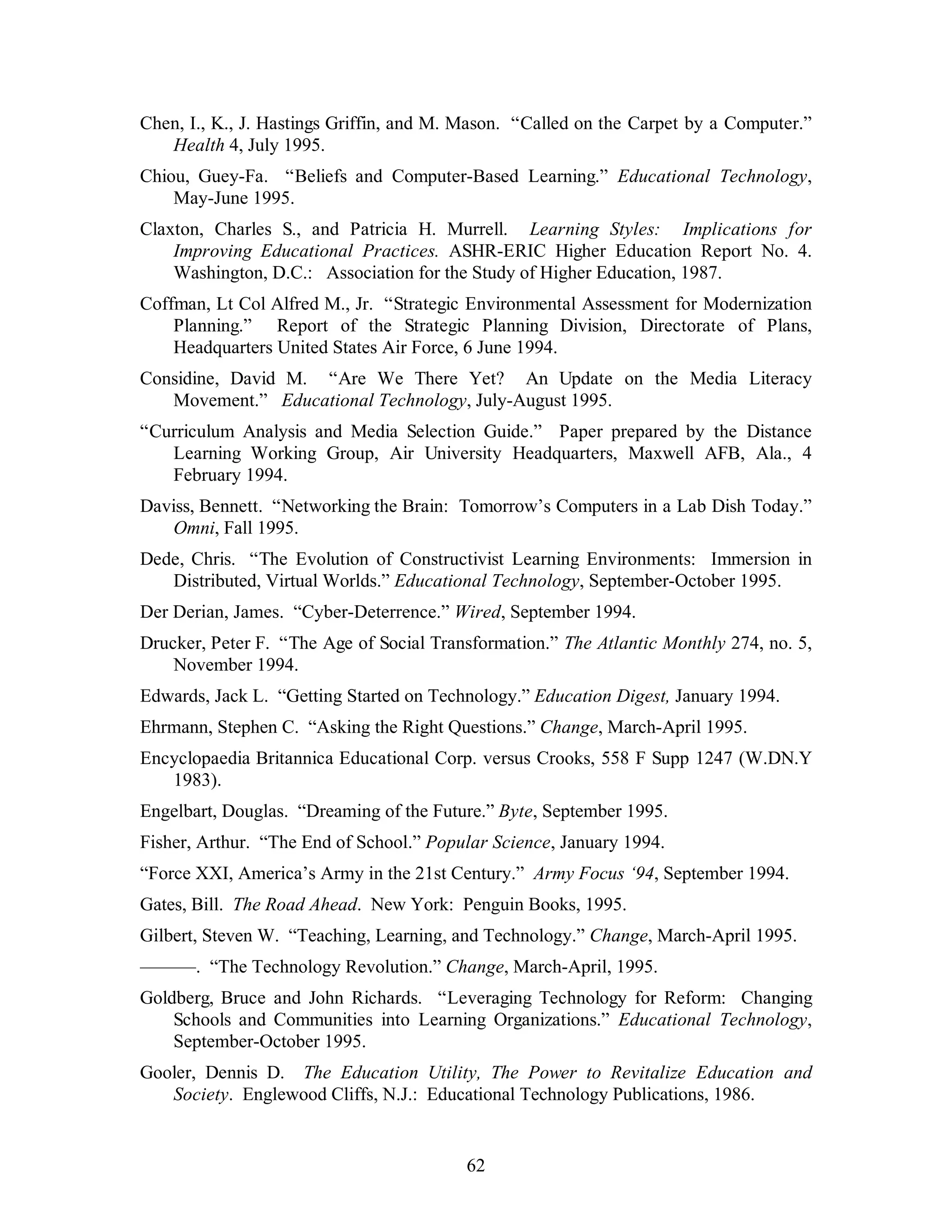

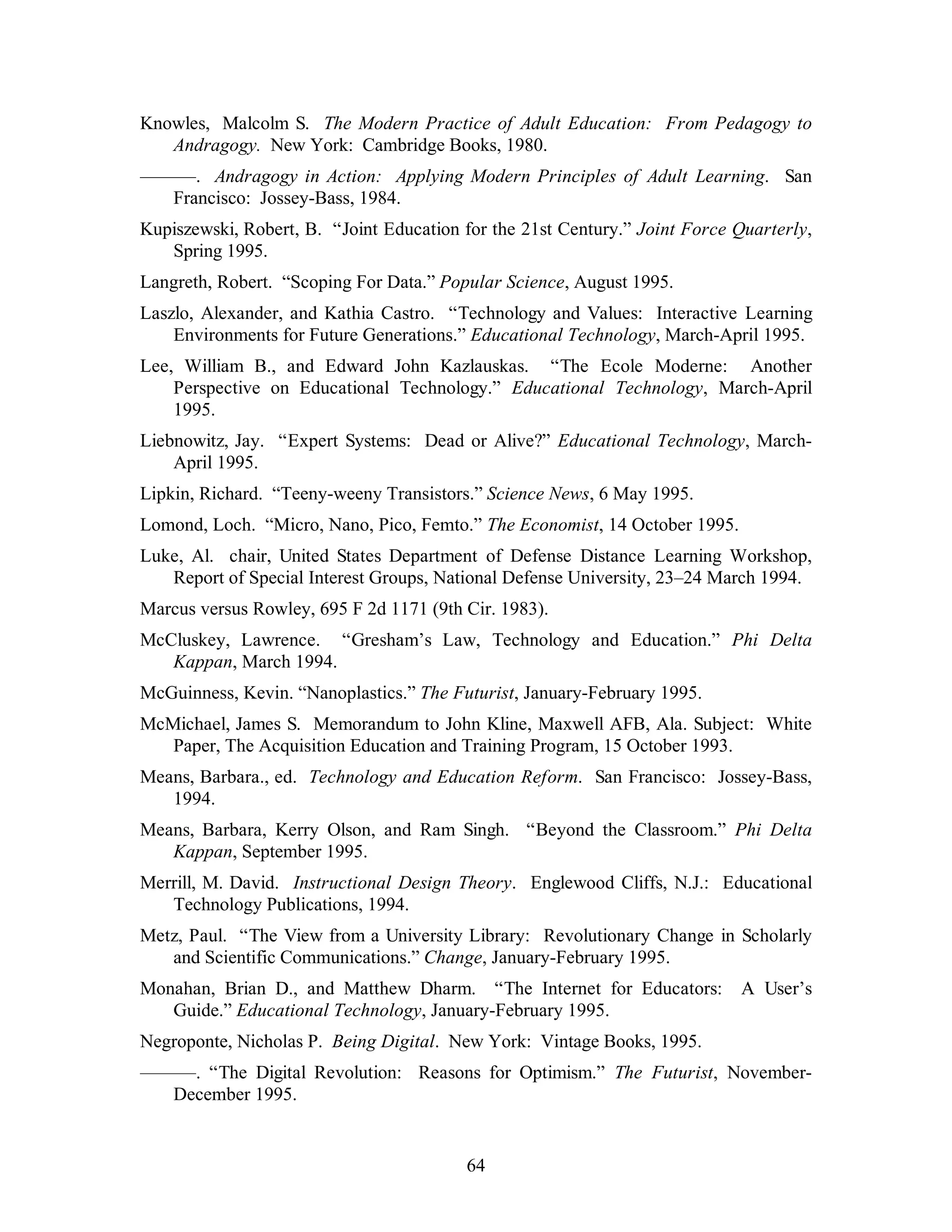
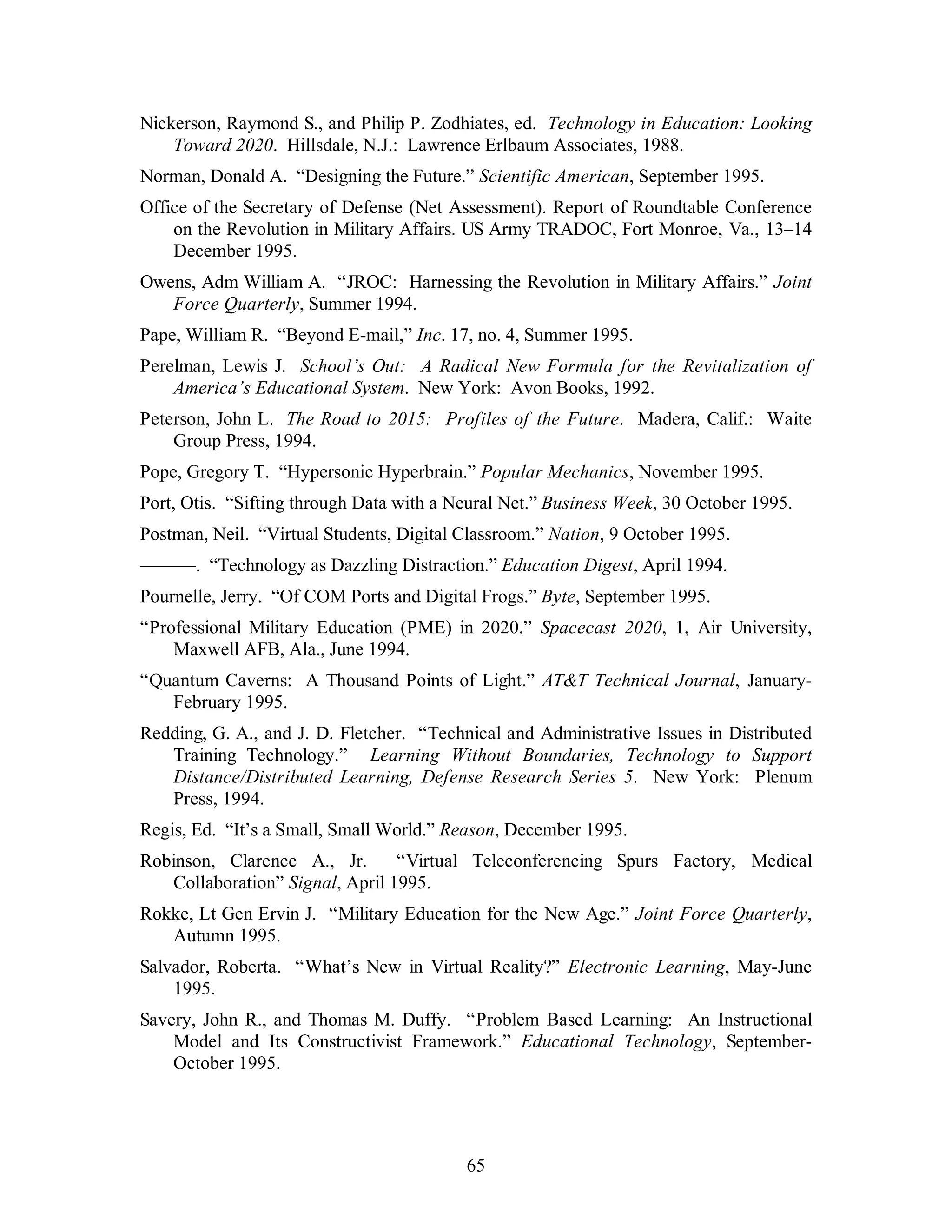
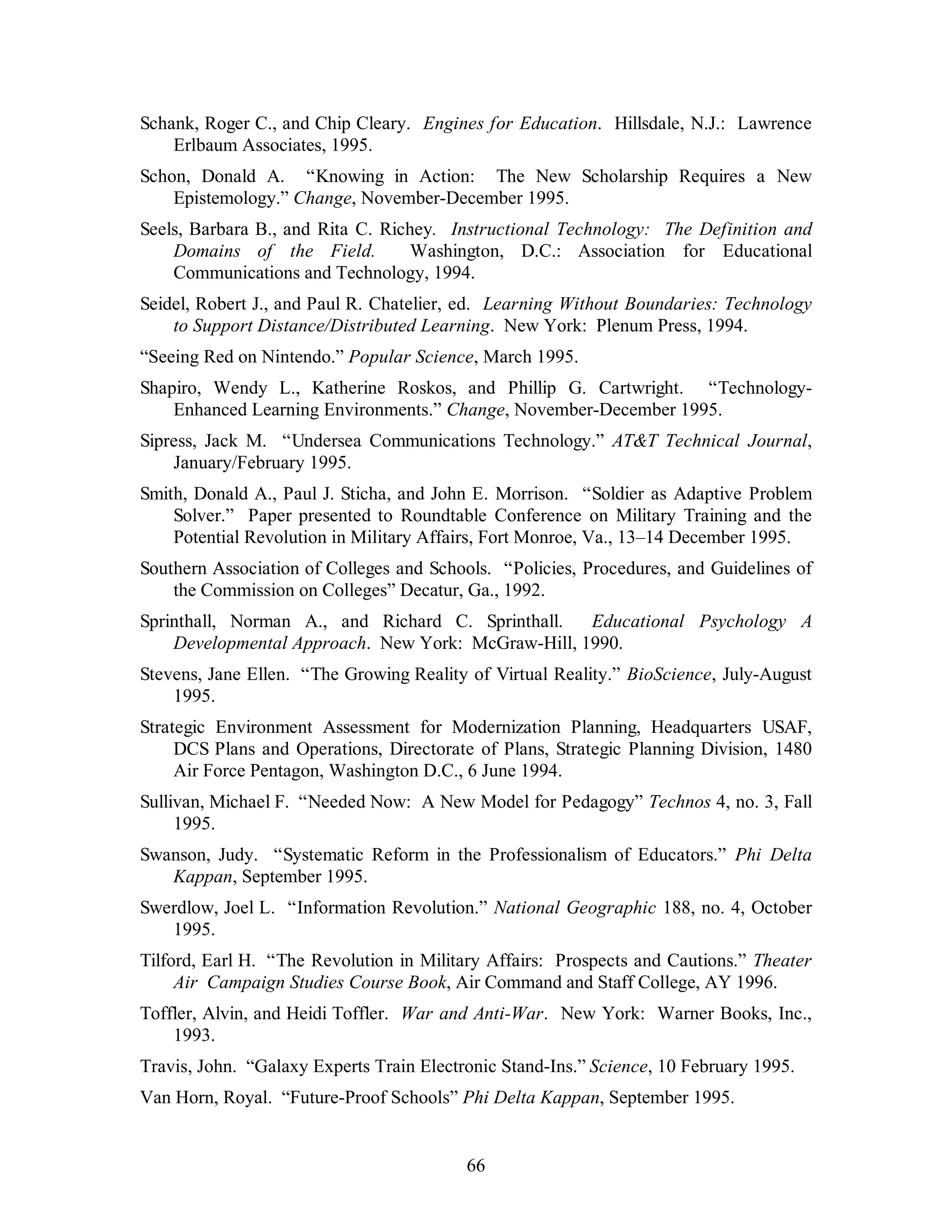
![Varian, Hal. “The Information Economy.” Scientific American, September 1995.
“Virtual Reality Brings Ancient Worlds to Life.” The Futurist, May-June 1995.
“Virtual Reality for Soldiers, Cops.” The Futurist, November-December 1995.
“Undersea Cable Upgrades Proven Feasible.” AT&T Technical Journal, January-
67
February 1995.
USAF Scientific Advisory Board. New World Vistas: Air and Space Power for the 21st
Century, Summary Volume. Washington, D.C.: USAF Scientific Advisory Board, 15
December 1995.
———. New World Vistas: Air and Space Power for the 21st Century. Unpublished
drafts, the Information Technology Volume and the Human Systems and
Biotechnology Volume. 15 December 1995.
Weinstein, Claire E., Ernest T. Goetz, Patricia A. Alexander, ed. Learning and Study
Strategies, Issues in Assessment, Instruction, and Evaluation. San Diego: Academic
Press, Inc., 1988.
Willis, Jim. “The Age of Multimedia and Turbonews.” The Futurist, September-October
1995.
Wilson, Brent G. “Metaphors for Instruction: Why We Talk About Learning
Environments.” Educational Technology, September-October 1995.
Wulf, William A. “Warning: Information Technology Will Transform the University.”
Issues in Science and Technology, Summer 1995.
Zarowin, Stanley. “Thinking Computers.” Journal of Accountancy, November 1995.
Zuboff, Shoshana. “The Emperor’s New Workplace.” Scientific American, September
1995.
Other Sources
American Association for Higher Education’s listserv on technology: AAHESGIT, on
line at LISTPROC@LIST.CREN.NET, in the body of the message, type “SUBSCIB
AAHESGIT [yourfirstname yourlastname]”.
Association for the Educational Communications and Technology, Inc., 1025 Vermont
Ave., NW, Suite 820, Washington, D.C. 20005.
Cartwright, G. Phillip. Bureau of Research Training and Services, Kent State University,
on line at pcartwri@kentvm.kent.edu.
Educational Technology Publications, Inc., 700 Palisade Ave., Englewood Cliffs, NJ
07632, (201) 871-4007; Fax (201) 871-4009.
Flashlight Project (a three-year effort to develop and share evaluation procedures.
Colleges and universities will be able to use these procedures to assess their
educational strategies for using technology), Listserv on Internet:
listproc@listproc.wsu.edu with one line message “Subscribe f-light yourfirstname
yourlastname”.](https://image.slidesharecdn.com/vol1ch10-140914105049-phpapp01/75/Vol1ch10-73-2048.jpg)
